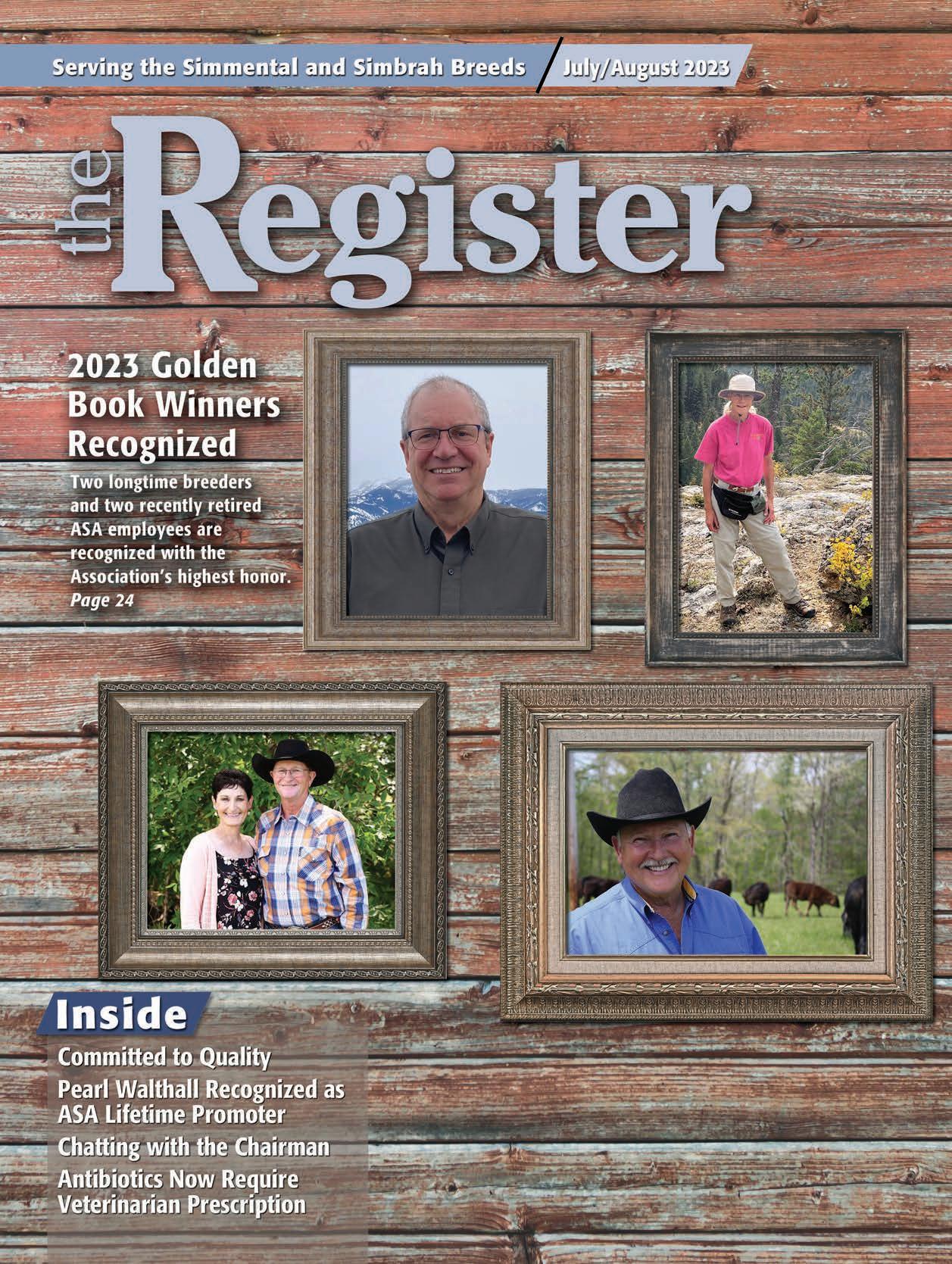
www.simmental.org
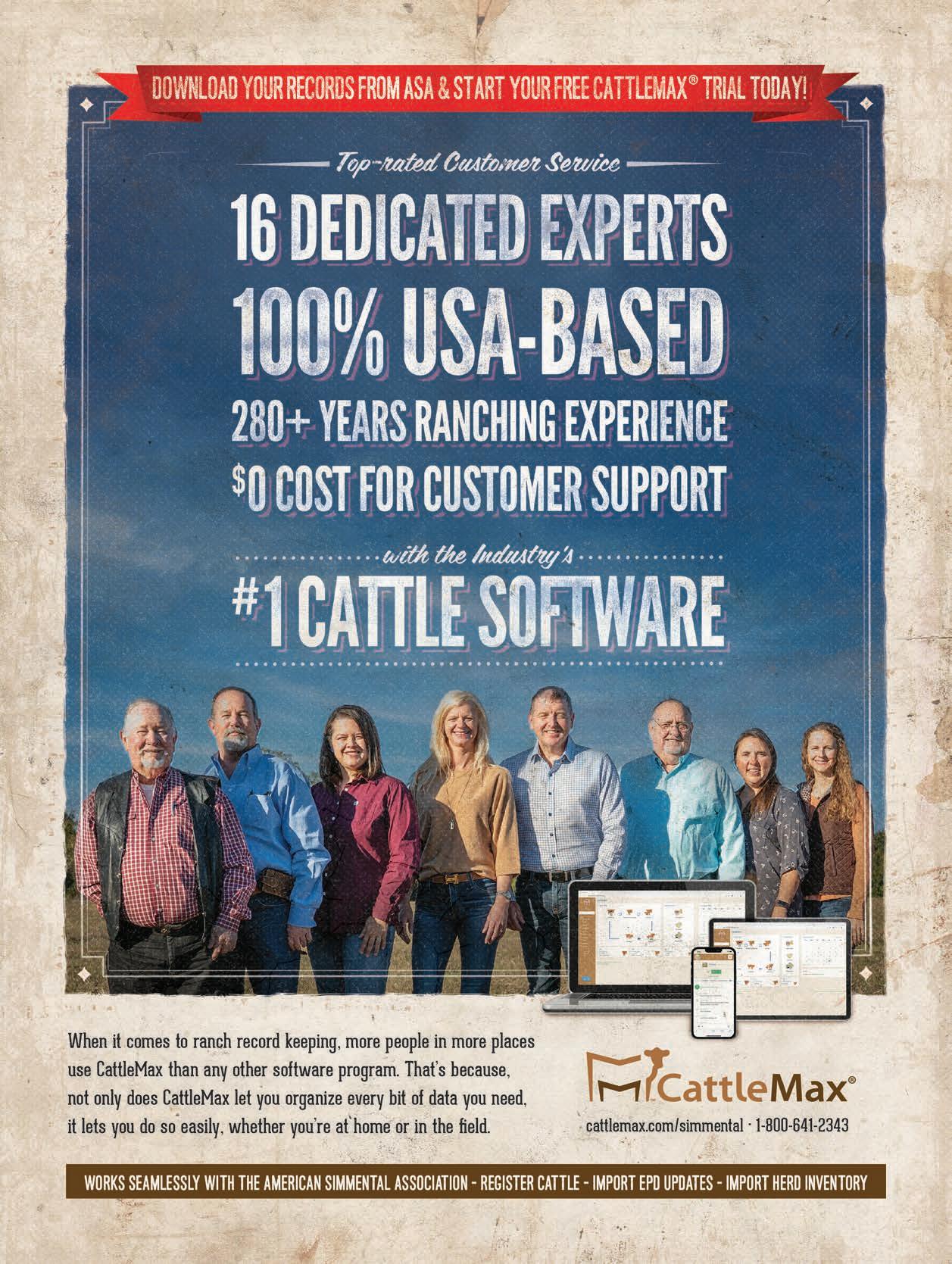

ASA Spotlight Committed to Quality
by Lilly Platts
Triangle H Ranch is a multi-generation cow/calf, feedlot, and farming operation owned by the Hands family. Sam Hands, who heads the family’s feedlot operation, discusses his side of the business and the Simmental breed’s influence.

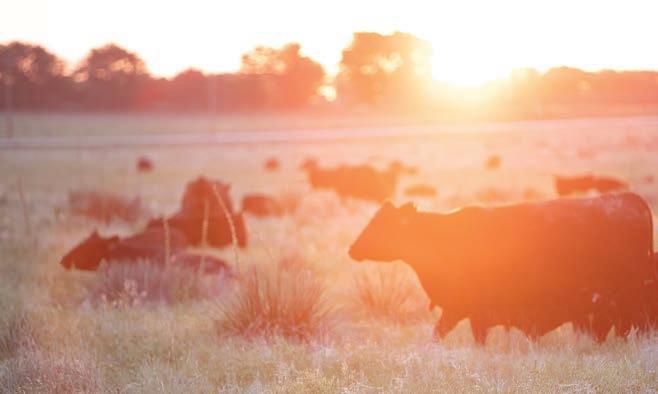
16 Chatting with the Chairman
by Lilly Platts
ASA Board Chairman Doug Parke discusses the opportunities, challenges, and strengths of the Simmental community.

24 2023 Golden Book Awards
by Lilly Platts and Dan Rieder
This year, two longtime breeders and two recently retired ASA employees are recognized with the Association’s highest honor.

32 2023 Lifetime Promoter Award
by Lilly Platts
Pearl Walthall has been a livestock photographer and member of the Simmental community for decades. ASA is recognizing her dedication to the breed and industry.
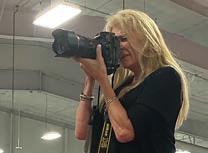
34 Antibiotics Now Require Veterinarian Prescription

 by Lilly Platts
by Lilly Platts
Farmers and ranchers must now obtain a prescription for antibiotics. GFI #263 went into effect on June 11, 2023.
16 2 Register / July/August 2023 CONTENTS the Register u July/August 2023 u Volume 36, Number 9
24
32 10
34
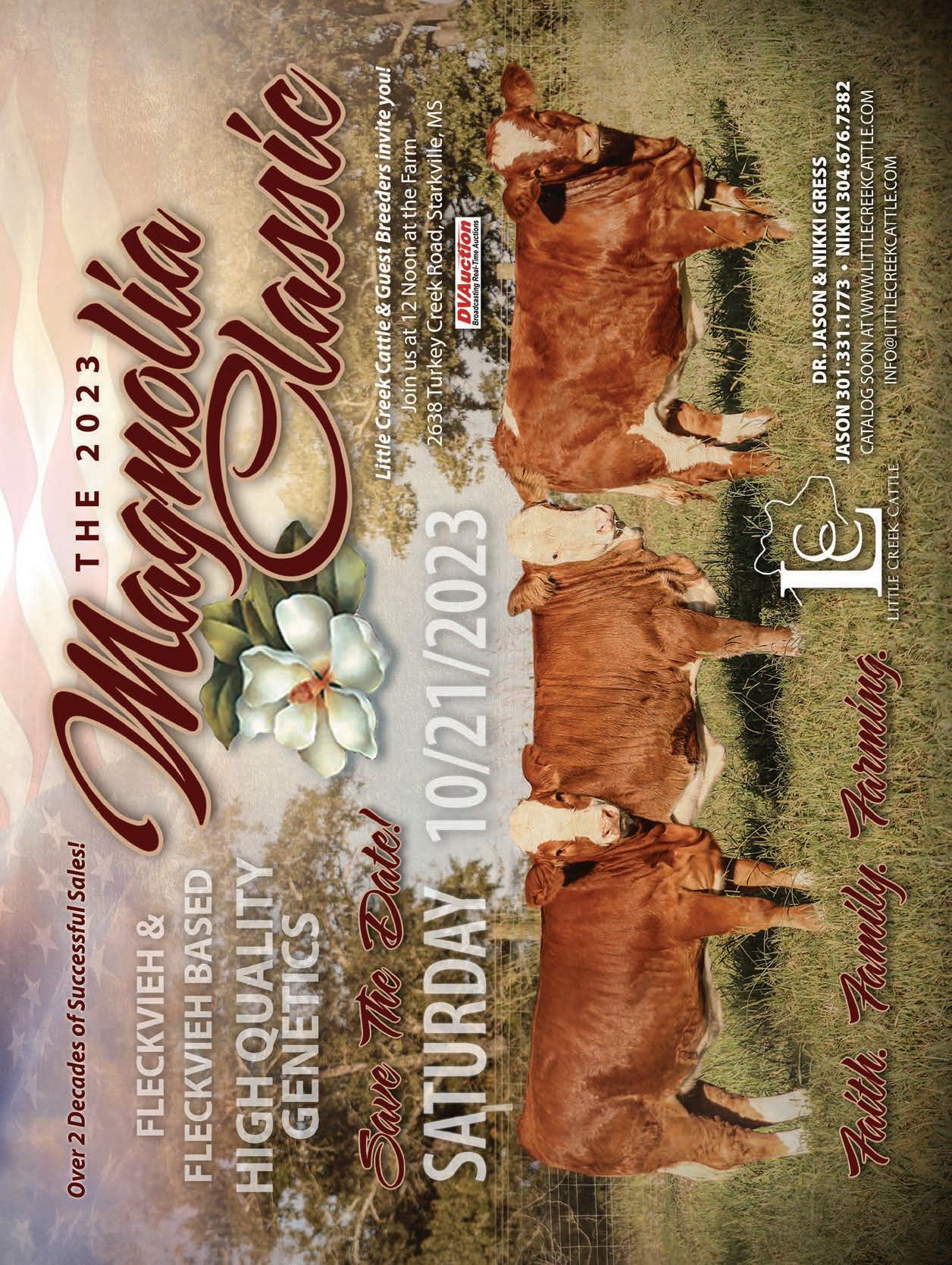


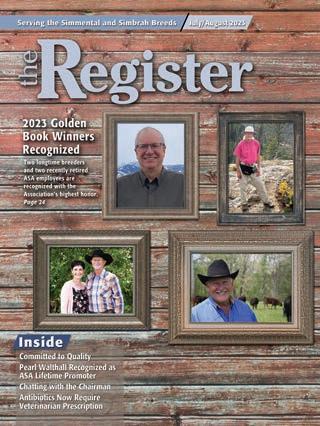





the Register (Issn: 0899–3572)is the official publication of the American Simmental Association, published monthly, except bimonthly, in December/January, May/June, and July/August by ASA Publication, Inc., One Genetics Way, Bozeman, Montana 59718, and is a wholly owned, for-profit subsidiary of the American Simmental Association. Periodicals Postage paid at Bozeman, MT, and at additional mailing offices. Subscription Rates: $50 (US), $100 (US) First-Class, $150 (US) All International Subscriptions. POSTMASTER: Send address changes to the Register, One Genetics Way, Bozeman, Montana 59718. Printed in USA CONTENTS the Register u July/August 2023 u Volume 36, Number 9 About the Cover This year, Hart Simmentals, Neil Martin, Cynthia Conner, and Jim Largess are the recipients of the Association’s highest honor. ASA Voices 8 Trustee Viewpoint 8 From the Headquarters 40 AJSA Connection Data & DNA 35 Most Prolific Donor Cows 57 ASA Fee Schedule ASA & State Updates 36 Bulletins 38 Fleckvieh Forum 56 New Members Industry Insight 41 International 42 Beef Business 44 Cutting Edge 45 Corporate Report Sales & Shows 52 Sale Results 56 Show Circuit 58 Date Book Cattle Trivia 39 Cow Sense The Fine Print 60 Rates & Policies 62 Advertiser Index 4 Register / July/August 2023 Member of C H E C K U S O UT O N LI N E www.simmental.org Have you visited simmental.org lately? The main page of the website has a new look highlighting ASA spotlight articles, industry news, and easy to navigate location for articles in a series. simmental.org makes it easy for you. Sections include: © Industry News and Events © ASA Spotlight © EPD FAQs © Women of ASA © Down to the Genes
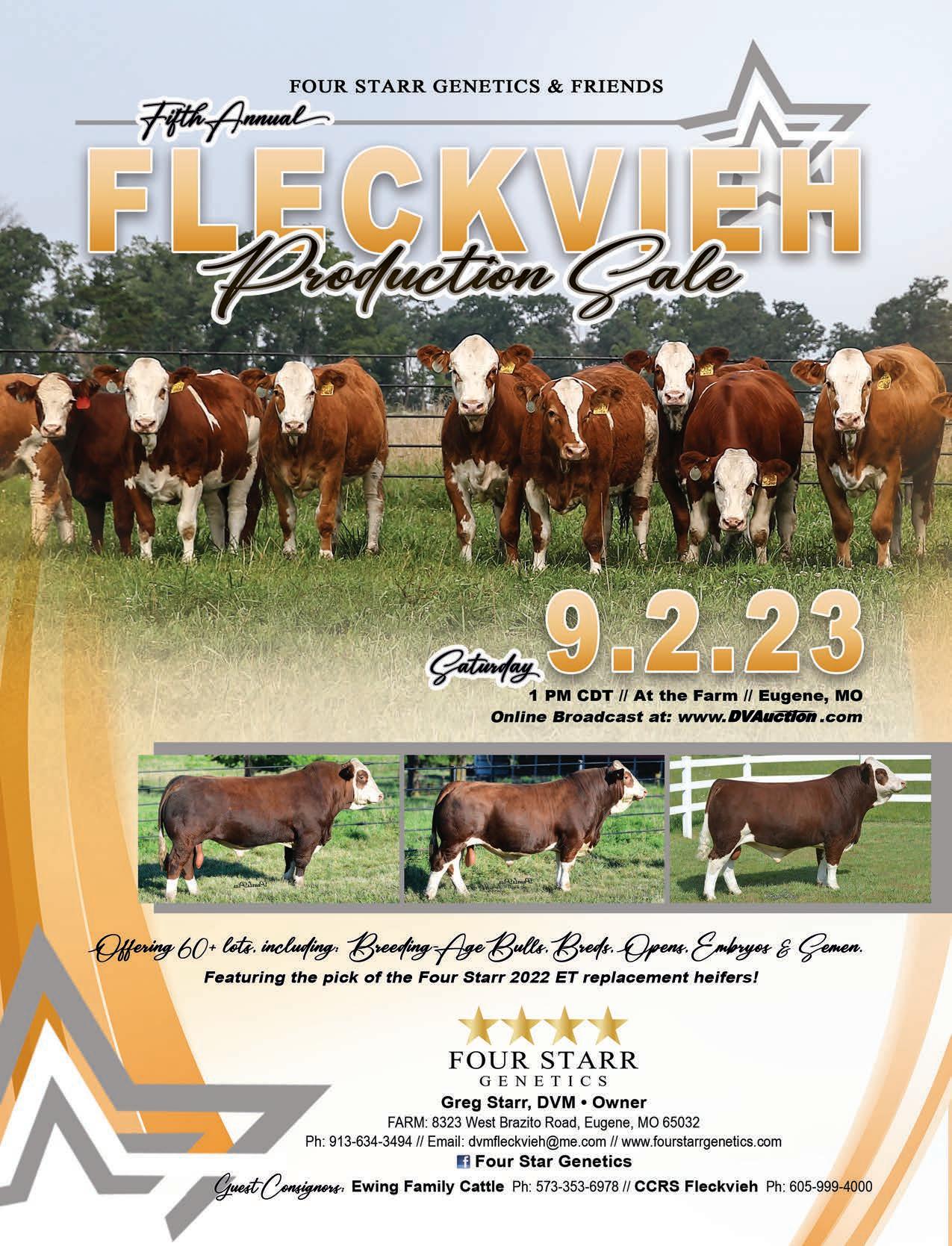
STANLEY MARTINS FARMS
thepublished by
ASA Publication, Inc.
One Genetics Way, Bozeman, Montana 59718 USA 406-587-2778 � fax: 406-587-9301
www.simmental.org � email: register@simmgene.com
Canada Publications Agreement Number: 1875183
ASA Publication, Inc., Board of Trustees
Chris Ivie, Chairman � Tim Clark, Vice Chairman
Doug Parke � Chad Cook � Ryan Thorson
Wade Shafer, PhD, Executive Secretary-Treasurer
CEO Business Manager
Wade Shafer, PhD Chip Kemp
141 Hwy 18 • Postville, IA 52162 563-419-2444 (c) • 563-864-7305 (h) stanmartins1234@gmail.com www.stanleymartinsfarms.com
ASA Board of Trustees
Executive Committee
• We sell bulls every month of the year.
• 90% of our bulls sell from $3,000-5,000.
• We export.
Doug Parke, Chairman � Chris Ivie, Vice Chairman � Chad Cook, Treasurer
Tim Clark � Ryan Thorson � Wade Shafer, PhD, Executive Vice President
Barry Wesner, Immediate Past Chairman
North Central Region
Tim Clark (2024) 1999 18th St NW Turtle Lake, ND 58575 � 701.799.7752 Tim.Clark@hubbardfeeds.com
Loren Trauernicht (2025) 901 E Pine Rd Wymore, NE 68466 � 402.230.0812 mtrauernicht@diodecom.net
Matt Aggen (2026) 27133 146th St Harmony, MN 55939 � 701.866.3544 mattaggen@hotmail.com
Troy Marple (2026) 9450 Michaels Rd Westmoreland, KS 66549 � 785.250.0522 troy.j.marple@gmail.com
Eastern Region
Western Region
Chad Cook (2024) PO Box 174 Walsh, CO 81090 � 719.529.0564 bridlebitsimm@gmail.com
Maureen Mai (2025) 427 Peaceful Way Bonners Ferry, ID 83805 � 208.660.2726 rymocattle@gmail.com
Ryan Thorson (2025) 1725 Road 261 Glendive, MT 59330 � 406.694.3722 ryanthorson7@gmail.com Quin LaFollette (2026) 1476 Hwy 14A Powell, WY 82435 � 307.899.3553 Quin@Blacksummitcattle.com
Managing Editor Advertising/Editorial Coordinator

Lilly Platts Rebecca Price
Sales Manager Media/Website Administrator
Nancy Chesterfield Kathy Shafer
Design/Production
Joel Coleman
Gretchen Jensen
Jenna Wacker
American Simmental Association
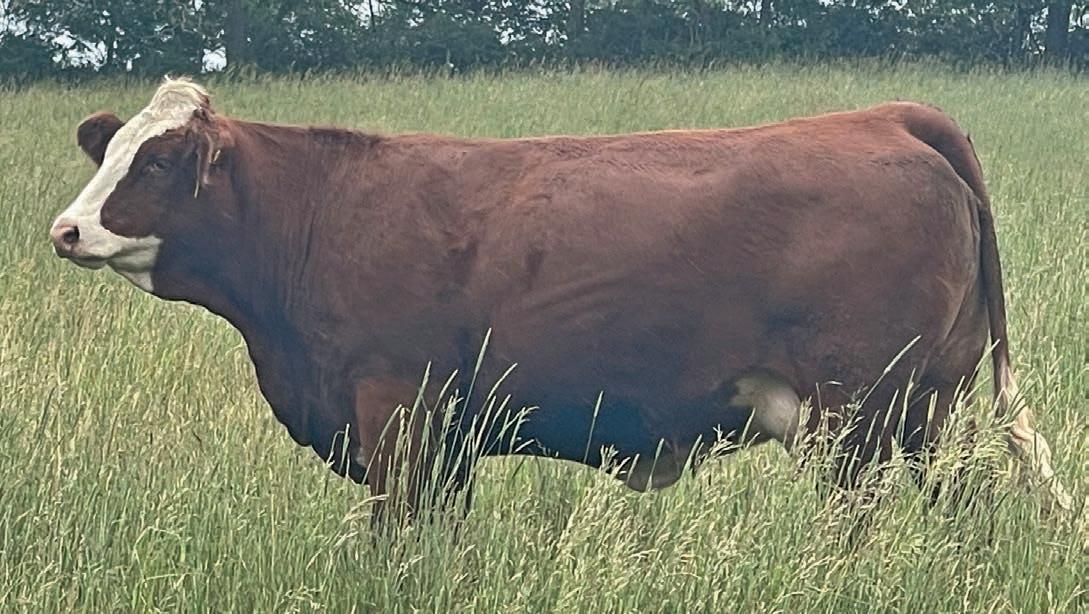
One Genetics Way, Bozeman, Montana 59718 USA 406-587-4531 � fax: 406-587-9301
www.simmental.org � email: simmental@simmgene.com
Chris Ivie (2024) PO Box 264 Summertown, TN 38483 � 931.215.0316 iviejc@usit.net
Doug Parke (2024) 153 Bourbon Hills Dr Paris, KY 40361 � 859.421.6100 office@dpsalesllc.com
Barry Wesner (2024) 1821 W 700 S Chalmers IN 47929 � 219.863.4744 wesnerlivestock@yahoo.com
Brandi Karisch (2026) 648 Polly Bell Rd Starkville, MS 39759 � 225.717.3324 mbkcattle@gmail.com
Scott Trennepohl (2026) 6591 W 625 N Middletown, IN 47356 � 765.620.1700 sttrennepohl@yahoo.com
South Central Region: Brandon Callis (2024) 26123 State Hwy 152 Minco, OK 73059 � 979.204.1265 callissteer@yahoo.com
Victor Guerra (2024) PO Box 92 Linn, TX 78563 � 956.607.5515 vgg03@aol.com
Joseph Hensgens (2025) 136 Deer Park Ln Rayne, LA 70578 � 985.992.9119 joehensgens@yahoo.com
Greg Burden (2026) 890 VZ CR 2205 Canton, TX 75103 � 405.780.0372 greg.gbcattle@gmail.com
6 Register / July/August 2023
Bred females, of the highest quality, will sell in our MAJOR HERD REDUCTION SALE on November 18, 2023.
Maternal Trait Genetic Trends
Purebred Simmental in past 20 years
Terminal Trait Genetic Trends
Purebred Simmental in past 20 years
Simmental genetics bring calving ease, early growth, and cow longevity while keeping feed costs at a minimum.
$All Purpose Index ($API)
predicts cow herd profitability using valuable traits like cow longevity (STAY) and calving ease while keeping pressure on terminal traits.
Compare the profit potential of two Simmental bulls using $API
1 2 3
Bull A’s $API = $120 and Bull B’s $API = $180
Breeding 25 females/year
Used for 5 years
1 2 3
Bull $API # Females # years using Profit per year the bull Potential
A $120 X 25 X 5 = $15,000
Just like an EPD, compare two bulls to see the expected difference in profit. Bull B is likely to result in direct revenue and expense savings of an additional $7,500 over the course of five years. Plug in your numbers for , , and to compare your potential earnings.
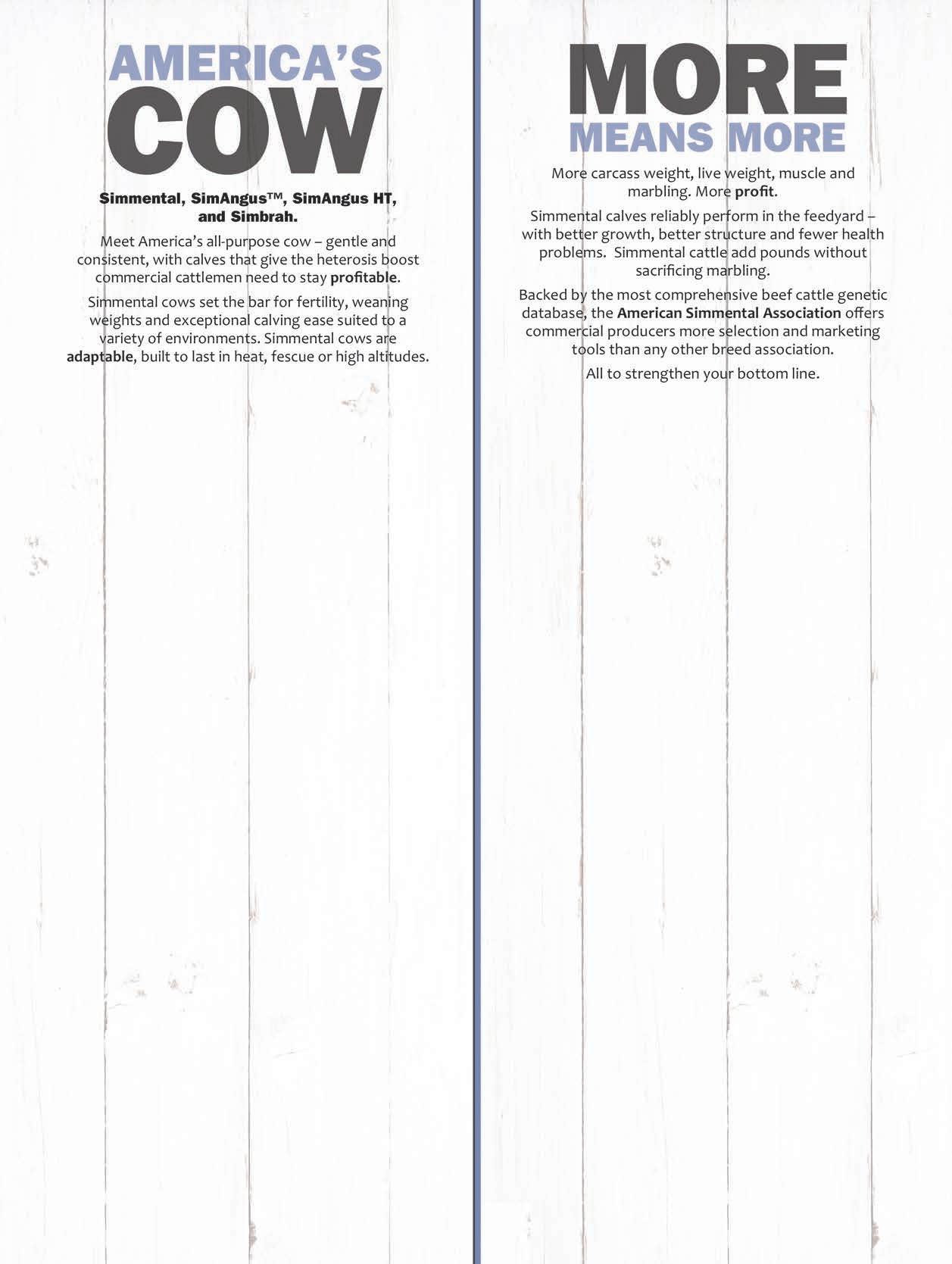
$Terminal Index ($TI)
predicts profitability when all calves are harvested.
Trait
Simmental rank compared to other Continental breeds Marbling First

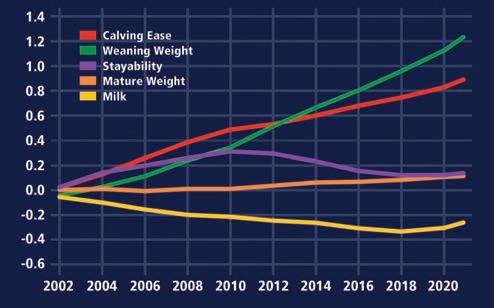
Carcass Weight Second Back Fat Second
Post Weaning Gain First
Source: USDA MARC
Simmental cattle bring marbling and growth without too much fat. Simmental genetics perfectly complement British strengths and weaknesses for an ideal carcass.
Did You Know?
u According to the National Association of Animal Breeders, Simmental ranks second for semen sales compared to all other beef breeds, and in recent years, the percentage of semen sold in the US from Simmental bulls has grown by 35%.
27% $TI
26%
$API
u $API increased 27% and $TI increased 26% in the last 20 years. This translates to an average increased profit of $3,375 per bull when used to sire replacement heifers and harvesting remaining calves or $2,000 when all calves are harvested.
Breed Mature Cow Wt. Hereford 1,419 Angus 1,410 Red Angus 1,409 Simmental 1,404 Source: USDA MARC
B $180 X 25 X 5 = $22,500 Difference = $7,500 1 2 3
by Matt Aggen, North Central Region
One of the perks of being a board member is getting the email telling you it’s your turn to write your Viewpoint article. At the time of writing this, summer is in full swing. For us, AI and ET work is done and cows are out on grass, which is arguably one of the best moments in a beef producer’s life. Summer also brings field days, Regional Classics, and of course the highlight for many Simmental enthusiasts, the AJSA National Classic. I had the opportunity to attend and speak at a Minnesota Junior Simmental Associations field day. I can say without any reservation that I’m very proud of this group of kids. The friendships, memories, and life skills they are gaining are incredible.
Rewind back to January where I and the rest of the freshman class of trustees found ourselves in Bozeman at our first round of board meetings. I must admit that the first day was similar to drinking out of a fire hose. All jokes aside, the meetings are well organized with a great blend of staff and a well-rounded board of trustees. The gavel was passed to our new chairman, Doug Parke. I have known Doug for a long time and I am looking forward to serving with him.
The ASA offers many programs and services promoting data and DNA. The ASA develops and provides the tools for its membership to generate more accurate data, and ultimately build better beef cattle for the entire industry. All this being said, let’s not forget about the cattle. They should offer physical quality and have intangibles, like appetite, libido, and maternal instinct, while being tough and hardy. There is no question that Simmental cattle are adaptable in all parts of the country and very well accepted in all facets of the industry. All this is a credit to great breeders and strong leadership. n

 by Dr. Jackie Atkins, Director of Science and Education Operations, ASA; Director of Operations, IGS
by Dr. Jackie Atkins, Director of Science and Education Operations, ASA; Director of Operations, IGS
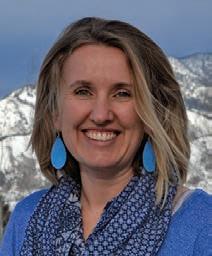
Walking around the cylinder
Have you ever been in a conversation where you see a situation completely opposite to the other person? Years ago, my knee-jerk reaction in those circumstances was to assume I was right and they were wrong. They clearly didn’t know what I knew or else they would see it my way. This applied to people in my professional circles as well as personal relationships. With hubris, I assumed the world was more black and white and I had certainty that my point of view was the “correct” one.
I have spent the last two to three years diving into leadership and personal development. One thing I have learned is to seek a more thorough perspective, in particular surrounding topics with uncertainty and disagreement. Instead of a quick judgment where I am right and the other person is wrong, I hold my perspective with less certainty and have more curiosity about the other point of view.
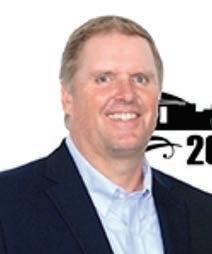
A way to visualize this is to consider a cylinder that has blue sides and an orange core. If you are viewing the cylinder from one side and are unable to see the 3D shape, you might swear up and down that the object in front of you is a blue rectangle. However, for the person staring down the barrel of the cylinder, they know with certainty that the object in front of them is an orange circle. Each of these perspectives could feel both highly certain of their “rightness” and that the other point of view is so clearly wrong. It is only in walking around this object that one can see its true form: a cylinder with blue sides and an orange core.

How do we walk around the cylinder? We graciously listen for the meaning in people’s words, are genuinely open to learn about a different point of view, and when appropriate, share our perspective. This is a skillset that in my opinion is fading from our society. Judgment, mistrust, and a lack of desire to understand another perspective shows up over and over again in our politics, news, social media, and on and on. But WE can change this one conversation at a time. WE can bring this skillset to those in our spheres of influence. WE can show up by giving grace, choosing curiosity over certainty, and seeking to understand those with a different point of view.
This year’s Fall Focus Educational Symposium is built to deeply consider topics that are uncertain and have disagreement. We invited people with different points of view to speak not because we want to instigate conflict but to help us walk around the cylinder. I am eager for this year’s Fall Focus and to walk around the cylinder with you. I hope you join us to listen, learn, and share. n
8 Register / July/August 2023
THE TRUSTEE
HEADQUARTERS FROM
VIEWPOINT
To learm more about the CMP visit www.simmental.org, then click Carcass Merit Program under the Commercial tab.

Questions, contact cmp@simmgene.com for more information regarding this program.
ASA# 4144086
CMP Class of 2023
The American Simmental Association Carcass Merit Program (CMP) is the beef industry’s most demanding and informative young sire test. The program is a hallmark of ASA breed improvement for economically relevant carcass traits. Commercial producers play an integral part in this project.
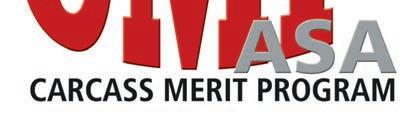
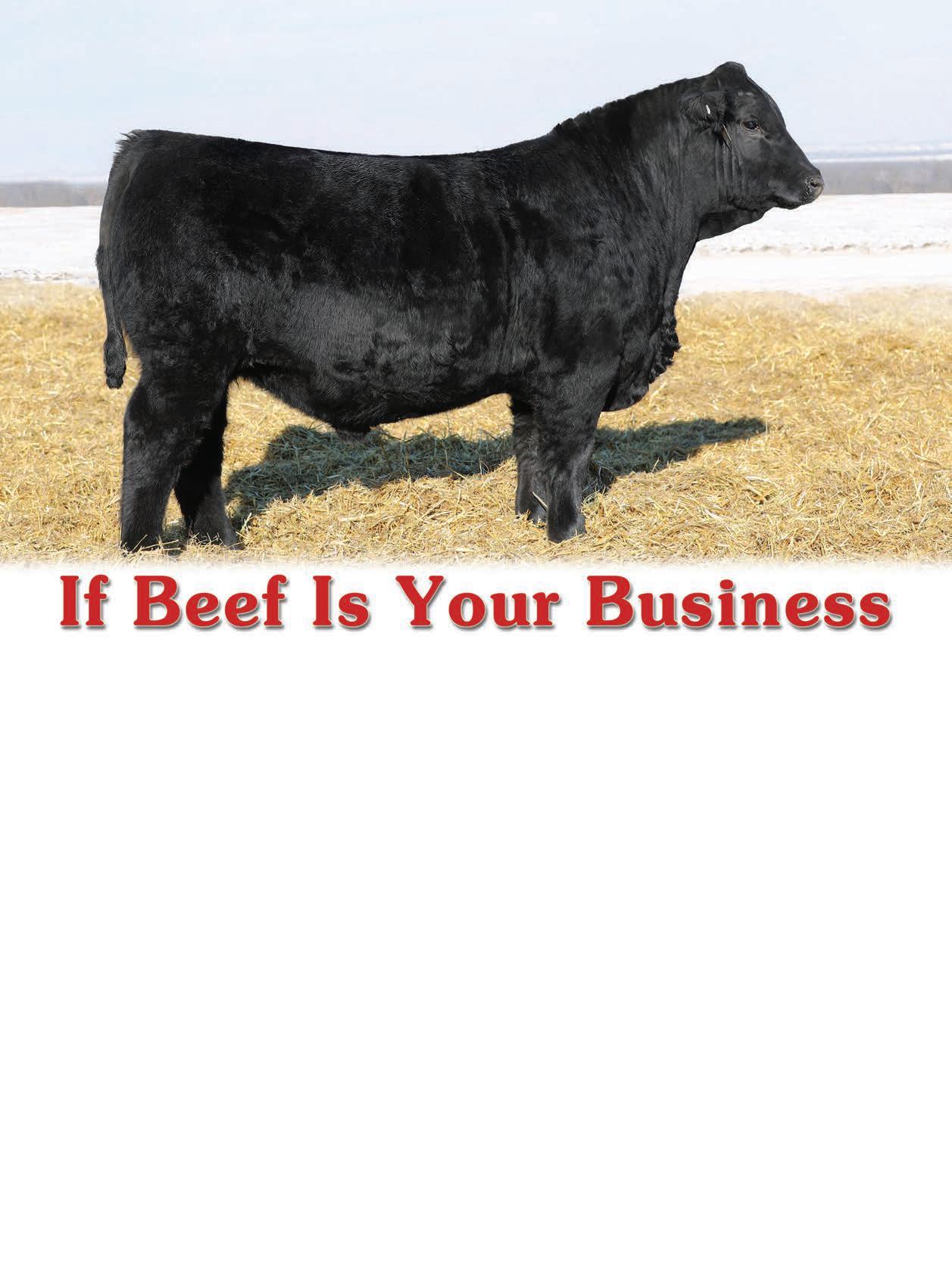
Participants receive:
u $65 for each AI-sired calf with carcass information
u Free semen on top young herd sires
u Free ASA Genetic Evaluation on your cow herd
u Free genotyping on terminal progeny

u Keep any or all replacement females
Become a Carcass Merit Program test herd today
*The CMP is a structured young sire progeny test. Participating cooperator herds will random sample their cow herd with CMP semen, and the resulting male (or female) progeny will be harvested with individual carcass data gathered. ASA Staff will work with cooperator herds to provide bulls that fit the general criteria of your management program; however, only bulls nominated into the CMP program may be used. Producers are encouraged to be somewhat proficient in Microsoft Excel for accurate and consistent record keeping.
RFG Versatile K43
Committed to
by Lilly Platts
Quality


Triangle H Ranch, located in Finney County, Kansas, is a multi-generation cow-calf, feedlot, and farming operation owned by the Hands family. Sam Hands, who heads the family’s feedlot operation, met with the Grant Company to discuss his side of the business and the Simmental breed’s influence. The Stand Strong feature can be viewed on YouTube.
The Hands family found their way to southwestern Kansas as cowboys and homesteaders. The Triangle H business was officially established in 1974 as a partnership between Fielding Hands and his sons, Sam, Greg, and Cedric. The family farm started generations before the current business, and Sam Hands got his official start in the cattle business when he was just nine years old, purchasing a calf.
Today, the farming and cattle operation complement one another and have allowed the family to diversify. Crops include corn, grain sorghum, soybeans, wheat, and alfalfa, and the cow herd is used to clean up crop residue.
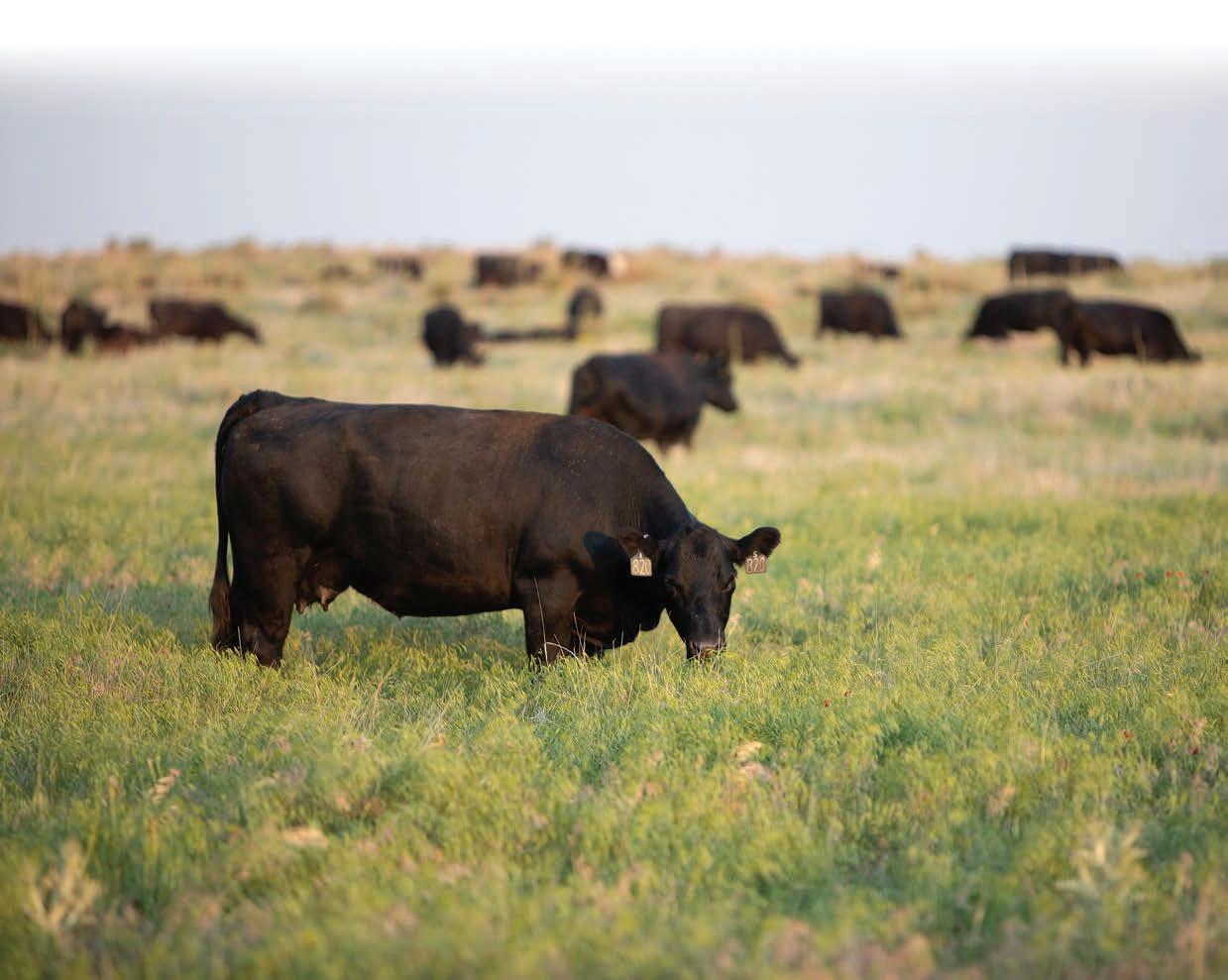
Hands leads the cow-calf, stocker, and finishing programs, continuing his lifelong passion for the industry. His daughter, Marisa Kleysteuber, has also stepped in as a managing partner, becoming the fifth generation to farm and raise cattle.
After learning to AI in the 1960s, Hands became an early adopter of this technology. This work exposed him to many breeds and facets of the industry. Hands recalls, “We decided that with the development of the feeding industry, feeder cattle were more fitting for our operation. We brought in Hereford bulls for cleanup, and were AIing with Charolais and Angus at first. As continental breeds started becoming more available we tested all of the different breeds, and we really liked what we were seeing with Simmental.”
The Hands family settled on a SimAngus cross, and have since balanced that cross to maintain performance in the feedlot and on the rail. “We’ve followed the numbers and done our own research, and can say that heterosis works. We get a little more ribeye, a little leaner carcass, a bit more quality, and looking at bottom line net profit, SimAngus works extremely well for us through the feed
10 Register / July/August 2023
yard,” Hands says. SimAngus females have also worked well in the cow herd. “When we brought the Simmental cross females into the herd the conception rates got a little better.”
Hands explains that Simmental has paired well with Angus for a number of reasons, from the volume of data available to performance traits. “The thing we wanted to pick up from Simmental was heterosis, and also the dualpurpose traits which provide good maternal and terminal performance. Now we’ve made extensive progress in the Angus breed for size and production efficiency, so there’s just a nice balance with Simmental for getting carcass traits and feedlot performance.”
The All Purpose Index ($API) is a valuable tool for Hands. “The reason I use it is because we are going to keep females back in the herd. Feedlot performance and carcass traits are very important to us, but at the same time we’re going to keep females back and look at frame size, milk, longevity, and fertility,” he explains. “It helps bring traits together and makes life a little simpler.”
In the late 1990s Triangle H began marketing cattle through US Premium Beef, which provides full carcass data for each animal. This has been valuable for Hands’ customers. “One of the reasons they feed with us is that they [our customers] want data back on their cattle to see if there are changes they need to make,” Hands explains.
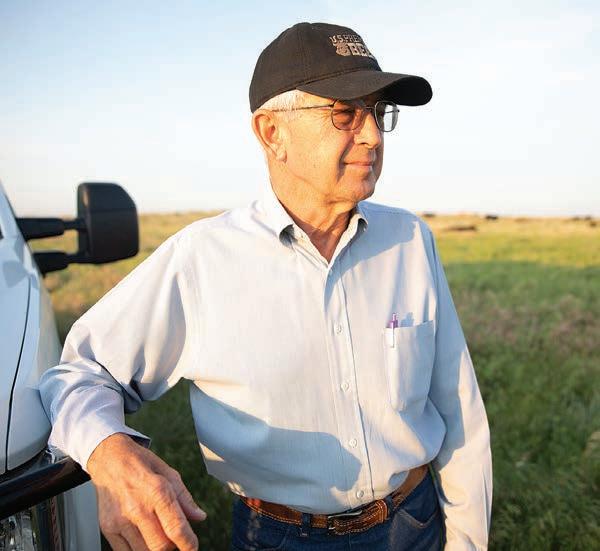
Triangle H has become a trusted feeder thanks to their dedication to data and unwavering commitment to making sure cattle are well-cared-for. “Our natural niche right now is that we have a good ongoing list of clientele who want to feed cattle here and get data back.”
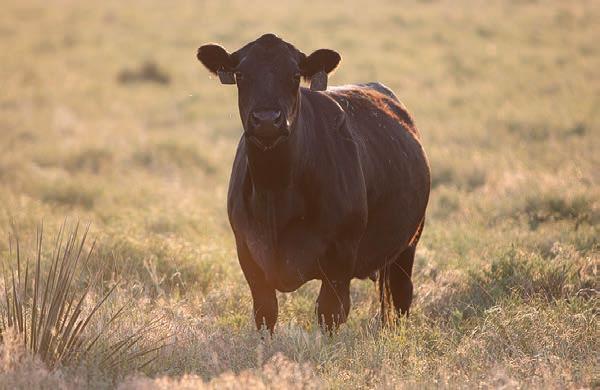
Helping customers improve has strengthened these customer relationships. “We’ve developed an index here that incorporates feedlot performance along with carcass traits so they can evaluate their cattle and hopefully do a better job each year. We’ve also worked with them to develop a health program that helps them reach those end objectives,” Hands says.
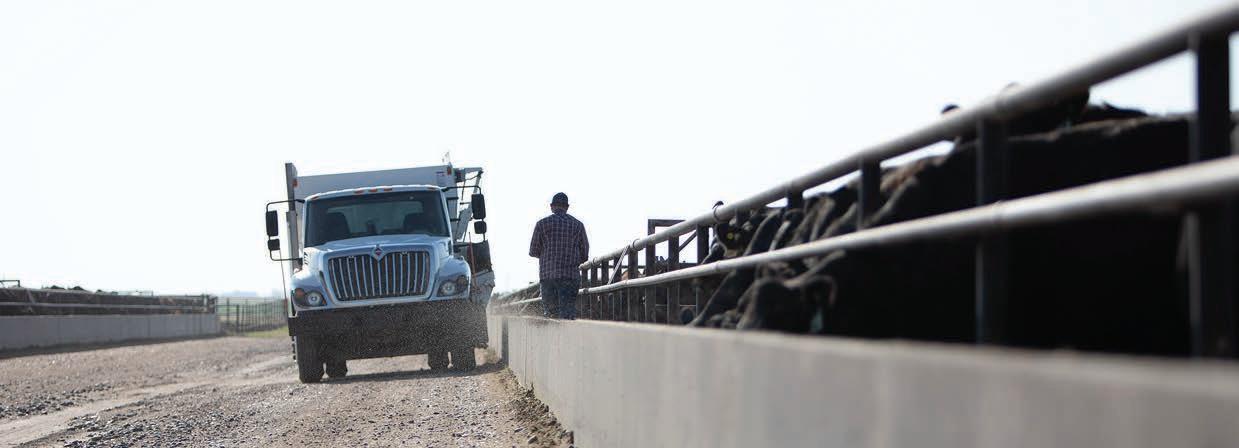
Southwest Kansas has been a good home for the Hands family operation. “Animals seem to get along well here in our environment,” Hands explains. “If it is hot they cool
(Continued on page 12)
July/August 2023 / Register 11
Triangle H has become a trusted cattle feeder, and is committed to continual improvement through data evaluation and quality management.
Above: Sam Hands leads the Triangle H cow-calf and feeding business, alongside his daughter, Marisa Kleysteuber.
Below: Hands chose Simmental genetics to add heterosis to the program. Triangle H retains heifers, which requires balancing maternal and terminal traits.
CommittedQuality
(Continued from page 11)
off, and if it’s cold we’re dry so the humidity doesn’t cause a problem with that, typically.”
Hands enjoys each aspect of the cattle business, from calving to feeding. “It’s neat to see mother cows bringing life into the world and watching the whole process,” he says. “They raise a calf up to weaning size, and it’s neat to watch those calves out on wheat pasture, and then as they transition at the feedlot level to become a finished product. Then, we get that carcass data back and to see those end results altogether is very rewarding.”
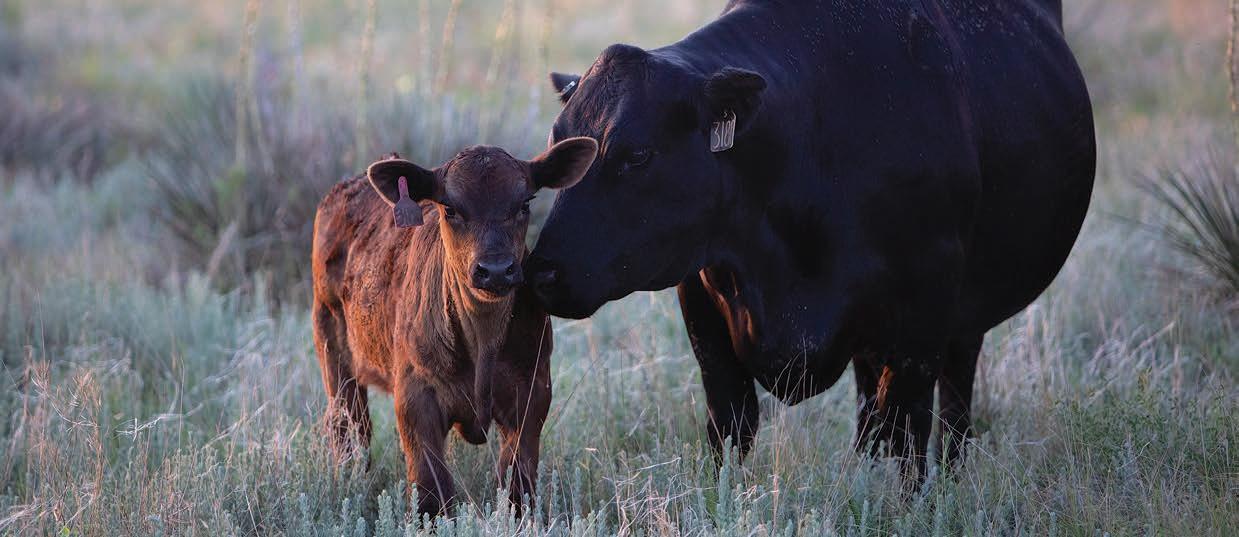
An appreciation for the process and desire to continue improving drives the Triangle H program. Hands concludes, “I look at our ruminant animals and the amazing job they do of taking raw resources and turning them into a very highly desired, digestible protein with extreme quality that is sought after by consumers across the world. With today’s cost of production we just have to keep working at being efficient. People have the means and are willing to pay for higher quality so why not go for it.” n
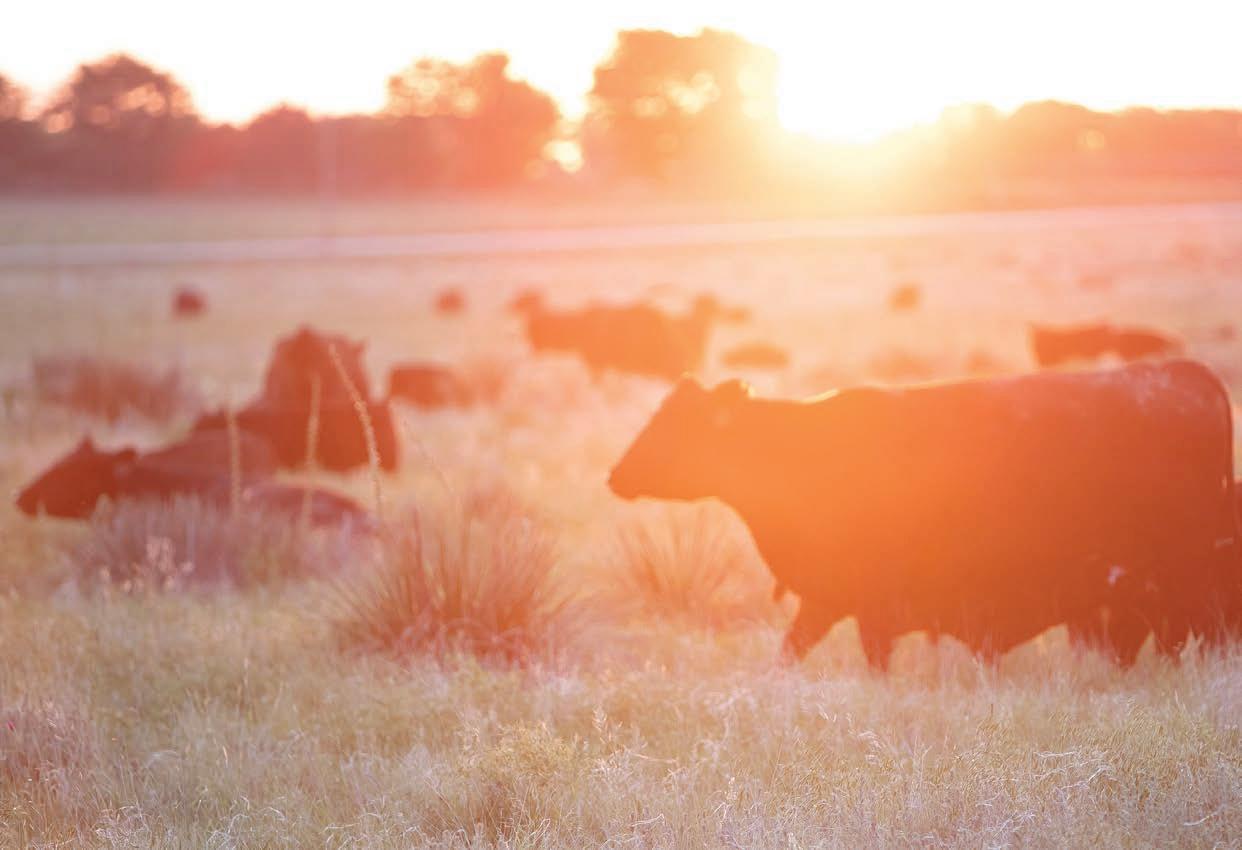
12 Register / July/August 2023
Above: Simmental genetics were added to the Angus cow herd to complement traits and add performance. Below: Southwest Kansas is a productive area for farming and ranching.
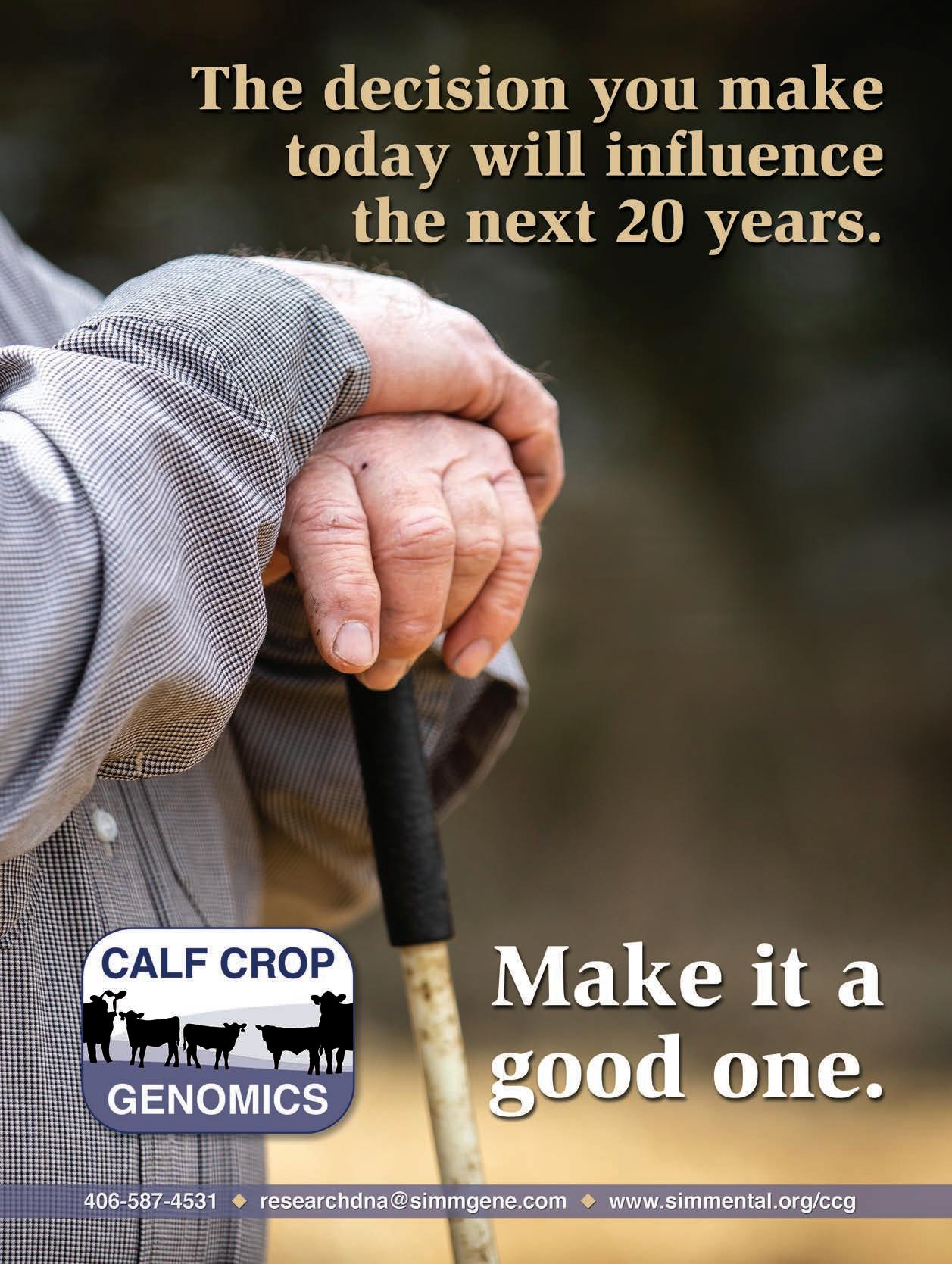
“I love this program and appreciate that it is flexible for other activities. I like it more when Cowan can be on the live webinar, but that’s life. The data is awesome, and it’s a great learning experience. Many of the assignments were high-level. I think that is great but can be daunting when even the parents aren’t awesome at it.”
– Natasha Mortenson, participant
“She really enjoyed it all, and the varied content was awesome! The hands-on things she enjoyed more than the papers, but that is her being young.” –
Chelsea Faulhaber, parent
“I enjoyed participating in the SPC Contest this year a ton. My favorite part was honestly probably making my steers ration! It was so different than any of the other assignments and it honestly took things to a whole different perspective for me. As always, every year I seem to learn more and more. I love the topics that the webinars go over and they have awesome speakers/presenters this year so it made it really fun to listen to. There was nothing that I disliked this year, you guys all made it really fun for me anyways and I really enjoyed it.”
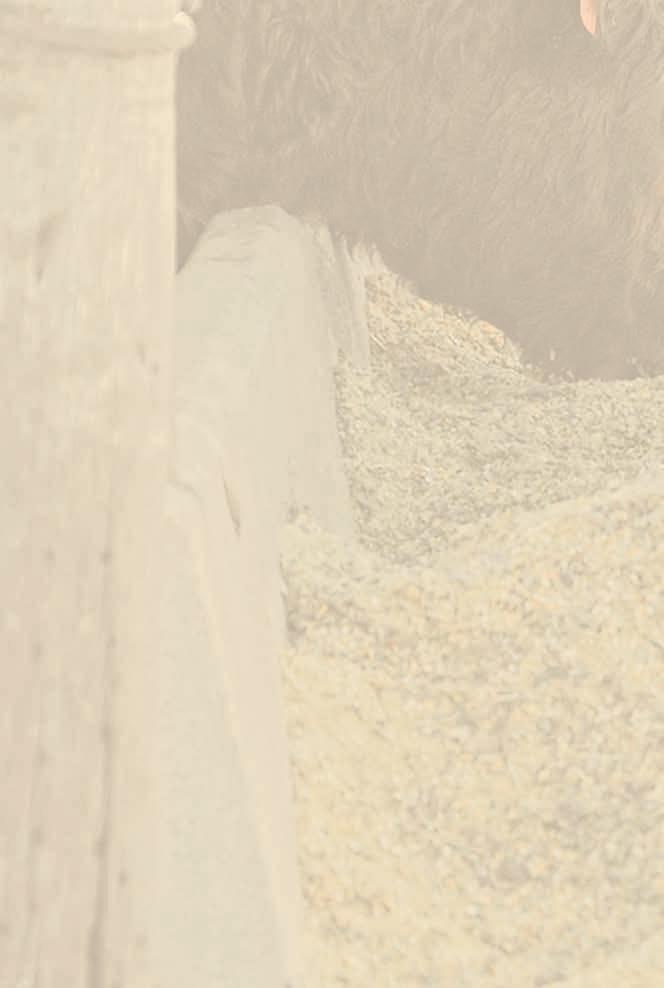
 – Audrey Redalen, participant
– Audrey Redalen, participant
“I greatly appreciate how this program has continued to be open to feedback and evolve! An example that especially resonates with me as a parent is how the assignments have developed into truly educational experiences. The first year of the SPC program primarily focused on the assignments summarizing the content of the webinars. This year the participants have had the opportunity to showcase through a number of different avenues what they’ve learned. These learning activities accommodate diverse types of learning styles and help to solidify the information in a meaningful way! As a parent and a Simmental breeder, this program is so valuable in my eyes. Please continue to communicate what we can do to support this program!” – Abbie
Redalen, parent
“I liked to learn about everything and I think it will all help me moving forward.” –
Cowan Mortenson, participant
“I enjoy the data! Grace and I enjoy working together, particularly using good data for making decisions and then evaluating our results. This is one of the reasons we continue to participate in the SPC, to learn more about our own operation from the terminal side. I am encouraged that she gets excited about topics that she is learning from.” –
Chuck Ewing, parent
14 Register / July/August 2023
2024 AJSA Steer Profitability Competition
qÜÉ ^gp^ píÉÉê mêçÑáí~Äáäáíó `çãéÉíáíáçå Epm`F áë ÇÉëáÖåÉÇ íç éêçîáÇÉ àìåáçê
ãÉãÄÉêë ãÉ~åáåÖÑìä ÉñéçëìêÉ íç íÜÉ çééçêíìåáíáÉë ~åÇ ÅÜ~ääÉåÖÉë ~ëëçÅá~íÉÇ ïáíÜ
Å~ííäÉ ÑÉÉÇáåÖK qÜÉ pm` ïáää åçí çåäó ~ääçï é~êíáÅáé~åíë íç ãÉ~ëìêÉ ~åÇ Åçãé~êÉ
íÜÉ éêçÑáí~Äáäáíó çÑ íÜÉáê çïå ~åáã~äEëFI Äìí çÑ ÖêÉ~íÉê áãéçêí~åÅÉI áí ïáää áåíêçÇìÅÉ
óçìåÖ ÄÉÉÑ ÉåíÜìëá~ëíë íç éÉÉêëI ãÉåíçêëI áåÇìëíêó ~ÇîçÅ~íÉëI ~åÇ ÉñéÉêáÉåÅÉë íÜ~í
~êÉ ÉñÅÉÉÇáåÖäó ÇáÑÑáÅìäí íç ~ÅèìáêÉ Ñçê ~åó ÄÉÉÑ éêçÇìÅÉêK m~êíáÅáé~åíë áå íÜÉ pm` éêçÖê~ã ïáää ÄÉ éçïÉêÑìä îçáÅÉë ~ë íÜÉó íê~åëáíáçå Ñêçã àìåáçê ãÉãÄÉêëÜáé íç ~Çìäí é~êíáÅáé~íáçå ïáíÜáå íÜÉ ÄÉÉÑ áåÇìëíêóK
Requirements
1. Steers only
2. Entrant must by an AJSA member
3. Animals must be entered in the ASA database
4. Either sire or dam on file in the ASA database
5. Birth date range: 1/15/23 to 4/15/23
6. Weaning date range: 8/15/23 to 10/15/23
7. Castration must occur prior to weaning
8. Steers must weigh 500–750 lbs. at delivery
9. Steers must be polled or dehorned
10. Any breed composition welcome provided they meet rules 1–9
Contest Guidelines
1. Entry fee of $65/head
2. Feedlot placement approximately November 1
3. All decisions at the discretion of feedlot
4. Harvest will occur approximately June 15, 2024

5. Participation in monthly e-meetings
6. Entrant will receive reports on
a. Monthly feed and health bill
b. Final feedyard data
DETAILS
1. All steers on GrowSafe feed intake system throughout the entire project.
2. Individual intake and gain information on all steers.
3. Monthly weights on all steers.
4. Steers will be fed at University of Missouri Beef Research & Teaching Farm in Columbia, MO.
5. Regular updates highlighting SPC details, industry news and steer performance.
6. Monthly bill detailing specific expenses on each steer.
c. Final carcass performance data Go to juniorsimmental.org to register or find more information. Register by October 15, 2023
Awards will be granted for the top three animals overall, top three pens of three overall, and top monthly write-up participant.
n Mandatory monthly educational webinar
n Mandatory monthly assignment (variety of formats and age expectations)
July/August 2023 / Register 15
Chatting
Doug Parke Reflects on His Role with the ASA Board of Trustees
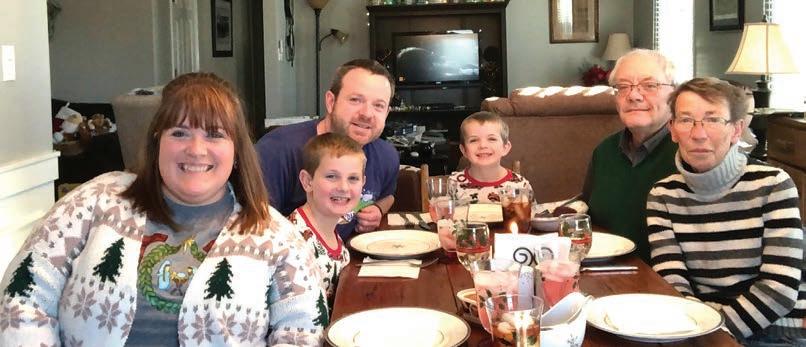 by Lilly Platts
by Lilly Platts
Platts: Tell us about your background, family, and operation.
Parke: I was first exposed to the Simmental breed when I was a sophomore at Madison County High School in Richmond, Kentucky. During my four years of college at Eastern Kentucky University where I was studying animal science, I worked summers at Kieckhefer Simmental in Paris. Fritz Kieckhefer was an ASA board member at that time. While working in Paris I met Debbie. After Debbie and I got married, we spent several weeks on the show road.
I also worked at Benedict Inc. in Ohio, where I worked with and learned from Pearl Walthall. I later worked for Breck Ellison Farms in Lenoir City, Tennessee. When Breck dispersed in the early 90s, Debbie’s dad had just passed and our daughter Holli was little; we decided to move back to Kentucky to be closer to family. I struck out on my own, consulting at Simmental sales, traveling the US and Canada. As business evolved I began working with Doug Paul, DP Sales Services, traveling to sales and assisting him. When he decided to step back and retire, I kept the business going and it has evolved from there. Today, we continue to manage Simmental sales across the country for breeders and state associations. We started DP Online Sales to assist our customers in marketing their genetics through an online sales platform.
Holli started with our small herd, participating in the AJSA her entire youth, and serving on the AJSA Board of Trustees. She loved to show, and the educational contests were a big priority. We were blessed with winning shows like American Royal, North American, and National Western. The most rewarding thing is to have her prefix on animals that continue to be influential in the breed. Holli married Drew Hatmaker in 2010. They have two children, Knox (9) and Breck (6); both are named after the influence of our family’s connections to the Knoxville area and Simmental breed. Today, all the breeding program is in the hands of Holli and Drew. They are a big help and are side-by-side at DP Sales Management and DP Online Sales.

16 Register / July/August 2023
ASA Board Chairman Doug Parke discusses the opportunities and programs available to the Simmental community, explores challenges and the strengths to meet them, and emphasizes the importance of a robust junior program.
Above: The Parke family exhibited the Grand Champion Simmental female, HTP SVF Makin Honey N93, at the North American International Livestock Exposition in 2004.
Left: Parke Family (L to R) Holli Hatmaker and son Knox, husband Drew, and son Breck; Parke and his wife, Debbie.
Chairman
What were your thoughts when you assumed the role of Chairman? What are your priorities?
I joined the Board never dreaming of being the Chairman. I am not qualified more than any other members on our board; I just love our breed. I have been involved in the Simmental industry for over 50 years and it is indeed one of the greatest honors to serve as your Chairman.
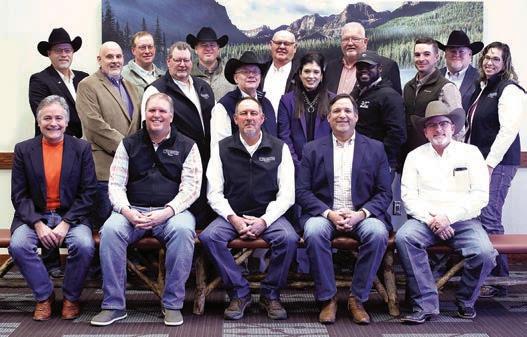
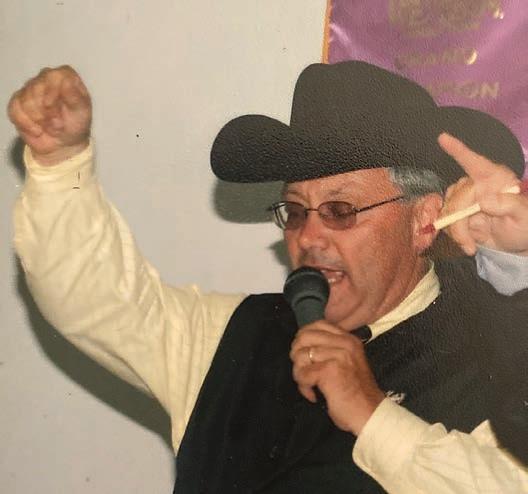
One of the policies that is high on my list of priorities — and that I believe should be implemented — is to require DNA parent verification on all animals shown at the AJSA Classics, and the four Major Progress Through Performance (PTP) shows. I know there are other breeds that already have this in place, and I feel with the continued rise of Simmental genetics in the show ring it is an important policy to implement.
How is the Simmental breed currently positioned within the industry?

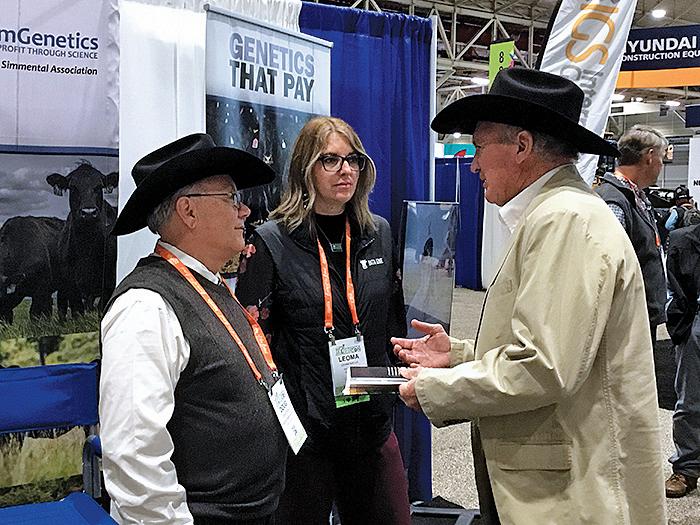
The Simmental breed has seen some of the largest growth ever over the last several years in every facet of our industry. With that comes both positive and negative effects. We are positioned as one of the top breeds in the industry; world-wide we are number one. In our current position the ASA offers many programs that can be utilized by the seedstock or commercial breeders, large or small. ASA is looked upon as a leader because we offer science, services, a wide range of programs, and collaborate with many breeds in the US, Canada, and around the world. Simmental success rises based on cattle that work across the many sectors of the beef industry.
What are the strengths of the current Board?
We have a diverse board just like the diversity in our cattle operations. I believe this is one of the best boards we have ever had, and a large part of that is due to the diversity of the men and women who sit upon it. Each individual is open-minded, knowledgeable, and aware of the different types of cattle and different programs that fit Simmental breeders. Our breed registry has all types of Simmental and SimGenetic influence, and we want the same type of diversity in our trustees. No matter what type of board you sit on, to be the most effective you must focus on others before we focus on ourselves. I believe this board is fighting for all ASA members no matter if you have ten cows or 400 cows.
(Continued on page 18)
Top
July/August 2023 / Register 17
Top left: The Simmental breed has been central to Parke’s life, and he is a respected breeder and evaluator of SimGenetics.
right: Parke working the sale block; DP Sales Management has been working Simmental sales across the country for decades.
Middle: Parke (center) with the current ASA Board of Trustees.
Bottom: Parke at the 2023 National Cattlemen’s Beef Association Convention. Also pictured: Lemoa Wells and Chuck Madaris.
Chatting Chairman
(Continued from page 17)
How do you as Board Chairman encourage all Trustees, including newly elected ones, to become active participants in the decision-making process?
I am not one to sit in the background or take a back seat. I might not always be the best leader, but I am going to be one of the most active. As Chairman, I expect each board member to be active as well. I reach out to our board members; seeking their opinions and thoughts, while encouraging them to share theirs as well. We all have other obligations and families, but if you are going to be a part of this board then it’s important to truly be a part of it and with a passion to assist and listen to the membership.
As a new board member it’s easy to only communicate with people from your region, or who you know. We all do that at a conference, meeting, or church. We stay where we are comfortable. My family says I have never met a stranger, so I encourage others to sit by the person they know the least. I also encourage the ASA staff to do this.
You have seen International Genetic Solutions (IGS), and the IGS Feeder Profit Calculator (FPC) take root in the industry. What has been the impact?
When IGS started I personally didn’t know if it would be beneficial to all ASA members. I am glad to say I was incorrect. Ten years ago, who would have thought a concept like IGS, with multiple breed associations, would get off the ground? Today IGS has the largest database in the industry, with over 20 million records. ASA has developed partnerships, collaborations, and comradery with various breed associations. IGS provides the best genetic predictions, not only to seedstock breeders but for anyone using EPD to select their genetics. At the recent National Cattlemen’s Beef Association Convention all breeds involved were represented, and discussed our shared goal of beef cattle improvement. No matter what breed we are involved in, we should all strive to be the best stewards of cattle as we possibly can be.
The Feeder Calf Calculator provides a platform to generate information on crossbred and composite feeder calves. IGS empowers producers to market with confidence and allows feeders to maximize their purchasing dollars. The growth potential of IGS will continue because we are all on the same playing field on an equal basis.
What has been the impact of Total Herd Enrollment (THE), and the Performance Advocate program?
You know the saying, “You can’t teach an old dog new tricks”? Well, teaching a cattle producer is likely even harder. For breeders, especially the larger ones, implementing and becoming familiar with the THE program was a big first step. I feel that some breeders have a
problem with being noncompliant and keeping up with the deadlines. The goal of THE is to improve the quality of data submitted. We have producers who bounce back and forth within the system, and some who simply want to register and transfer animals. For THE to reach its full potential there needs to be consistency and stability for the membership.
I admire the producers who collect data for as many as 14 traits. The producers who are designated as Performance Advocates are dedicated and need more than their names listed in the Register. These diligent breeders need to be awarded somewhat like the Ring of Champions, or even more.
Carcass data is valuable but difficult to obtain. What have the various ASA carcass programs done to help?
The Carcass Merit Program (CMP) has been in place for over two decades. That is pretty incredible for a program within a breed association. Typically, as times change, so do the programs, but CMP is a constant. The program collects the real-world data, but is a multi-year process of calves being born, raised, fed, and harvested. It does add more accuracy for economically important EPD. More recently, the Carcass Expansion Project (CXP) has been added to expand these efforts.
Carcass data is expensive to collect but most would agree on its importance. It is about breeding better cattle to raise better beef. Members have to choose which programs work for their operations and even more so for the benefit of their customers.
How has the Progress Through Performance (PTP) program impacted the ASA membership?
PTP has maybe seen the most changes and improvements over the years. With that, it is one of the programs that is probably most scrutinized. In the early stages the adaptation was not the best; however, education and awareness helped. Many breeders and onlookers believed that ASA was pushing judges to put more weight on the EPD than the physical characteristics of the animal in the show ring, which created pushback. It is all about the tools in your toolbox and utilizing them correctly. Spectators in the seats study the EPD comparing the sires while watching the shows. Utilizing their phones, breeders and spectators can look up further information and expand their knowledge based on what is on that program.
The ASA adding the Ring of Champions has been a very positive way to enhance the program, and highlight the breeders and exhibitors. I would like to see updates on the Ring of Champions standings in our regular communications.
18 Register / July/August 2023
The American Junior Simmental Association (AJSA) continues to grow. How has it impacted your family, and how does it impact the entire industry?

Since its inception, the AJSA has been number one. We can list so many qualities that our AJSA members learn from being involved on their family farms, breeding and exhibiting cattle, and competing and learning at AJSA events. We raised our daughter Holli summer after summer at Regional and National Classics across the country, and none of us would trade any minute of it, no matter how well Holli did.
I am a big supporter of the educational contests at the Classics. I told Holli at her first AJSA event that we would travel wherever she wanted so long as she participated in all the educational contests. I believe they should be required for all who attend. They teach our junior members life skills, like public speaking, confidence, handling yourself in front of others, and stepping out of your comfort zone.
I have had the privilege to attend most of the National Classics in various roles. The best was as a parent. Seeing individuals in the junior program and now seeing their kids and grandkids coming through the programs is very rewarding. That is a true testament to a program that works because it means something for generations.
My daughter Holli was one of the first AJSA board members to implement a leadership conference (now The Summit) for AJSA members, and I love to see how it has evolved since its inception. Bringing together junior members from various breed associations, allowing them to learn and work together is the best way to set up our breed associations and industry for success in the future.
Making the Regional and National Classics PTP shows has helped the most with the advancement and understanding of PTP. First, you are encouraging Simmental families to think about EPD when they are breeding or selecting show animals. They are making future plans for their operation and utilizing EPD. Second, you are teaching these young AJSA members about the unique balance it takes to create an animal of the highest quality. Most importantly, we are equipping our young people with another bit of knowledge that is going to make them better and more successful cattle breeders in the future.
As a longtime Simmental breeder, what do you see as the role of state associations?
State associations are the backbone of our association. I would love to see a revitalization and resurgence of the state association. There are very few that have meetings year to year; I can think of only two state associations that have sales each year, not missing one year. We have many states using their cost share money through the ASA. ASA offers cost-share advertisements to state associations. The strong state associations could be utilized as examples, and to help grow other state associations.
Why is it important for the ASA membership to participate in decision-making and get involved with Association activities?
Unfortunately, I think it’s part of our world today to be satisfied with complaining about what is being done in the world around you, but not taking an active role in it.
(Continued on page 20)
July/August 2023 / Register 19
Parke judging at the 2023 Simmental-Simbrah Super Bowl in Giddings, Texas.
Chatting Chairman
(Continued from page 19)
Feeling like your voice, vote, or opinion doesn’t matter. I don’t like that. I don’t want you to think that way. I want you to know it does matter.
I spoke to an ASA member that has been a member for 25-plus years who had never voted in a trustee election. We have to find a way to get more people to vote in the election, and to be active in their association. Voting electronically from your phone or computer has helped, but if you don’t take time to do it then we aren’t making any progress. The faces of the ASA, the staff in Montana, and our board needs to be more out in front of the members showing you and telling you why it is important. The town-hall-style meetings and meet and greet events have been making some traction, but we still have work to do. Please contact me if you would like to talk about making a difference.
During this time when people are relying more and more on the internet and electronic communication, what do you perceive as the future for the ASA’s print publications?
No matter what is happening we will continue with our breed publications. The success of some other breed publications is strong, however they face the same challenges. ASA continues to sell ads throughout the year. The increased use of social media will help us to embrace new members and a new generation. Human interest pieces are very appealing to the membership and should include all types of members from across the country. ASA adding some statements on monthly and quarterly reports from different sources was a great step and well received by many.
Why is ASA’s history important, and how does it continue to influence Simmental’s path?
The groundwork of our early leadership and the ability to adapt to change has helped get us where we are today. Our breed, like many others, has faced some challenges. Most importantly, over time our breeders have been focused on raising good cattle; no matter if they were really tall red-and-white ones, or a more moderate-framed black, white-faced female. Simmental breeders are good people looking to raise good cattle. Our diversity makes us unique with Fleckvieh, Simbrah, Purebreds, and the continued rise of the percentage of SimAngus. The foresight with advancing science, the growth of IGS, and collaborating with other breeds is a great plus for the future. Why have people come into our breed? The answer is we as breeders, large or small, adult or junior, have made the cattle better. The people who choose our breed do so for a reason. Simmentals are accepted by the commercial industry, seedstock producers, feedlots, packers, and the show ring. We all aren’t so different because we have strength in numbers. n

20 Register / July/August 2023
Parke (right), with colleagues at the Kentucky Beef Expo.
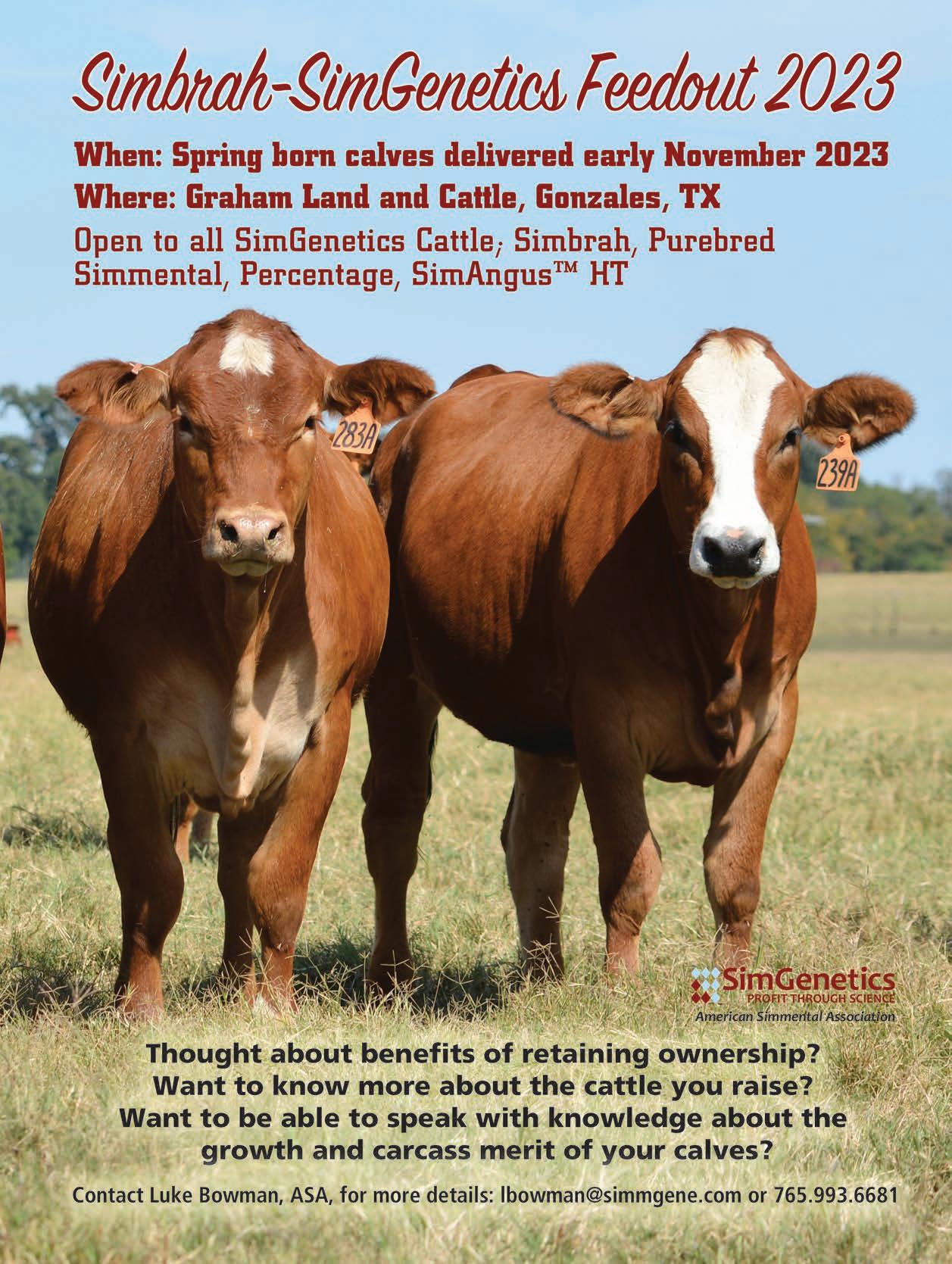

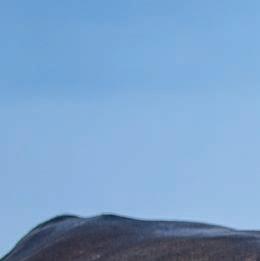
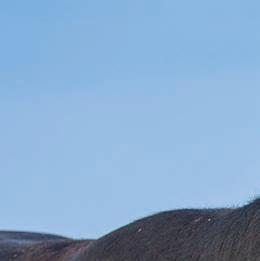



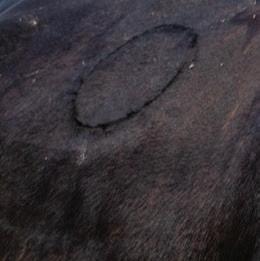
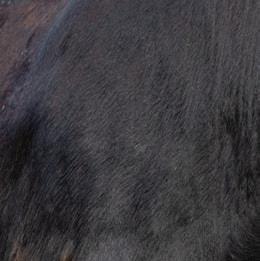
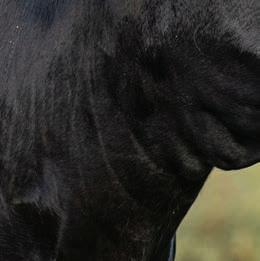
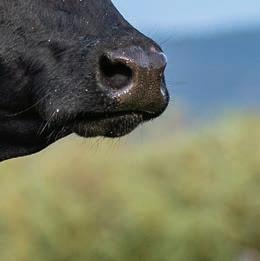


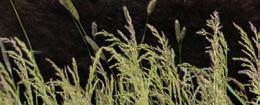
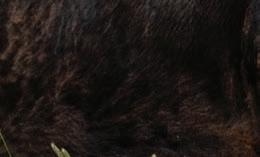
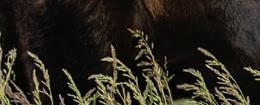
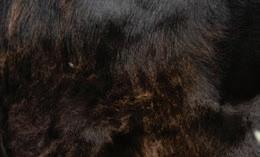
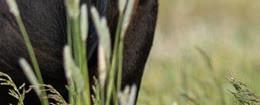
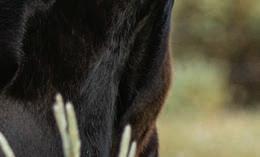

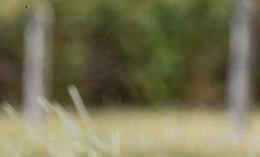
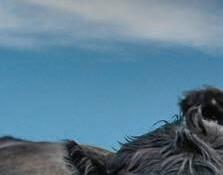

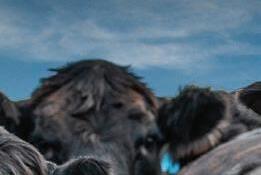

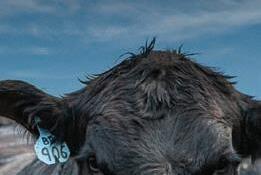






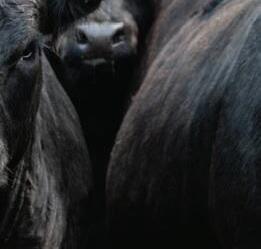

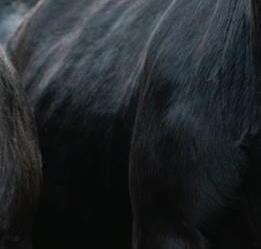
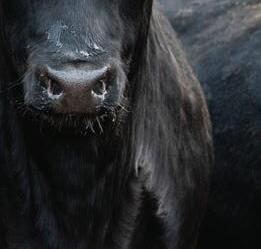












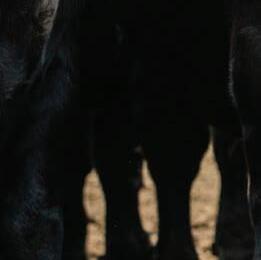







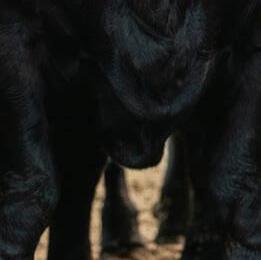
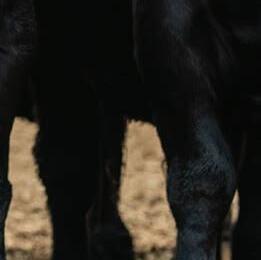
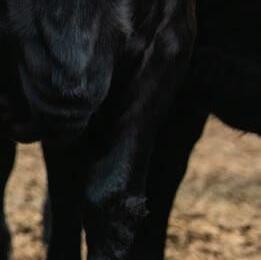
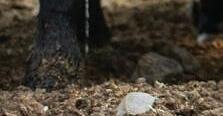

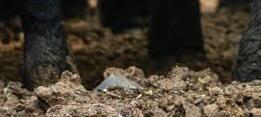

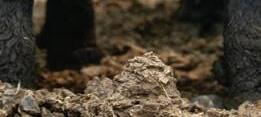
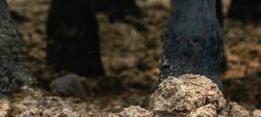



























































































































4006-587-4531 • simmental.org
2023 Golden Book Awards
 by Lilly Platts and Dan Rieder
by Lilly Platts and Dan Rieder
The World Simmental-Fleckvieh Federation (WSFF) Golden Book Award recognizes individuals and organizations that have made significant contributions to the development of the Simmental/Simbrah breeds. The ASA Board, which nominates and approves Golden Book Awards, authorizes up to three awards annually. Recipients of the award receive a plaque from the WSFF and a framed citation signed by the ASA Chairman of the Board. This year, two longtime breeders and two recently retired ASA employees are recognized with the Association’s highest honor.
Hart Simmentals, Frederick, South Dakota
Kerry and his wife, Mara, continue the family business alongside their family. The Simmental breed has been at the heart of their operation for 50 years now, which they take great pride in.

The Hart Simmentals program has stood the test of time by focusing on balance and consistency; fads and trends have never caused them to stray from the cattle they know work for their customers. Hart Simmentals was an early adopter of DNA technology, participating in the Cow Herd DNA Roundup. They have been recognized as a Performance Advocate, participating in Total Herd Enrollment, as well as the Carcass Merit Program, and Carcass Expansion Project.
With a deep appreciation and love for their cow herd, the Harts have focused on building consistency and reliability in each female. Reasonable frame size and traits that lead to easy-keeping females are a high priority. Hart bulls offer all of the traits that have made the Simmental breed successful, from calving ease and performance to docility.
Hart Simmentals, Frederick, South Dakota, held their first bull sale in 1976, coming onto the Simmental scene early in the breed’s US history. Since then, the family has built a highly respected, customer-service-focused business, supplying reliable, breed-leading purebred genetics to a variety of customers.
The Hart family began farming and ranching in the 1950s. Charlie Hart survived farming through the 1930s and years later, two of the seven sons stayed on the farm, including Kerry. In the 1970s they began using traditional red and white Simmental bulls on their Angus cows. During this time the family was also selling sheep, hogs, horses, milk, eggs, and produce.
The cow herd evolved over the years, beginning with a shift from Angus genetics to purebred Simmental. Breeding up to a purebred herd took time, but has paid off, with Hart Simmentals being one of the top sources for 100% Simmental genetics. During this time they also focused on developing black and polled genetics.
In addition to selling bulls, exhibiting cattle at shows has been a part of the Hart Simmental program for many years. In 1976, when demand for Simmental cattle was high, Charlie sent Kerry, then 16 years old, out on the show road. He attended every major show and jackpot held that summer, studying the leading showmen and honing his own skills. Soon, he was competing alongside the best in the industry. By 18, Kerry was taking his own show string to the National Western Stock Show (NWSS) in Denver; over the years Hart Simmentals has won a number of accolades, including the top pen of bulls at the NWSS.
Hart Simmentals will hold their 49th annual sale in February of 2024. Their dedicated customer base can be attributed to their steadfast commitment to customer service. The large majority of customers are commercial breeders in the region, with a number of bulls going to fellow seedstock producers. For the last six years they have done a customer appreciation heifer giveaway — each bull purchase enters the customer in a raffle, and
24 Register / July/August 2023
Mara and Kerry Hart have developed the Hart family business, and are now working alongside their children.
the winner is given a top pick from the Hart’s replacement heifer pen.
The fourth generation is now making its way onto the farm — Kerry and Mara are extremely proud to have brought their family up in the beef industry. Justin, the oldest son, and his wife, Jes, have four kids, Braelyn, Zoie, Jaxon, and Paislee; Travis, the middle son, and his wife, Shelby, are the parents of Greyson; and Jamie, their youngest daughter, and her boyfriend, Brandon, are an integral part of the operation. The Harts are extremely involved in their community, giving back through programs like 4-H. The Hart family has donated a heifer to raise funds for the American Simmental-Simbrah Foundation at the 2024 NWSS.
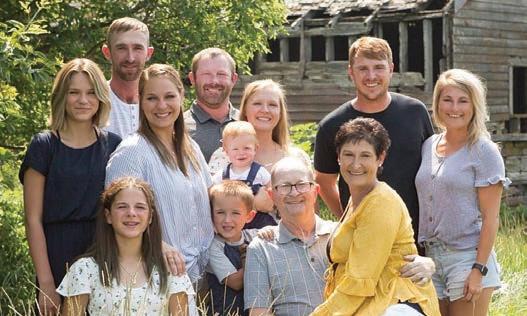
Neil Martin, Lyles, Tennessee
Tennessee Land Trust, tying the entire tract together forever, and ensuring it will only be used for agriculture in the future.
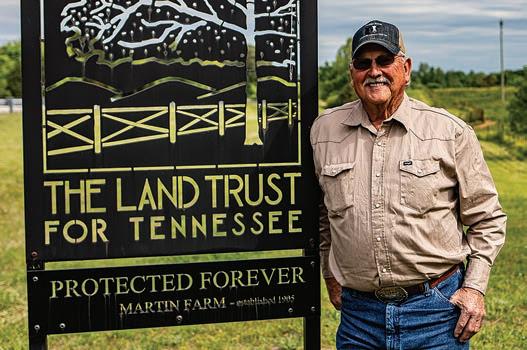
Since the first Simmental female landed at Martin Farms in 1971 many things have changed, but the Martin family has continued to focus on Simmental genetics. Today, SimAngus is also part of their program. By offering balance and consistency they have built a strong customer base; many have been return customers for decades, trusting in the Martin Farms program.
Martin has seen significant change in the Simmental breed, and industry as a whole; he has endured the highs and lows by maintaining balance and not chasing extremes in his cow herd. From keeping birth weights down to minding the traits commercial producers need in their herds, Martin has always kept his finger on what works for his customers.
For over 50 years, Neil Martin has been a leader in the Simmental breed, producing reliable genetics for his customers on the family’s 100-plus-year-old Lyles, Tennessee, farm. The Martin family adopted Simmental genetics early in the breed’s US history, operating under membership number 5390.
Neil Martin and his father, Moody, saw the benefits of heterosis early on, switching their Limousin, Polled Hereford, and Angus genetics to Simmental in the early 1970s. They set out to build a registered herd, and have now been with the breed for 52 years.
Martin’s grandfather purchased the farm from his brother in 1912. Moody continued to farm, partnering with his brother to buy the operation in 1943. Martin followed in these footsteps, buying his uncle’s share of the farm in 1961, purchasing half-interest in the farming operation, livestock, hogs, equipment, country store, and house. The Martin farm has now been in the family for over 100 years, with Martin’s son, Chris, stepping in as the fourth generation. The farm is enrolled in the
Heterosis and breed complementarity have been a focus at Martin Farms for many years. After developing a purebred Simmental cow herd in the 1980s, Martin introduced a polled Fullblood Simmental bull to breed in the polled trait. Simbrah were also added to the program to obtain desirable traits, and eventually, black genetics. Soon, Martin had developed a largely homozygous polled and black cow herd. Calving ease, growth, eye appeal, structure, and disposition have remained priorities throughout.
Martin is a lifelong leader in agriculture. In 1964 he became the first person from Hickman County, Tennessee, to receive the Future Farmers of America American Farmer degree. He received the Tennessee Simmental Association (TSA) inaugural Pioneer Award in 2018, honoring the significant role he has played in developing SimGenetics in Tennessee. He has served on the TSA board of directors, and Martin has also served for a variety of local and state agricultural organizations over the
(Continued on page 26)
July/August 2023 / Register 25
The Hart Family has been breeding SimGenetics for over 50 years.
Martin enrolled the family farm in the Tennessee Land Trust, tying the entire tract together forever.
2023 Golden Book Awards
(Continued from page 25)
years. In 2020, Martin Farms partnered with Running Springs Cattle and Water’s Edge Farm to join Allied Genetic Resources, offering a premier selection of Southeastern SimGenetics. The group hosts an annual joint production sale the last Saturday of September.
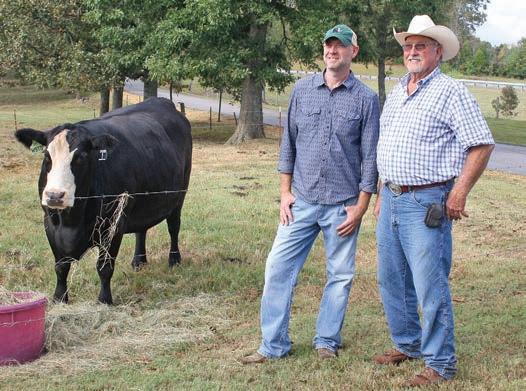
Supporting youth has always been a priority for Martin. With the help of the county Extension service, he created a beef heifer program to help area youth in 4-H and FFA begin building their own cow herds. Martin Farms has helped 79 young people purchase a registered Simmental or SimAngus heifer of their own. The $1,500 voucher gives each young person a unique opportunity to start their herds with breed-leading genetics. To date, the Martins have awarded over $92,500 in scholarships and vouchers.
Cynthia Conner, Bozeman, Montana
Simbrah World, Let’s Talk, Sire Summary, Sire Search, member catalogs, ASA ads, banners, and display booths. Born in Binghamton, New York, her family, which included two younger siblings, later moved to Ohio. By 1980, she had graduated from Miami University in fine arts/graphic arts. “The economy was terrible,” she said. “Of 30 graphic design students in my class, only five found a job in the industry.”
To make ends meet, she worked odd jobs, while sending resumes to design companies. “I did whatever I could find, including working in a candy/bakery store, before taking a graphic position creating brochures, catalogs, manuals, and signage for a truck plant, then joined the artistic staff of Wright State University.”
Cynthia and Mike, who met as students at Miami, were married in 1985 on top of Cadillac Mountain in Maine’s Acadia National Park.
Cynthia Conner has spent half of her life serving ASA. As she retires, the Association has awarded her with its symbol of excellence: the Golden Book Award.
In the fall of 1985, Cynthia Conner and her husband, Mike Kostry, purchased a home on three acres near Wilmington, Ohio. “Our house was surrounded by crops and livestock producers,” she recalled. “One day I saw a neighbor unload an impressive, yellow-and-white-spotted bull. Five years later, when I began work for a Montana cattle association, I learned that animal was a Simmental.”
Beginning in 1990 and spanning 33 years, Conner poured her heart and energy into her position as the lead graphic artist of the American Simmental Association’s publicity arm. She had a critical hand in 300 issues of the Register; 125 issues of SimTalk; and applied her artistic talents to such materials as Simbrah International ,
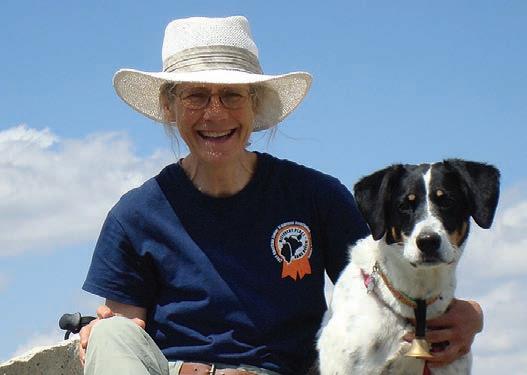
In 1988, the couple set out on a 13-month trip to visit all US states and Canadian provinces possible. (They hit every state but Hawaii.) During that trip they visited Montana, and vowed to make it their future home. She worked as a short-order cook before answering an ad for a graphic artist position at ASA.
Even though she had no background in the industry, she impressed CEO Brian Kitchen during her interview. He told her that she would be the lead artist for a magazine that was being moved from Kansas City to Bozeman, and that she would be responsible for graphics, layout, and distribution for the magazine, which had been founded as an ASA subsidiary.
“We produced our first issue in November 1990, and continued to learn over the next thirty-two-and-a-half years, fine-tuning as we went,” she said. “As the industry became more and more sophisticated, so did we, eventually
26 Register / July/August 2023
Chris and Neil Martin at their 2015 sale, with one of their Simmental females, “Vanilla Bean.”
Conner is a passionate dog trainer, competing in dog agility; her dogs are also along for many outdoor adventures.
becoming more efficient and reliant on computerized production.”
Leisure time usually finds Cynthia and Mike exploring remote mountain ranges, hiking and backpacking while making frequent use of their Northern Lite Camper. “We intend to concentrate on Montana, Idaho, Wyoming, and the Dakotas after retirement,” she proclaimed.
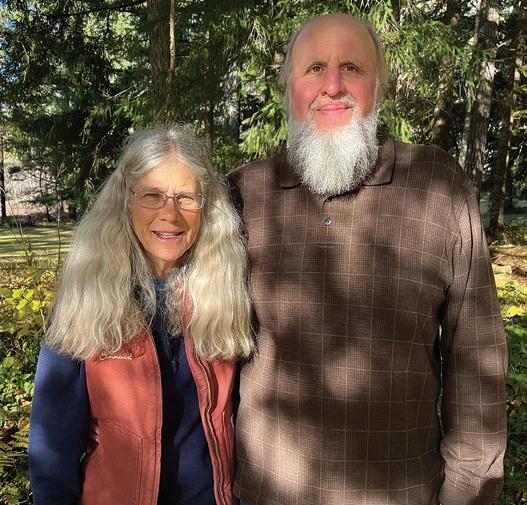
An accomplished dog trainer, She has become deeply involved with dog agility, having competed with four different dogs in local, state, and national events. Cynthia and Torrey, her current dog, qualified for the 2022 Nationals, but were unable to attend.
She is also the custodian of a productive garden that provides their annual supply of vegetables.
During the past year, Cynthia and her coworker, Jim Largess, reached retirement at the same time. Both stayed on to train their successors following an appeal by CEO Wade Shafer.
Subsequently, the ASA Board of Trustees by unanimous agreement voted to present both with Golden Book Awards, in recognition of dedication, loyalty, and highquality production over more than three decades.
Jim Largess, Bozeman, Montana
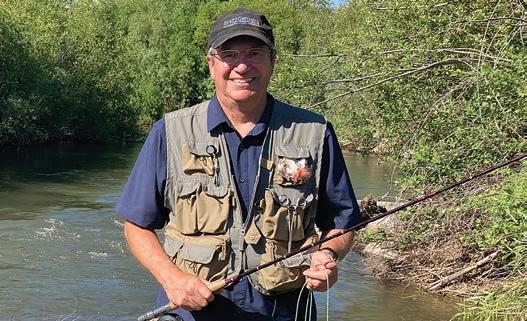
That is also where he met and married Deanna, a Helena native, who was in the process of graduating from Carroll College as a dental hygienist. He became a printer apprentice and worked in that field to pay the bills. In 1979, they moved to Bozeman where Jim found work as a printer for an engineering firm. After settling in Bozeman, they became parents of two boys: Mike, a former airline pilot, who is married to Stephanie and is the father of Brady; and Andy, an ex-Marine, who is married to Ali. Both boys reside in Bozeman.
Jim Largess caps a 38-year career with ASA, with 33 years of that time leading the way, ensuring that magazines and other printed materials met critical deadlines. ASA recognized him with its highest award as he reached retirement.
Jim Largess was born in Worcester, Massachusetts, and also lived in Chicago, Washington D.C., and Oklahoma City before striking out on his own. “My father worked for the Federal Railroad Administration, so we moved a bit,” he explained. “When I was 19, I decided to head for Montana after reading a newspaper article. I landed in Helena with everything I owned crammed into my 1970 Chevy Malibu.”
In 1985, Jim accepted employment at American Simmental with responsibility for the Association’s print shop and mailroom. “Having had no background in agriculture or the cattle industry, I found a whole new world that I had never seen except for the end product that shows up in the grocery store meat case. I found the industry very welcoming and enjoyed interacting with the producers I met,” he said.
In 1990, when ASA moved its publications in-house from a contracted firm in Kansas City, Largess was asked to join the fledgling Register staff at its new home at ASA headquarters. Since that time he has been devoted to the production and ultimate success of ASA Publication, Inc., the Association’s for-profit subsidiary.
Little did he anticipate that his dedication, attention to detail, and work habits would lead to a prestigious Golden Book Award, ASA’s highest honor. Fittingly, he
(Continued on page 28)
July/August 2023 / Register 27
Conner and her husband, Mike Kostry. The couple traveled across the US, deciding to make Montana their home.
Largess has been an integral part of growing ASA Publication into the business it is today.
2023 Golden Book Awards
(Continued from page 27)
goes into the exclusive Golden Book membership simultaneously with fellow magazine staff member Cynthia Conner.
“Jim has been a vital part of the American Simmental Association and ASA Publication,” said Executive Vice President Wade Shafer. “Over his nearly four decades on staff, he has displayed expertise, diligence, unmatched effort, invaluable leadership, and great strength of character. He is richly deserving of ASA’s Golden Book Award. And we wish him well in retirement.”
Through his work ethic and dedication, the Register and SimTalk have become the pride of the ASA membership and the envy of the seedstock cattle industry. The Register is the primary source of “Information, Education, and Communication” as decreed by the Board of Trustees. Founded in the 1990s, SimTalk quickly became the gold standard for member advertising to commercial bull buyers.
Additional high-quality materials have been routinely turned out by Publication staff over the years, including, but not limited to: Simbrah World, Let’s Talk, Sire Source, sale catalogs, ASA ad slicks, display booths, and banners.
“Retirement means that Dee and I will have more freedom to travel. I can go fishing, biking, and hiking during the week and of course, more time with family and friends,” he concluded. “It is hard to walk away from something that has been such a major part of my life for 38 years. I am grateful for all the people that I have worked with and who helped me along the way, especially to the ASA and former CEO Earl Peterson for taking a chance on this city kid.”
Golden Book Award Recipients 1982 to Present
Jerry Moore, ’82, Canton, OH
Dr. Horst Leipold, ’82, Manhattan, KS
Dr. Harry Furgeson, ’82, Anaconda, MT
Don Vaniman, ’85, Bozeman, MT
Dr. Ray Woodward, ’86, Miles City, MT
Lou Chesnut, ’86, Spokane, WA
Jess Kilgore, ’87, Three Forks, MT
Arnold Brothers, ’87, McIntosh, SD
Rob Brown, ’88, Throckmorton, TX
Bob Dickinson, ’88, Gorham, KS
Tom Abell, ’89, Wharton, TX
Ron Baker, ’89, Hermiston, OR
Albert West, III, ’90, San Antonio, TX
Miles Davies, ’92, Deer Trail, CO
Henry Fields, ’92, Claude, TX
Dr. Earl Peterson, ’92, Littleton, CO
Colville Jackson, ’92, Gloster, MS
Ancel Armstrong, ’93, Manhattan, KS
Javier Villarreal, ’94, Acuna Coah, Mexico
Dr. Harlan Ritchie, ’94, East Lansing, MI
Bud Wentz, ’94, Olmito, TX
Kay Thayer, ’95, Bozeman, MT
Walt Browarny, ’95, Calgary, AB
Steve McGuire, ’96, Bozeman, MT
H.W. Fausset, ’96, Worland, WY
Hugh Karsteter, ’97, Cushing, OK
Nina Lundgren, ’97, Eltopia, WA
Don Burnham, ’99, Helena, MT
Dr. Bob Schalles, ’99, Manhattan, KS
Tom Risinger, ’99, Crockett, TX
Bill Spiry, ’00, Britton, SD
Bob Christensen, ’00, Malvern, IA
Kay Klompien, ’01, Bozeman, MT
Robert Haralson, ’01, Adkins, AR
Dr. John Pollak, ’02, Ithaca, NY
Dr. Dick Quaas, ’02, Ithaca, NY
Dr. Jerry Lipsey, ’03, Bozeman, MT
Marty Ropp, ’03, Bozeman, MT
Jim Taylor, ’03, Wallace, KS
Dr. Joe & Mary Prud’homme, ’04, Tyler, TX

Dr. Bob Walton, ’05, DeForest, WI
Sam Smith, ’05, Prague, OK
28 Register / July/August 2023
Largess and his wife, Deanna, moved to Bozeman in 1979.
Golden Book Award Recipients 1982 to Present (continued)
Emmons Ranch, ’05, Olive, MT
Hudson Pines Farms, ’06, Sleepy Hollow, NY
Dan Rieder, ’06, Bozeman, MT
Silver Towne Farms, ’07, Winchester, IN
Gateway Simmental, ’07, Lewistown, MT
Dr. Larry Cundiff, ’07, Clay Center, NE
Reese Richman, ’08, Tooele, UT
Clifford “Bud” Sloan, ’08, Hamilton, MO
Sally Buxkemper, ’09, Ballinger, TX
Nichols Farms, ’09, Bridgewater, IA
Triple C Farms, ’09, Maple Plain, MN
Linda Kesler, ’10, Bozeman, MT
Stuart Land & Cattle, ’10, Rosedale, VA
Powder Creek Simmentals, ’10, Molena, GA
Tom Clark, ’11, Wytheville, VA
Harrell Watts, ’11, Sardis, AL
Frank Bell, ’12, Burlington, NC
John Christensen, ’12, Wessington, SD
Bob Finch, ’12, Ames, IA
Willie Altenburg, ’13, Fort Collins, CO
Tommy Brown, ’13, Clanton, AL
Roger Kenner, ’13, Leeds, ND
Dr. Michael Dikeman, ’14, Manhattan, KS
Val & Lori Eberspacher, ’14, Marshall, MN
Hounshell Farms, ’14, Wytheville, VA
Verlouis Forster, ’15, Smithfield, NE
Jennie Rucker, ’15, Hamptonville, NC
Dr. Mike Tess, ’15, Bozeman, MT
Bill Couch, ’16, Owensville, IN
Billy Moss, ’16, McCormick, SC
Pine Ridge Ranch, ’17, Dallas & Athens, TX
Dr. Calvin Drake, ’17, Manhattan, KS
Jim Berry, ’17, Scales Mound, IL
Reflected R Ranch, ‘18, Sugar City, CO
Swain Select Simmental, ‘18, Louisville, KY
J.W. Brune, ‘19, Overbrook, KS
Doug Parke, ‘20, Paris, KY
Bob Volk, ‘20, Arlington, NE
Gordon Hodges, ’21, Hamptonville, NC
Steve Reimer, ’21, Chamberlain, SD
Fred Schuetze, ’21, Granbury, TX
Tom Hook, ’21, Tracy, MN
Kevin Thompson , ’21, Almont, ND
Parke & Nina Vehslage, ’21, Brownstown, IN
Scott Riddle, ’22, Hubbard, TX
Wade Schafer, PhD, ’22, Bozeman, MT
Gib Yardley, ’22, Beaver, UT n
Bronze (Under $500):
• Name listed in Fall Focus program (must commit by June 26).
• Name included on sponsor poster.
• Name on fallfocus.org.
• Group photo at the event.
Silver ($500 – $999):
In addition to the above perks, silver donors also receive:
• Banner ad on fallfocus.org
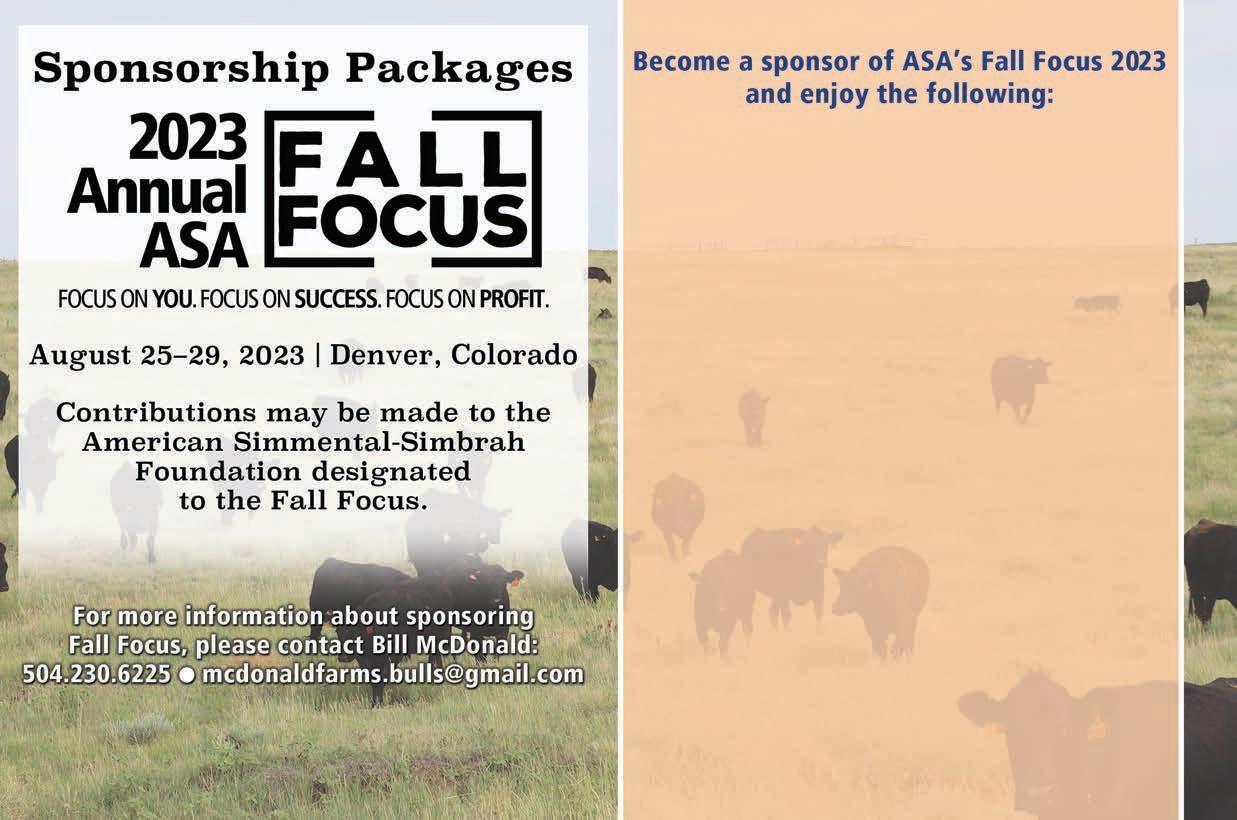
• Designed poster — 20 x 30 inches.
• eNews recognition.
• Tabletop space by registration desk for business promotion.
• Slideshow promotion during breaks.
Gold ($1,000 – $3,499):
In addition to the above perks, gold donors also receive:
• An article about the donors in the Register and online.
Platinum ($3,500 and above):
In addition to the above perks, platinum donors also receive:
• Ten minutes to address attendees.
July/August 2023 / Register 29
Best Practices to Receive the Most Accurate Genetic Predictions
Clearly define breeding objectives
With the ability to increase the rate of genetic change comes the possibility to make mistakes at a faster pace. Breeding goals need to be clearly identified to ensure that selection at the nucleus level matches the profit-oriented needs of the commercial industry.
Use whole herd reporting
Inventory-based reporting captures more complete phenotypes on reproduction and longevity traits, and thus creates more accurate genetic selection tools.
3







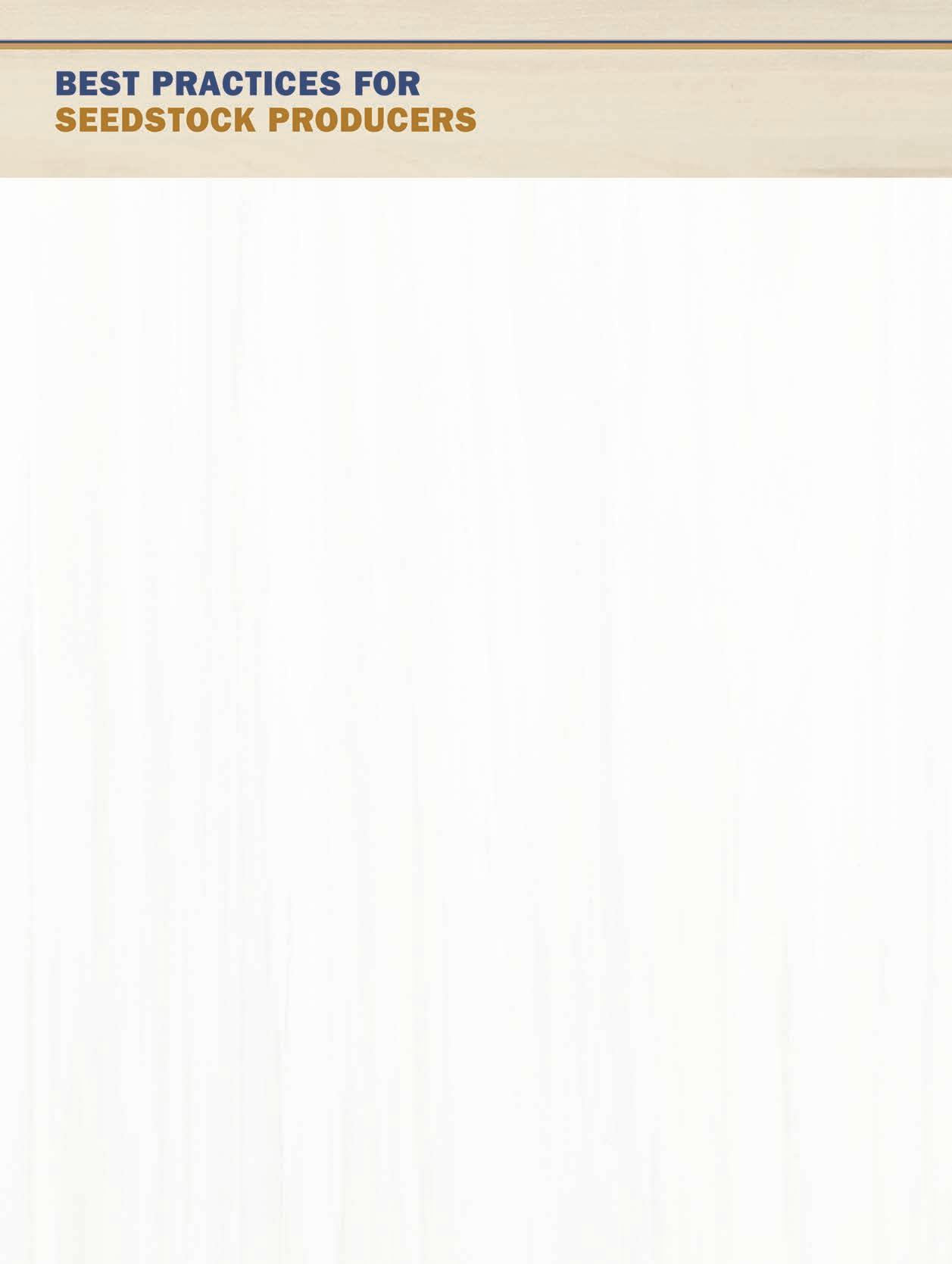
Properly define contemporary groups
It is important for the precision of the genetic evaluation to group animals treated uniformly. Proper reporting of contemporary groups reduces bias in EPD.
Take data collection and reporting seriously

Phenotypes are the fuel that drives the genetic evaluation. Take pride in collecting accurate data. Report records on the complete contemporary group in order to paint the most accurate picture of the genetics in these cattle. If possible, collect additional phenotypes like mature cow weight, cow body condition score, udder scores, feed intake, and carcass data.
Make both thorough and accurate phenotypic data collection for economically relevant traits a high priority
The quantity and quality of fertility traits need to dramatically improve. Providing disposal codes to identify why females leave the herd is vital. Commercial data resources, where the true economically relevant traits exist, are going to become more critical to capture. Breeders can help prove the genetics of their own seedstock by encouraging their commercial customers to join ASA’s Commercial Total Herd Enrollment (THE) option and add valuable data to the evaluation.
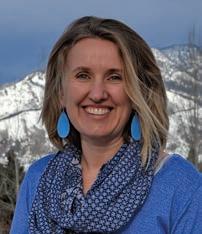
Use index-based selection

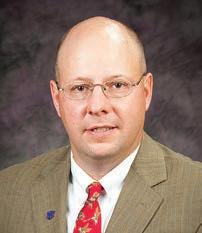
As the list of published EPD continues to grow, using economic selection indices will become even more helpful to reduce the complexity of multiple trait selection.
If the number of EPD increase, tools to reduce the complexity of sire selection for commercial producers must continue to develop. Breed associations and seedstock producers have the obligation to aid commercial clientele in making profitable bull selection decisions.
Use genomics

Genomic selection offers an opportunity to increase the rate of genetic change and break the antagonistic relationship between generation interval (the average age of the parents when the next generation is born) and the accuracy of selection (e.g., accuracy of EPD) — two components that determine the rate of genetic change. However, as with any tool, genomic information must be used correctly and to its fullest extent.
Adding a DNA test to your decision
is like knowing . . .
u 25+ calving ease scores
u 22 birth weights
u 25+ weaning weights
u 25+ yearling weights
u Stayability/productivity records on 15 daughters



u 6 carcass weights
u 10 marbling scores





u 8 ribeye area measurements
All this from a test you can complete before you wean the calf.
Jackie Atkins, PhD Matt Spangler, PhD
Bob Weaber, PhD Wade Shafer, PhD
1
2
4
5
6
7 30 Register / July/August 2023
Best Practices for Genomic Testing
All animals within a contemporary group should be genotyped.

If genomic data are meant to truly enable selection decisions, this information must be collected on animals before selection decisions are made. The return on investment of this technology is substantially reduced if it is used after the decision is made. The ASA’s Calf Crop Genomics (CCG) program offers 50% off GGP100K test for breeders who commit to genotype the entire calf crop. See sidebar for more details.
Both male and female animals should be genotyped.
The promise of genomic selection has always suggested the largest impact is for lowly heritable and/or sex limited (e.g., fertility) traits or those that are not routinely collected (e.g.,disease). This is indeed true, but it necessitates that genotyped animals have phenotypes. For sex-limited traits, this becomes a critical choke point, given that historically the vast the vast majority of genotyped cattle are males. If producers wish to have genomic-enhanced EPD for traits such as calving ease maternal and heifer pregnancy, they must begin or continue to genotype females. The ASA has a unique program called the Cow Herd DNA Roundup (CHR) to help herds collect female genotypes. See sidebar for more details.
Total Herd Enrollment (THE)


A cow inventory reporting program, THE requires participants to provide annual reproductive and inventory status on their cow herd. THE is designed to improve quality of data submitted for the genetic evaluation, and in turn improve and develop reproductive EPD. By submitting data on the entire calf crop or contemporary group, breeders will receive more accurate predictions of their cattle. The ASA has four THE options to fit most seedstock and commercial operations.
Cow Herd DNA Roundup (CHR)
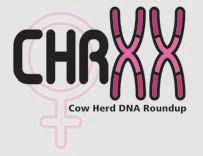
The Cow Herd DNA Roundup (CHR) is designed to increase the number of female genotypes to better predict maternal traits, such as maternal calving ease. Genotyping entire herds reduces bias created when only the best cattle are genotyped. Gathering massive amounts of genotypes on entire cow herds will significantly improve the genomic predictions and rate of genetic progress. As parentage testing is included, CHR herds will have pedigrees validated through DNA. Participating breeders benefit from having genomically enhanced EPD on the entire cow herd — equivalent to a lifetime number of calf records in several traits for an exceptionally low cost.
Calf Crop Genomics (CCG)
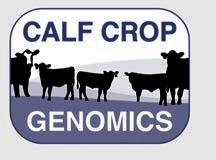
Calf Crop Genomics, a research project launched by the ASA in collaboration with Neogen Genomics, offers 50% off GGP100K genomic test including parentage ($25 compared to $50 equivalent test) to participating breeders who test their entire calf crop. Genotyping entire calf crops is important to use genomically enhanced EPD (GE-EPD) for selection decisions, reduce selection bias in genomic predictions, and increase the volume of genotyped animals for future improvements to genetic predictions. The latter two points make any singular genomic test in the future better for all members using genomics.
of additive genetic merit.




Do not forget the value in correcting parentage errors, tracking inbreeding levels, identifying unfavorable haplotypes, estimating breed composition, and estimating retained heterozygosity. All of these can be garnered from populations that have a well-defi ned set of genotyping protocols.
The beef industry should be congratulated for the rapid adoption of genomic technology, but there is a lot of work to do. Of critical importance is the fact that genomic technology will continue to change and does not replace the need for phenotypes nor the fundamental understanding of traditional selection principles including EPD and accuracy.
Carcass Expansion Project (CXP)
Despite the importance of carcass traits to our industry, few producers devote resources to collecting and recording actual carcass data. While the Carcass Merit Program (CMP) is a valuable progeny test, it is limited in the number of records produced. We cannot depend on the CMP alone to bring in carcass data. In the age of genomics, it is clear we need genotypes on animals with actual carcass phenotypes. Adding another layer of commitment to predicting carcass traits, the ASA initiated a new program, called the Carcass Expansion Project, in the fall of 2018 to increase the number of carcass records on genotyped animals. The ASA is are ramping up both phenotypic and genotypic data collection on terminal calves — a vital part of our vision.
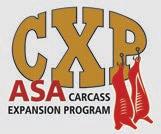
1
2
Genotypes can provide useful information in addition to predictions
3
July/August 2023 / Register 31
2023 Lifetime Promoter Award

 by Lilly Platts
by Lilly Platts
Pearl Walthall has been a livestock photographer and member of the Simmental community for decades, traveling across the country to capture images at shows, events, and more. ASA is recognizing her dedication to the breed and industry with the Lifetime Promoter award.
Started in 2019, the Lifetime Promoter Award recognizes those who make significant contributions to the Simmental breed. Recipients of this distinguished award are selected based on major contributions to the promotion and advancement of SimGenetics and the American Simmental Association.
Walthall makes her home in Windsor, Missouri, with her husband, Greg. They run a Simmental, SimAngus, and Angus cow herd. She grew up in northeastern Ohio on a crop farm where her parents had a feedlot and predominantly Hereford cattle. Walthall’s grandfather passed his love for showing cattle on to her. At the age of nine she enrolled in 4-H, becoming skilled in showmanship. She also joined FFA, and started showing professionally for several large Hereford operations. While attending Ohio State University, she interned for Glenkirk Farms, a Hereford and Simmental operation in Maysville, Missouri, helping them show a large string of cattle.
The Walthalls owned WW Cattle Company — a fitting service — for over 20 years. They had many successes in the show ring, including over 23 national champions, all with cattle they bred themselves.
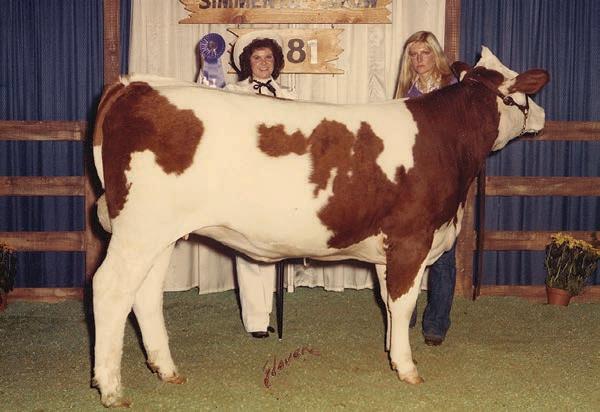
the photos for WW Cattle Company clients, and soon word spread about her skills. This led to her being hired for on-site livestock photography.
She has photographed many national cattle events, including AJSA Classics and other ASA events. Walthall’s eye for cattle, and understanding of how each animal should be positioned to look its best have made her a leader in the industry.
Walthall has also judged shows, which she started doing in Ohio in the 1970s. She and Greg have judged shows at the National Western Stock Show, Fort Worth Stock Show, the American Royal, the North American International Livestock Exposition, state fairs, district shows, and beef expos. She takes the responsibility of judging seriously, focusing on choosing sound, functional cattle.
Pearl’s Pics has expanded beyond the show ring, and includes weddings, senior pictures, and more. She still predominantly works with those in agriculture, understanding the style and settings these clients like.
Supporting youth has long been a priority for Walthall, and she is known for her willingness to share her knowledge about cattle and photography. She also dedicates extra time during shows to ensure that every youth — not just the winners — have the opportunity to have their animals photographed.
Walthall’s business, Pearl’s Pics, was born out of a desire to combine her passion for the beef industry with her love for photography. She began packing a camera as a child, and took photos for the high school yearbook. The fitting business opened the door for her to take photos of show cattle since customers often needed promotional photographs of their animals. She had observed other major livestock photographers, and understood the elements of a good photograph. Walthall began taking all of
Previous Award Recipients
2019 Ron Miller, Plattsmouth, Nebraska
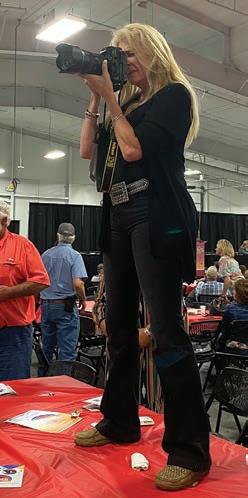
2020 Carlos and Sister Guerra, La Muñeca Cattle Company, Linn, Texas
2021 Larry Martin, Clinton, Illinois
2021 Keith “Sundance” Ruff, Pleasant Hill, Illinois
2022 Kansas State University Department of Animal Science and Industry n
32 Register / July/August 2023
The Simmental breed has been a major part of Walthall’s life. She is pictured here at the 1981 Northern International Livestock Exposition with a champion heifer.
Walthall photographing at an AJSA National Classic. She has photographed many national Simmental events.

Antibiotics
 by Lilly Platts
by Lilly Platts
Farmers and ranchers will now be required to obtain a prescription for antibiotics that were previously available over the counter. GFI #263 went into effect on June 11, 2023. Dr. Ronald K. Tessman offers insight and advice so producers can be prepared for this change.
Livestock producers are typically comfortable with obtaining and administering antibiotic drugs when needed. So, why did the Federal Drug Administration (FDA) recently issue new guidance for the industry requiring a prescription for products previously available over the counter? Guidance for industry (GFI) #263 was put into place for a number of reasons, including to better track the use of antibiotics and ensure that producers are upto-date on current practices.
Dr. Ronald K. Tessman, a technical consultant for Elanco Animal Health’s beef division, explains that while this change may initially seem like one more thing for producers to worry about, it should be looked at as a future positive. Currently, the FDA tracks antibiotic use through sales, which may be misleading since producers usually have more antibiotics on hand than is actually administered during a period of time. “The industry gets a bad rap for misusing antibiotics. This is a way to show that we are responsible,” he says.
The new GFI is an extension of the 2017 Veterinary Feed Directive, which put the use of antimicrobials in livestock feed under veterinarian oversight. The new rule includes the use of antimicrobial injectables, intramammary preparations, and oral boluses; it applies to animals in food production, as well as pets, like dogs.
The new ruling does not require that veterinarians administer the drugs, but it does require that producers contact their veterinarian with antibiotic needs in order to receive a prescription. Tessman explains that most established producers already have an established Veterinary Client Patient Relationship (VCPR); if a producer — large or small — does not have an established relationship with a veterinarian, it is important to start one. This can be done by researching local veterinary practices, talking to neighbors or friends about who they use, and making a phone call.
Once an animal shows signs of sickness, quick treatment is critical. Fortunately, producers will be able to calculate the amount of a particular antibiotic drug they expect to need before important seasons, like calving, and their veterinarian can write out a prescription to cover their needs beforehand. “Think about how often
you’ve used an antibiotic in the past five years, and get an idea moving forward of how much you will need to have on hand,” Tessman suggests.
While veterinarians are able to sell these products, producers are not required to purchase them directly from a veterinary clinic if a more affordable option is available. Online suppliers will still require a prescription. Fleet stores may or may not be able to continue selling antibiotics, depending on state law.
Tessman adds that this new rule may be an opportunity for producers to check their current inventory, make sure the antibiotics they have on hand are not expired, and consult with a veterinarian to ensure their current practices are up-to-date. Talking to a veterinarian may reveal that a different antibiotic would be better suited for certain treatments. “I look at this as a benefit — it is inconvenient in some ways because we can no longer just go buy the drug we need, but it does make us think about our practices,” he says.
Producers with questions about the new ruling are encouraged to contact their veterinarian, or take the opportunity to establish a VCPR. A list of the products affected by GFI #263 is available by scanning the QR code below. n

34 Register / July/August 2023
Most Prolific Donor Cows
July/August 2023 / Register 35 Reg. # Name Birth Date Breed # of ET $API $TI Owner Progeny
2584182 HF Serena 2011-02-08 PB SM 305 106.8 76.8 Osborn Cattle And Trennepohl Farms 2446017 MISS Werning KP 8543U 2008-02-17 PB SM 287 118.9 69.6 Rust Mountain View/Jared Werning 2410956 EKHCC Red Jewel 760 2007-04-25 PB SM 269 100.7 64.7 Jaron & Kevin Van Beek 2529932 TJ MS 38W 2009-01-26 PB SM 257 156.2 76.5 Bichler Simmentals/Lazy C Diamond Rch 2711735 Haras Hairietta Clone H4W 2009-01-23 1/2 AN 5/16 MA 233 104.4 68.2 Hara Farms 1/8 CA 1/16 CS 2385520 Miss Knockout 74T 2007-03-15 PB SM 233 89.6 60.6 Scott Hobbs-Jones Cattle-102 Cattle Co 2291327 GCF Miss Caliente 2005-01-01 PB SM 236 90.2 50.1 Dr Josh Ervin 2304803 Miss Werning 534R 2005-03-26 PB SM 221 82.5 54.7 Dale Werning 2437282 HS Stop And Stare U118L 2008-02-13 PB SM 232 102.0 73.8 Brooke Polzin 2289443 Lazy H Burn Baby BurnR34 2005-05-11 PB SM 225 100.3 63.2 Rocky Hill Farms 2317687 LRS Ms Dakota 559R 2005-03-21 PB SM 217 109.5 73.7 Taylor Farms 2575604 TJ 22X 2010-03-16 PB SM 215 144.3 83.9 Rosebud Cattle Company 2481646 STF Onyx 451W 2009-01-02 PB SM 217 98.4 53.0 Back Home/Double Bar D Rnch/Z Henthorn 2387869 SS Magnificent Dreams 2007-01-08 PB SM 210 133.4 66.9 Kasl Simmentals 2527626 CCR Ms Apple 9332W 2009-09-21 PB SM 198 115.9 74.0 Bichler Simmentals 2184078 3C Melody M668 BZ 2002-05-20 PB SM 193 127.6 73.5 Wager Cattle Co 2637396 WHF/PRS/HPF Alley 247Y 2011-09-07 PB SM 176 112.9 70.0 Brooke Polzin 2334099 Hooks Sonya 20S 2006-02-21 3/4 SM 1/4 AN 172 184.2 88.6 Sonya Profit Partnership 2186256 Kappes Sadie M166 2002-03-21 PB SM 172 94.2 70.1 Kappes Simmentals 2764813 HILB Crazy N Love A475S 2013-03-08 PB SM 173 97.3 59.2 HILB/JASS 2334127 Hooks Sarita 4S 2006-02-12 3/4 SM 1/4 AN 165 138.4 72.1 Clear Springs Cattle Co 2427972 Miss CCF Sheza Babe U2 2008-01-03 PB SM 164 99.7 56.9 Double J Ranch 2288113 HPF Ms Honey R007 2005-01-18 PB SM 158 91.7 56.0 S&S Simmentals 2995924 JBSF Proud Mary 2015-03-07 PB SM 152 112.6 67.7 Sara Sullivan 2587614 SWC Ruby Yetti 143Y 2011-03-18 PB SM 147 106.3 71.5 Shipwreck Cattle - Ruby Cattle Co 2399540 TJ 8T 2007-01-10 1/2 SM 1/2 AN 143 154.3 86.7 Lazy C Diamond Ranch 2974794 WS Miss Sugar C4 2015-01-16 PB SM 146 192.0 107.5 Lucas Cattle Company 2435596 JS Flatout Flirty 46T 2007-09-15 PB SM 143 96.4 62.2 Loschen Farms 2409588 JF Ebonys Joy 709T 2007-02-19 PB SM 132 127.7 66.1 Hoffman Ranch 2521166 KLS Diamond W516 2009-05-15 PB SM 135 123.4 69.8 Jones Show Cattle & Campbell Land/Cattle 2544686 Bailey`s Ms Dreamy 946W 2009-05-07 PB SM 131 114.0 70.9 Bailey Livestock 2390630 Double J Miss T739 2007-02-20 PB SM 123 107.8 73.6 Double J Farms 2341061 JF Ebonys Joy 612S 2006-03-13 PB SM 124 129.8 65.9 Janssen-Silverstone-Hodgen-Carpenter 2374428 Kenco Miley Cottontail 2006-10-13 PB SM 125 111.2 72.4 Barrett G Billingsley 2476049 JM Steel My Heart 2008-12-13 PB SM 124 80.2 55.9 Cramer Schneider/Bill Sloup/Fenton 2606756 KS Penny X395 2010-02-27 PB SM 117 115.2 71.9 Roger A Kenner 2357410 KA TCF Independence S30L 2006-07-04 PB SM 121 97.6 55.0 Windy Ridge Simm & Gonsior Simm 2584931 HPF/Borne Knockout Y030 2011-01-17 PB SM 115 82.2 68.5 Shoal Creek Simmental 2660685 KS Miss Sequoia Y770 2011-04-11 3/4 SM 1/4 AR 109 114.5 70.5 CTN Simmentals 2385142 Double R Miss 29G T18 2007-02-02 PB SM 107 100.3 71.8 Hailey Eads 2427330 Miss CCF Sheza Looker 2007-09-07 PB SM 112 105.3 55.7 Steven Cooper - Buddy Ogles 2290840 SVF NJC Ebonys Charm R29 2005-03-04 PB SM 110 110.2 70.5 Welsh Simmentals 2538616 HS Sweet Gem X141N 2010-03-04 PB SM 109 121.1 73.1 Full Circle Farm 1585473 Miss Triple T Marie 1992-01-04 PB SM 106 93.5 55.3 Sloup Simmentals 2865421 JS Black Satin 9B 2014-02-27 PB SM 110 87.1 59.3 Campbell Land / Maggie Griswold 2643777 W/C Miss Angel 2870Z 2012-04-10 PB SM 106 121.3 68.9 Jared Werning 2577373 K-LER/RC Miss Hoya Saxa 2011-03-22 PB SM 107 126.2 74.6 Derek Richie/Johnson Cattle Co 2387878 SVF NJC Jewel S306 2006-09-17 PB SM 102 132.4 69.6 New Beginnings Cattle Co 2764833 Ruby NFF Rhythm 2124Z 2012-09-26 PB SM 99 120.6 57.3 Ruby Cattle Co/Nelson Family Farms 2781371 Miss Werning 174Y 2011-04-06 PB SM 96 105.5 59.6 Dale Werning n
Hydrops Pregnancies in Simmentals
Seeking reports of active cases
The Nebraska Bovine Congenital Defects program recently recognized an increased number of reports of hydrops pregnancies in a line of Simmental cows. Hydrops is expressed by females developing markedly enlarged abdomens in late pregnancy due to a dramatic excess of fluid in the fetal membranes. At present, these cases point to a genetic link but the pattern of inheritance and percent of affected offspring is unknown. Reports involve daughters and granddaughters of the bull WS All Aboard B80, ASA #2852207.
For the most up-to-date information, please see the “Further Information” link on simmental.org. A webinar discussing what is currently known with the University of Nebraska–Lincoln and ASA team is available at simmental.org. Finally, if you have a potential case to report, please use the “Report Case” link at simmental.org to provide us with your contact information, and a team member will get back to you soon.
Is Your Membership Up To Date?
Has your email address, phone number, or address changed? If so, be sure to get your Herdbook account updated so that you do not miss out on any important information from ASA. This can be done two ways:
1. Log in to Herdbook, go to the “My Account” tab, click on “Update Account,” and update your contact information.
2. Mail or email us a completed Membership Change Form (found at simmental.org, click on “membership”). The form can be emailed to members@simmgene.com.
DNA Updates
DNA Research fee application
DNA research fees are $1/minute and may apply to parentage rechecks, misidentified samples, or other scenarios involving unusual increase in staff time. Each case is unique, so estimating the final charge is difficult. If there are a significant number of animals not qualifying to a parent(s), please reach out to the DNA Department to discuss a rough estimate of time and cost.
Testing Timeline
Allow 4–5 weeks. Please communicate any deadlines you may be working with to the ASA DNA staff. Expedited and tracked shipping is always recommended when ordering kits and shipping samples to Neogen.
$30 DNA Research Fee
Sample packages sent to the ASA office (with or without paperwork), instead of the lab, will incur a $30 research fee. With the exception of research projects (CHR, CCG, CXP), all samples are to be sent directly to the lab with ASA paperwork.
TSU/Applicator Price Increase
Due to rising costs from the TSU manufacturer AllFlex™, ASA has increased the price of TSU sampling kits to $22 per box. Each box still includes ten individual tissue sampling units. The cost of TSU applicators has also been increased from $40 to $50 each.
Semen Sample Fee
Effective immediately, ASA will be implementing a $7.20 processing fee for all semen straws and/or semen samples submitted to Neogen for DNA testing.
Update to HerdBook’s Programming Logic
Purebred Simbrah Classifications
In September of 2022, the ASA Board of Trustees and staff of ASA were notified of a concern regarding the Purebred Simbrah classification some animals received. Upon an in-depth review, ASA determined that the programming logic in HerdBook Services (herdbook.org) from 2013 gave an animal a Purebred Simbrah classification where another interpretation would classify these same animals as Percentage Simbrah.
The ASA Board met on Monday, November 28, 2022, and passed two resolutions that clarified the interpretation of the programming logic to be used for the Simbrah Registry – Breed Classification and provided for the implementation of the clarification.

The updated programming logic was implemented on December 15, 2022, (the “2022 Programing Logic”). This notice is to inform the membership that for some records currently classified as Purebred Simbrah (referred to as the 2013 Programming Logic), the 2022 Programming Logic will classify these same animal records as Percentage Simbrah. To read the full clarification go to simmental.org.
DNA Research Programs Continue
The Calf Crop Genomic (CCG) testing project, and Cow Herd DNA Roundup (CHR) continue to accept new submissions. The CCG offers a 50% off GGP-100K genomic test including parentage ($25 compared to $50 equivalent test) to participating breeders who test their entire calf crop group.

The CHR program also continues to accept new herds. The project tests females at $25 per sample for a GGP100K genomic test. Members must test 90% of their calving-age cows to qualify for the reduced price. When members submit mature cow body weights and body condition scores or hip heights on 90% of their calving-age cows, they will receive a $5 credit to their account for each reported cow. Cows must be 18 months of age or older when mature cow measurements are taken to qualify for the $5 credit. The $5 credit will only be applied once in an animal’s life. For example, if a member received a credit for the phenotypes in 2018 for that cow, they cannot receive another credit for the same cow with a new weight and BCS in 2019.
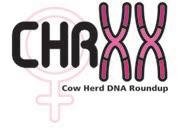
Additional requirements apply for both programs. Please visit simmental.org, and email researchdna@simmgene.com for full program requirements and more information.
Digital Billing Statements
As of August 1, 2022, members who have provided an email address only receive digital statements. As postal service delays continue to increase, digital statements allow for fast and effective communication. If you did not receive a statement please check your spam folder. Your billing history is available any time through your Herdbook account. Log in, select the My Account tab, select View ASA Billing History, choose the Month and Year and click on Apply. Please log in, go to the My Account tab and make sure the email that is on file is current.
36 Register / July/August 2023 BULLETINS
Fourth Quarter Cost-Share Funds Available
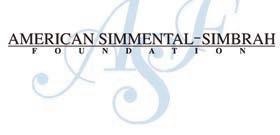
The fourth quarter of the 2022–2023 fiscal year ended on June 30. This means that, for those who have not already done so, quarterly Check-Off dollars are available for distribution to state associations. The applications are located on simmental.org. Go to membership → State Associations → Promotional Check-Off Dollar Request. Please do not submit this list by email.
Many state association activities have occurred during these past months. Please submit any pictures or information about these events to editor@simmgene.com to be published in the State Scene section of the Register. Please contact Callie Cooley at stateassoc@simmgene.com if you have questions.
2023 Year-Letter is L
In accordance with the Beef Improvement Federation guidelines, the year-letter animal identification for 2023 is L, and will be followed by M in 2024, and N in 2025. The letter K was the year-letter designated during 2022.
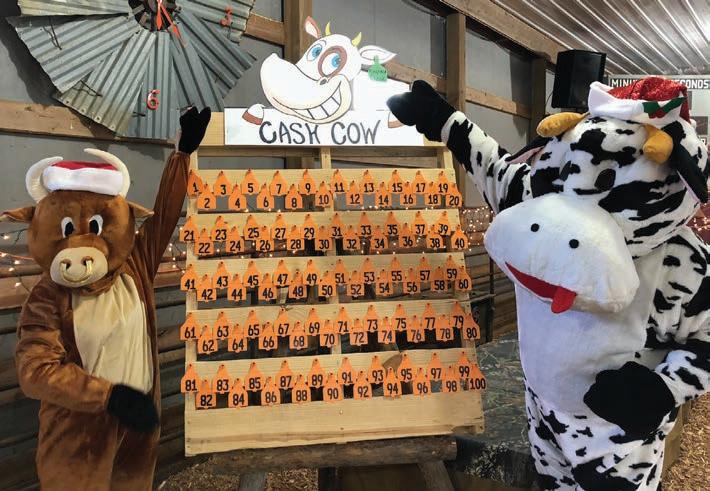
Per the BIF guidelines, the following letters are not used: I, O, Q, and V.


Digital Certificates Available
ASA recently launched a new feature on Herdbook allowing members to download official digital certificates for registered animals. ASA no longer scans and emails or faxes copies of printed certificates, and is encouraging shows, sales, and other events to utilize digital certificates. Digital certificates are the easiest, most reliable way to obtain an official record quickly. To download a digital certificate, search for your registered animal on Herdbook. If you are logged in and the animal is registered in good standing, there will be a button to download a digital certificate. Only the current owner of an animal can access the digital certificate. Please contact the registrations department with any questions at simmental@simmgene.com.
Herdbook Update to Birth Weight Ratio and Collection Method
The ASA Board of Trustees has passed a resolution to change the direction of the ratio for birth weights so that larger ratios are assigned to animals with heavier birth weights in their contemporary group and vice versa. This resolution came about to standardize the direction of the ratios so that higher ratios uniformly mean more of that trait.

Additionally, breeders can now indicate if they use hoof tape to estimate birth weight in Herdbook. There is a column called “BwMethod” next to the column where birth weights are entered in the animal entry
page. If the weights were estimated using hoof tape, then simply put a T in the “BwMethod” column. If birth weights were obtained using a scale, there is no need to enter anything.
Office Holiday Schedule
Monday, September 4 Labor Day
Thursday, November 23 & Friday, November 24 Thanksgiving


Monday, December 25 & Tuesday, December 26 Christmas n

July/August 2023 / Register 37
Cash Cow Fundraiser Fall Focus • Denver, Colorado • August 25–29, 2023 95 Selling 95 ear tags for $100 each. 5 5 ear tags will be auctioned at Fall Focus. Winning ear tag will receive $2,000 cash!
more information or to purchase an ear tag: Mia Bayer 715-573-0139
Eichacker 605-421-1138 or any Foundation Board Member fallfocus.org Purchase one or more of the 95 ear tags for a chance to be in the final draw-down during the Fall Focus Recognition Dinner. A total of 10 will participate in the final draw-down. Five tags drawn from the 95 sold throughout the week; the other five will be auctioned off during the dinner. You’ll receive $2,000 cash if you have the last ear tag number drawn! American Simmental-Simbrah Foundation
For
Cathy
by Larry H. Maxey, founder and superintendent, NAILE Fullblood Simmental Shows larryhmaxey@gmail.com
Our Pioneers — Law and Order “Old West Style”
In the 1800s, the Western frontier of what became a huge part of the US was essentially without a formal, organized government. As these lands were brought under the umbrella of our federal government as territories and later as states, an uneasy form of local governance gradually evolved. A roughly 50-year period witnessed the painstakingly slow process of bringing some semblance of order to a vast region where none had existed prior.
I daresay that today you would be hard-pressed to find many of our citizens without any knowledge of the history of our Western frontier, with its infinite stories of hardship. The cowboys, the Native Americans, the great people of a bygone era, and yes, the many accounts of the lawlessness and violence that accompanied that westward expansion as well. I have come to learn that there are conflicting schools of thought about the level of violence and lawlessness: those that contend that the narrative is overblown and those who strongly support it.
One supporting the notion of less conflict and civil unrest than is commonly portrayed was put forth by historian Eugene Hilton. He wrote that the Western frontier “was a more civilized, more peaceful place than American society today” (1974). Terry Anderson and P.J. Hill stated “the West was (wrongfully) perceived as a place of great chaos with little respect for property or life,” and further they contended that “property rights were protected and civil order prevailed” (1979). They credit this orderliness to land clubs, cattlemen’s associations, mining camps, and even wagon trains as substitutes for established government.
My research for recent columns covering John Chisum and The Old Chisholm Trail uncovered many examples of violence, incivility, and lawlessness that would certainly differ from these arguments. Comparing the scale of these accounts to modern-day society should be left to more capable historians. However, from my perspective, ample evidence exists of unscrupulously “bad people” committing heinous crimes regularly. In the Chisum piece, I referenced the infamous “Lincoln County War.” So, what was this “War” and what relevance does it have to the title for this column?

The war began in 1878 and lasted until 1881. It was a conflict between rival factions in Lincoln County, New Mexico Territory, before it became a state. It was made famous from the involvement of the notorious William H. Bonney (born as Henry McCarty) a.k.a. “Billy the Kid.”
The two rivals competed for profits from dry goods and cattle interests in the county. James Dolan maintained a dry goods monopoly through his general store referred to as “The House.” In 1876, the wealthy English-born John Tunstall and his partner Alexander McSween opened a competing store with backing from the famous cattleman John Chisum. Dolan allied with Sheriff William Brady and the Jesse Evans Gang. Tunstall–McSween formed a posse of armed men known as the Lincoln County Regulators. They, too, had lawmen consisting of town constable Richard Brewer and Deputy US Marshall Robert Widenmann.
The war was marked by incredible violence. Revenge killings were the norm. By 1880, most of the original participants were dead from gun violence. With the death of Tunstall, killings went unabated for several months. It all came to a bloody conclusion with the five-day battle of Lincoln, the death of McSween and the scattering of the Regulators. By the war’s end, 23 people lay dead and another 23 were wounded.
The Anderson–Hill perspective described above may have some merit, given the vast expanse of the Western wilderness of the US. That sheer vastness allowed for all sorts of communities to exist with various commercial and communal interests. These communities were perhaps noncompeting and more cooperative where conflict was minimal. However, those non-government “organizations” they cite bear no resemblance to the “organizations” involved in the Lincoln County war and many other conflicts in the Old West. I thus question the sublime theories from the Anderson–Hill conclusions.
The year 1880 brought a new sheriff to town, named Pat Garrett. He was given the mission to hunt down, capture, or kill a large group of “outlaws” responsible for a multitude of crimes as well as their involvement in the Lincoln County War. This group included the infamous “Billy the Kid.” Garrett eventually completed that task although the facts and circumstances surrounding it remain disputed to this day.
Law and Order “Wild West Style” had countless examples of extreme violence and lawlessness similar to the accounts of the Lincoln County War. In the absence of a functioning government, civil society adjusted to ever-changing conditions to survive. The burden of “Law and Order” often fell upon the individual and the rugged individualism that is the cornerstone of this great nation. This is a true testament to the “Pioneers” who took up the 1854 challenge of Horace Greeley when he declared “Go West young man, and grow up with the country”!
Not to readily dismiss the fascinating, yet highly controversial life of Pat Garrett, the next column will attempt to unravel the life and times of this complex man who certainly contributed to bringing law and order to the Old West. n
Editor’s note: This is the thirtieth in the series Our Pioneers.
Is there a Simmental pioneer who you would like to see profiled in this series? Reach out to Larry Maxey or the editor to submit your suggestions:
larryhmaxey@gmail.com • editor@simmgene.com

38 Register / July/August 2023 FLECKVIEH FORUM
COW SENSE
Ten questions designed to test your beef industry knowledge:
1. Define “double-muscling” in a beef animal.
2. Which of the continents has the greatest number of cattle?
3. Which states are in the Eastern Region in ASA’s geographical alignment?
4. What does the word “herbivorous” mean?
5. When is the zygote formed?
6. What is the term commonly used to describe the use of futures to reduce market risk and guarantee a sale price?
7. What are the two basic factors in determining USDA quality grades in beef cattle?

8. What are the two basic
factors in determining USDA feeder grades?

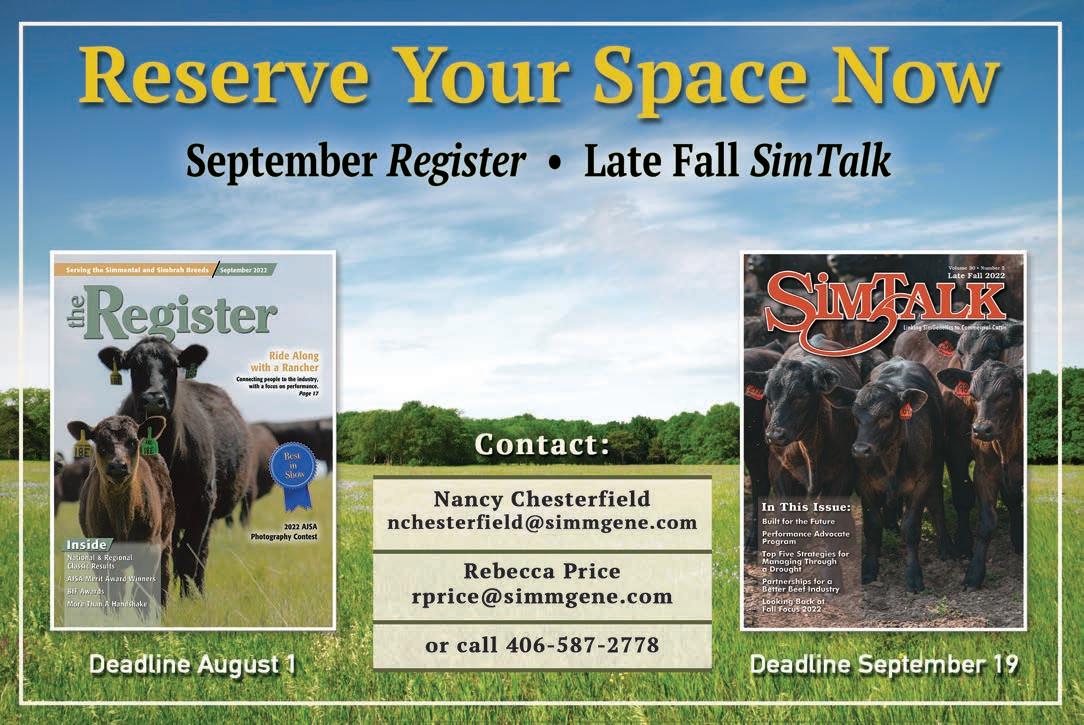
9. Which minerals are most responsible for formation of bone and teeth?
10. What is the phenotype of a bull that is heterozygous for the polled trait? n
Answers:
6. Hedging; 7. Maturity and degree of marbling; 8. Frame size and muscling; 9. Calcium and phosphorous; 10. He is polled.
2. Asia; 3. All states east of the Mississippi River except for Illinois and Wisconsin; 4. Planteating; 5. At fertilization;
1. Abnormally large muscles in the rear quarter and forearm;
July/August 2023 / Register 39
Developing leaders through friendship, networking, and communication skills!
by Hallie Hackett, South Central Region
With summer shows wrapping up, weather cooling down (at least in some parts of the nation), and fall shows soon to pick up, juniors might find themselves relaxing, even if just for a moment. Before we know it, we will all be right back into the thick of show season. For younger exhibitors, this time seems endless and shows seem plentiful.
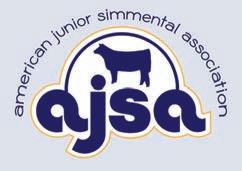
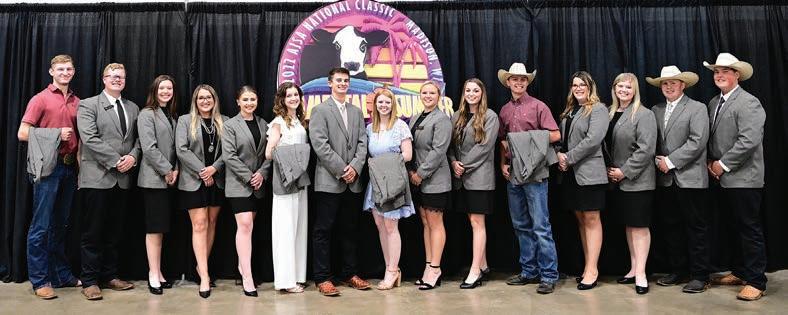
continued to admire them into adulthood, and strive to be like them in my current endeavors. The further that I have gotten in my show career, the more I have realized the impact that I have on other people. Having juniors and parents come to me and share how I have impacted them has opened my eyes to the person that I have become.
As I’m sure most exhibitors have heard: “There is always someone in the barn watching you.” With a new year coming and many events to attend, all juniors should remember this quote. No matter your age, skill level, or experience, there are people who will see you, even when you don’t realize it. Not only does this count in the show ring, but throughout the barn and contest rooms. Time and time again, SimGenetics exhibitors have proven their ability to lead in and out of the show ring. With this being said, I challenge our juniors to uphold this standard, be the person you looked up to, and remember: somewhere in the barn, there is a kid that wants to be just like you. n
As for myself, I can remember all of my time as a young showman. I was always told to find an older person that I looked up to, and try to be like them. This bit of advice applied not only to showmanship skills, but in contests, leadership, and simple interactions. It wasn’t hard for me to find several individuals to admire. Those individuals, even unknowingly, have shaped the way that I have grown up, the showman I have become, and the leader I strive to be. As my role models and I have gotten older, I have www.juniorsimmental.org
Eastern Region
Luke Harker Hope, IN 812-371-7976
lukeharker2252@gmail.com
Walker Housley Dayton, TN 423-599-8346
walkerhousley@gmail.com
Matt Koverman Minford, OH 740-988-0203
koverman.18@osu.edu
Garrett Walther Centerville, IN 765-238-8584 gwalther55@gmail.com
North Central Region
Jazlynn Hilbrands Holloway, MN 320-297-1611 jmhilbrands@gmail.com
Martha Moenning Hayfield, MN 507-923-1114
marthamoenning@gmail.com
Emerson Tarr LeRoy, IL 309-205-0860 eleetarr2021@gmail.com
South Central Region
Rylee Abney Watonga, OK 405-446-7588 rabney914@icloud.com
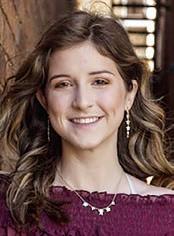
Kaitlyn Cloud Carthage, MO 417-793-7824
kcloud2002@gmail.com
Hallie Hackett Texarkana, TX 903-556-6758 halliehack10101@gmail.com
Blake Henrichs Okarche, OK 405-831-1672 bhenrichscattleco@gmail.com
Western Region
Bella Beins Deweyville, UT 435-452-2391 bella.beins@gmail.com
Blake Fabrizius Carr, CO 970-556-9115 bwfabrizius@gmail.com
Jonna McCullough Fort Benton, MT 406-868-0253 mcculloughjonna1@gmail.com

Sydney Schwenk Boring, OR 503-847-6828
sydney.schwenk55@gmail.com
40 Register / July/August 2023
AJSA CONNECTION
2022–2023 American Junior Simmental Association Board of Trustees
No matter your age, skill level, or experience, there are people who will see you, even when you don’t realize it.
Romania, Paraguay Markets to Open
The USDA has reopened the doors allowing Romania to revive imports of pork products to the United States, while also considering approving plans by Paraguay to export its beef in US markets following high-level negotiations. USDA’s Food Safety and Inspection Service (FSIS) issued a notice in early May that will let Romania resume sending pork products to the US, 16 years after the Romanian government has voluntarily stopped such exports. Following an audit of Romania’s current inspection system for swine slaughter and further processing, FSIS determined that the nation’s processors maintain “an equivalent inspection system,” opening the door for resumption of those exports on products, which were produced after May 2, FSIS reported in a recent news release.
Meanwhile, USDA indicated that Paraguay is moving in the right direction toward becoming eligible to export its beef products to the United States after talks with Paraguay’s Agriculture and Livestock Minister’s office. Daniel Whitley, USDA’s administrator of Foreign Agricultural Service (FAS), said that “beef from Paraguay is safe and inspection protocols currently meet all USDA standards. That should move the process along for approval after the standard comment period and review.”
World Food Prices Drop, but Meat Costs Increase
The benchmark index of international food commodity prices declined in May — averaging 124.3 points, down 2.6% from April and as much as 22.1% below the all-time high reached in March 2022 — amid significant drops in quotations for most cereals, vegetable oils, and dairy products, the Food and Agriculture Organization of the United Nations (FAO) reported.
However, the FAO Meat Price Index rose in May by 1.0%, averaging 117.9 points, driven primarily by a steady high Asian import demand for poultry meat and persistent supply tightness for beef in the US. Those levels still were 4.1% below those seen for May 2022, the agency said.
Concerns over potential short-term poultry supply challenges, due to widespread avian flu outbreaks, persist, the report said. Meanwhile, beef saw higher global demand for Brazilian supplies, despite the continued high cattle slaughter in Australia.
Pork prices rose for the fourth successive month, although only marginally, as supply limitations stemming from high production costs and animal diseases elsewhere boosted demand for Brazilian supplies. The index tracking sugar prices globally also rose in May.
UK Considers Fast Approval for Cultivated Meat
The UK’s Food Standards Agency last week released a statement indicating that it is exploring the possibility of fast-tracking regulatory systems for cultivated meat.
In the statement, the governing body noted it is being led by a study it commissioned from international accounting firm Deloitte. The report found the move could help the UK meet its carbon reduction targets.
One option in the report suggests taking a “collaborative regulation” approach, which would allow alt-proteins to be sold in the UK without a prolonged novel foods assessment if the products have already been lawfully approved and sold in other parts of the world.
The agency was quick to point out that this report isn’t necessarily illustrative of the policies it ultimately develops. “This report will be used as an input to support thinking within the FSA about how we design a future regulatory model,” the FSA statement said.
The current regulatory approval process for novel foods takes an average of 35 months, and the British Institute of Economic Affairs in February released a statement urging the FSA to update the 25-year-old process.
“The EU’s novel food regulations — which have been retained in UK law post-Brexit — have delayed the kind of innovation we need to tackle the challenges associated with industrial farming,” the non-profit wrote.
R-CALF Urges USDA to Ditch
Paraguayan Beef Import Proposal
Independent cattle group R-CALF USA is urging the USDA to withdraw its recently announced proposal to allow importation of beef from Paraguay.
In comments submitted to USDA’s Animal and Plant Health Inspection Service (APHIS), R-CALF says the proposal should be withdrawn because it poses a risk of introducing foot-and-mouth (FMD) disease into the United States.

The group also noted that the APHIS risk analysis on which the proposal is based relies on data and an on-site visit conducted ten years ago.
The National Cattlemen’s Beef Association expressed similar points of contention when USDA announced the proposal.
R-CALF argues further that APHIS’ risk evaluation methodology cannot accurately assess the risk for FMD outbreaks in countries with histories of FMD.
“Several times since 1997, APHIS had underestimated the risk for the reemergence of the disease in countries that are not free of FMD,” said R-CALF USA CEO Bill Bullard. “For example, the agency was dead wrong about the risks in Uruguay, Argentina, South Africa, South Korea, and Japan.”
An APHIS spokesman said, “We are aware we received adverse comments and are evaluating all comments received as we determine appropriate next steps.”
Australian Beef Exports to US See Significant Jump
Australian beef exports to the United States experienced a significant surge in May, marking a turnaround after a period of subdued trade, according to Meat & Livestock Australia.
The exports to the US reached a record monthly tally of 19,786.5 tons, a substantial 44% increase compared to April and the highest figure in the past year. The boost in exports comes as the US deals with reduced domestic production due to droughtdriven herd reduction.
This surge in Australian beef shipments to the US, along with solid growth in other export markets, reflects the positive momentum and increased supply in Australia’s beef industry.
Australia was fifth in beef exports to the US behind Canada, Brazil, Mexico, and New Zealand in Q1 2023.
Shipments to all export markets reached 100,838.3 tons, marking a 27% increase from April. China emerged as Australia’s largest volume market for the second consecutive month.
Other markets, including South Korea, Indonesia, and the Middle East, also recorded growth in Australian beef imports. However, the trade with the United Kingdom remained minimal ahead of the new Free Trade Agreement, which came into effect on June 1, eliminating tariffs on future exports. n
July/August 2023 / Register 41
INTERNATIONAL
Drought and Forage Challenges Continue

in 2023
by Derrell Peel, Oklahoma State University/Bovine Veterinarian
Persistent drought in major beef cattle production regions continues to have a significant impact on the cattle industry despite improvements in drought conditions in other parts of the country. USDA National Agricultural Statistics Service (USDA–NASS) released two reports recently that indicate that forage challenges continue in the central and southern Great Plains.
The weekly Crop Progress reports include range and pasture conditions in each state, from May to October each year. The US average of poor to very poor pasture conditions in early May was 37%, less severe than one year ago across the country. The first week of May showed that the worst pasture conditions, measured as the percent poor and very poor, are in the states of Kansas (64%), Nebraska (68%), Oklahoma (54%), and Texas (52%). Kansas and Oklahoma are in significantly worse shape this year compared to last year with poor/very poor ratings of 41% and 39%, respectively, one year ago. The Nebraska rating slightly improved from last year at 68% versus 73% poor/very poor, while Texas also improved compared to the 74% poor to very poor rating one year ago.
The latest monthly crop production report from NASS also included the December and May 1 hay stocks. For the beginning of the hay crop year, May 1, US hay stocks were down 13.4% year-over-year and were down 26.4% from the ten-year 2012–2021 average. Compared to the ten-year average, in Kansas, May 1 hay stocks were down 25.5%, Nebraska was down 51.6%, Oklahoma was down 62.3%, and Texas was down 41.3%. Collectively, these four states account for 25% of US May 1 hay stocks on average. In 2023, these four states accounted for 18.7% of total May 1 hay stocks and are down by 44.9% compared to the ten-year average for the four-state total.
Not only were the May 1 hay stocks very limited in these states, but continued drought is impacting 2023 hay production. On average, the states of Kansas, Nebraska, Oklahoma, and Texas account for about 21% of total US hay production. These states ranked (1) Texas, (4) Nebraska, (5) Kansas, and (7) Oklahoma for hay production in the last decade. Reduced hay production this year in this region has implications well beyond the borders of these four states.
These four states accounted for 9.3 million beef cows on January 1, 2023, just over 32% of the total US beef cow herd, and include four of the top ten beef cow states: Texas (1), Oklahoma (2), Nebraska (4), and Kansas (6). Delayed, slow, and limited pasture and hay growth in these areas is likely still provoking some cattle liquidation. Total beef cow slaughter through April this year is down 11.2% from last year’s elevated level. However, it is likely that reduced beef cow slaughter in drought-free areas is masking some additional herd liquidation in these worst drought areas. In Oklahoma, for example, the auction volume of cull cows and bulls is up 21.9% year-over-year for the first 19 weeks of 2023. The much-anticipated herd rebuilding and corresponding market conditions in the beef cattle industry cannot begin in earnest until drought conditions ease significantly in these major beef cattle states.
Why Grazing Before Pastures are Ready Can Have Lasting Impacts and How to Limit the Damage
by Jack Arterburn, University of Nebraska Extension
Although near-record snowfall this winter brought many challenges in areas of Nebraska, the moisture the snow provided was welcomed after three years of below-normal precipitation. However, soil moisture is still below average and drought conditions are persisting in many areas of the States.
In the spring, plants rely on nutrients stored in the roots during previous years to initiate and sustain growth until enough leaf area is available to conduct photosynthesis. Without adequate growing season and fall moisture in previous years, nutrient storage is often limited. Not reducing grazing pressure during periods of below-normal precipitation can compound this deficit and reduce production in subsequent years. Although fall and winter precipitation can recharge soil moisture levels, growing season precipitation (April to September) typically accounts for most of the total annual precipitation and is vital to plant production and rangeland health.
When feed is expensive and hard to find and feeder cattle futures are optimistic, delaying pasture turnout or destocking to reduce grazing pressure are not appealing — especially if the available feed is low-quality and fails to meet a lactating cow’s nutrient requirements, causing negative impacts to calf performance and delaying return to estrus and her ability to rebreed.
Unfortunately, not delaying turnout or destocking is robbing Peter to pay Paul by saving the cost of feeding hay at the expense of reducing pasture production and further degrading pastures. Grazing before pastures are ready causes the plants to use additional nutrients from already low root stores to recover. If there are not enough nutrients stored in the roots, the plant may go dormant and stop growing, reducing the total annual production. In contrast, allowing pastures additional rest to build nutrient storage by delaying turnout could pay dividends in additional growth later in the year.
When pastures will be ready to graze depends on plant condition and characteristics. Plant condition results from previous grazing seasons’ management as well as soil moisture and soil temperature, which control the start and speed of plant growth. Cool-season plants are the first to break dormancy and the first to reach maturity before the hot summer months. Warm-season grasses wait for soil temperatures to get above 50 degrees Fahrenheit and continue to grow during the hot months until August.
Determining if a plant is ready to graze is as simple as counting leaves. The number of collared leaves that wrap all the way around the plant stem like a shirt collar indicates whether the plant is ready to be grazed. The rule of thumb is three collared leaves for cool-season grasses and four collared leaves for warmseason grasses. When grasses reach these minimums, enough photosynthesis occurs to sustain growth and allow storage of nutrients, which can be used to recover from grazing. Not waiting for the minimum number of leaves stresses the plant at a critical time and may reduce total annual production potential.
If grazing before pastures are ready is unavoidable, the negative impacts can be spread lightly across multiple pastures by only grazing each pasture for a few days before moving. The key is to not stay too long and only lightly graze the fresh growth.
42 Register / July/August 2023
BEEF BUSINESS
Grazing will stress the vulnerable plants; however, impacts can be limited if the plant is not grazed repeatedly and sufficient recovery time is allowed before being grazed again. As always, avoid grazing a pasture at the same time of year multiple years in a row. As a last resort, a sacrifice pasture can be designated to limit damage to a single pasture; however, the negative impacts may last for many years.
Another option is to lightly graze introduced pastures, hay fields, or sub-irrigated areas while allowing native pastures to reach leaf minimums. Be cautious not to reduce hay production later in the year by grazing these forages too short, not providing adequate rest following grazing, and if growing season precipitation is limited.
Resist the temptation to turn cattle out before grass is ready and use caution if there is no other option. Management practices now can have lasting impacts.
USDA Awards $2.29 Million in Farm Bill Funding to Protect Animal Health
by Jennifer Shike, Bovine Veterinarian
USDA Animal and Plant Health Inspection Service (APHIS) is awarding $2.29 million through the National Animal Health Laboratory Network (NAHLN) Farm Bill program to advance APHIS’ animal health preparedness. The 2018 Farm Bill provided funding for this program as part of an overall strategy to prevent animal pests and diseases from entering the United States and reduce the spread and impact of potential disease incursions.
“NAHLN funding is vital to safeguarding the nation’s food supply against threats posed by animal diseases, especially ones of foreign origin. Pork producers are focused on the 2023 Farm Bill and urge continued funding for the critically important “three-legged stool” of animal health, including National Animal Health Laboratory Network, the National Animal Vaccine and Veterinary Countermeasures Bank, and National Animal Disease Preparedness and Response Program. Continued funding for NAHLN is necessary to enhance animal health diagnostic testing for both endemic and high-consequence pathogens in the nation’s livestock and poultry. These laboratories are the first line of defense for detecting animal diseases and pathogens,” the National Pork Producers Council stated.
NAHLN, a network of federal, state, and university-associated veterinary diagnostic laboratories that provide ongoing disease surveillance, responds quickly to disease events; communicates diagnostic outcomes to decision makers; and has the capability and capacity to meet diagnostic needs during animal disease outbreaks. Since it started, NAHLN has grown from 12 AAVLD laboratories to 60 AAVLD laboratories throughout the US capable of testing large numbers of samples for specific disease agents.
“These Farm Bill funding awards will strengthen our ability to carry out our strategies for animal health emergency preparedness and better safeguard our agricultural industry,” Jenny Lester Moffitt, Under Secretary for USDA’s Marketing and Regulatory Programs, said in a release. “The more prepared we are to protect our agricultural commodities, the safer the food supply is for Americans and the rest of the world.”
NAHLN funding supports critically important projects focused on increasing capacity for disease testing through stockpiling
efforts, enhancing data management through IT standardization, and increasing high-throughput testing with the addition of diagnostic testing instruments and technical expertise in laboratories, USDA notes.
“Should foreign animal disease strike, these laboratories are the first line of defense in swiftly diagnosing and detecting the extent of the outbreak to limit the impact on producers,” USDA says in the release.
USMEF Trying to Add Value as Beef Production Declines
The US Meat Export Federation (USMEF) is taking measures to enhance the value of US beef in the global market as the country’s beef production declines, according to a Brownfield report.
Drought and input prices have contributed to a decrease in US beef production, prompting the need for financial incentives to encourage production recovery. John Herath from USMEF highlighted the importance of broadening the parts of the animal that generate value, as relying solely on certain cuts limits the overall value of the animal.
Expanding the diversity of beef cuts presents opportunities to meet the demands of various export markets. While certain beef cuts hold little value domestically, they possess significant worth in international markets. For instance, beef tongue is highly prized in Japan, while beef liver finds value in Egypt.
The report said USMEF aims to identify the optimal cuts for specific markets to maximize their value. Despite a decrease of 8% in volume and 22% in value in US beef and variety meat exports through March 2023 compared to the previous year, it is noteworthy that 2023 marked a record year for US beef exports. Notably, demand growth has been observed in regions such as Mexico (+16%), Hong Kong (+19%), Philippines (+15%), Caribbean (+21%), and Africa (+84%) during the current year.
Low-Carbon Beef Claims Discounted
The US Department of Agriculture (USDA) is being urged to prohibit meat producers from advertising their beef as “low carbon” by the Environmental Working Group (EWG). “There is no such thing as low-carbon beef,” said Scott Faber, EWG’s senior vice president for government affairs. The nonprofit organization’s petition also calls on the agency to require independent verification of other climate claims made on food labels, calling them both confusing and misleading.
Claims like “net zero” and “carbon neutral” on food products can have consumers believing that they result in reduced greenhouse gas emissions, rather than difficult-to-measure farmland practices, the document states. Filed with the USDA’s Food Safety and Inspection Service (FSIS), the petition was referred to the Office of Policy and Program Development for review, according to media reports. The USDA-approved certification for low-carbon beef is a voluntary program launched back in 2021 that requires participating producers to reduce greenhouse gas emissions by at least 10% below an industry baseline. n
July/August 2023 / Register 43
Cultivated Startup Hires Tyson Scientist
Clever Carnivore, a Chicago-based startup in cultivated meat, has hired Russell Thomas, a food scientist and a 33-year veteran of Tyson Foods, who also has experience in the cultivated food industry. He will serve as vice president of product development. He has expertise and experience in food safety, product development, and operations management, and will focus on accelerating the development of Clever Carnivore’s debut consumer product, the Clever Bratwurst, made with cultivated pork.
Thomas holds a bachelor’s degree in animal science and business, along with a master’s in poultry science and product technology from the University of Arkansas. More recently, Thomas served as vice president of product development with Mission Barns, a San Francisco-based cultivated fat company. In its early stages, Clever Carnivore has been focused on producing high-quality pork at consumer-ready prices; going forward, the company differentiates itself by using cell biology, recombinant protein technology, and advanced bioreactor design that it believes will foster greater production scale at a lower price.
Rules Updated for RTE Meat
The US Department of Agriculture (USDA) Food Safety and Inspection Service (FSIS) has released guidelines to help producers of ready-to-eat (RTE) meat and poultry products meet regulatory standards, especially plants that also make such foods. The guidelines cover dry and semi-dry fermented sausages, saltcured meats, and dried products that also are shelf-stable, the agency said in the guideline document.
The latest missive is designed to supplement more than five current documents that FSIS said do not adequately address “specific considerations related to the support of the lethality and shelf-stability of the products” listed in the updated document. These include bologna, summer sausage, pepperoni, salami, fermented sausages, basturma, country cured ham, salt-cured bresaola, and biltong and Droewors dried products.
FSIS has sent out a message seeking public comment on the updated guidelines 60 days after it first appears in the Federal Register. Comments are submitted through the Federal Rulemaking Portal Online or through the US Postal Service and eventually will be made available for public inspection.

Gene Editing Could Improve Heat Tolerance
by Maureen Hanson, Bovine Veterinarian
The detrimental health, well-being, and productivity effects of heat stress in dairy cattle could one day be partially solved through gene editing.
The currently experimental technology removes an undesirable genetic trait in an animal and replaces it with a more favorable one at the genome level, known among researchers and regulators as an “intentional genomic alteration” (IGA). It is possible to introduce traits within a species, and between species.
In the case of heat stress, two approaches are being taken by researchers to help cattle cope:
Slick hair coat gene – Some cattle have a shorter and shinier hair coat that makes them more comfortable in high-heat environments and thus less susceptible to heat stress. This unique
hair coat is the result of the dominant “slick” gene, which originates from the Senepol breed.
A collaborative project between researchers at Mississippi State University and the University of Puerto Rico studied 84 Holsteins with the naturally occurring “slick” gene. They found that the animals had lower body temperatures, lower respiration rates, and improved reproductive efficiency in tropical conditions, compared to herdmates with traditional hair coats.
Using a technology called CRISPR-Cas9, researchers in many parts of the world, including the United Kingdom, New Zealand, and the US, have successfully produced cattle with the slick coat gene. Semen from some sires that are homozygous for the slick gene through conventional breeding also is currently available.
Hide color alteration – New Zealand researchers are exploring how gene editing can dilute the jet-black hide color of Holsteins to make them less susceptible to heat stress. They said black absorbs more solar radiation, contributing to heat stress.
In their study, they used gene editing to swap the black gene in Holsteins with the semi-dominant color dilution phenotype from Galloway and Highland cattle. The resulting calves carried a typical, spotted-hide pattern, but instead of black, the darker pattern areas were a silvery gray color that would attract less heat.
Developers of gene-editing technology emphasize that the process simply takes traits already occurring in nature and shares them with other animals, thus exponentially accelerating genetic progress for that trait. In the case of heat stress, they emphasize environmental advantages along with animal health, comfort, and productivity.
Once an animal receives the IGA, it is passed on to future offspring, making it possible to replicate the trait via conventional breeding. In March 2022, the FDA approved the first IGA for animals intended for food production by making a “low-risk determination” for two genome-editing beef cattle created with the slick hair coat.
The FDA declared the animals and their offspring safe for human consumption. Acceligen, the company that developed the slick-coat cattle, is now free to market the cattle, their genetic material, and their offspring without further regulatory approval.
But in the US, the commercial application of gene editing still is subject to a case-by-case approval process. Dr. Steven Solomon, director of the FDA’s Center for Veterinary Medicine, said, “We expect that our decision will encourage other developers to bring animal biotechnology products forward for the FDA’s risk determination in this rapidly developing field, paving the way for animals containing low-risk IGAs to more efficiently reach the marketplace.”
ISU Advances Veterinary Diagnostics with High-Volume Testing Innovation
by Paige Carlson, Bovine Veterinarian
Iowa State University’s
Veterinary Diagnostic Laboratory
(ISU VDL) is set to revolutionize molecular diagnostic testing with the introduction of a cutting-edge machine: the “SmartChip.” This innovative device can hold over 5,000 samples on a plate no larger than a postage stamp and uses quantitative polymerase chain reaction (qPCR) testing technology, combined with a 384sample system featuring automated handling features, to significantly enhance its testing capacity, says a recent release.
44 Register / July/August 2023 CUTTING EDGE
“The historical patterns of pathogens are changing, so we need to be prepared for risks we haven’t seen before. Having this highthroughput capability will allow us to meet industry needs, providing more cost-efficient diagnostic tests as the need for testing grows,” says Rahul Nelli, a research assistant professor of veterinary diagnostic and production animal medicine, in the release.
To refine the use of high-volume testing methods, the VDL recently secured a nearly $1 million grant from the US Department of Agriculture’s Animal and Plant Health Inspection Service (APHIS). The project, funded by the American Rescue Plan Act of 2021, aims to prepare for future disease outbreaks. Through this initiative, researchers will ensure the accuracy and integration of the novel high-volume testing methods with existing systems for tracking and reporting test results.
“ISU VDL’s firsthand experience in responding to pandemics of high consequence to both animal and human health over the past few years, such as highly pathogenic avian influenza and COVID-19, have clearly illustrated the value of high-throughput testing platforms and need for further innovation,” said Dr. Rodger Main, ISU VDL director, in the release.
The SmartChip testing relies on microfluidic technology to detect targets of interest in samples, using a volume 100 times smaller than the VDL’s standard 96-well machines, the release explains. With samples precisely distributed in the chip’s 5,184 testing wells, the SmartChip machines can produce up to 30,000 test results per day. In comparison, the conventional 96-well method yields approximately 2,000 tests. Additionally, the 384well machine offers a more moderate increase in capacity, capable of handling about 9,000 tests per day through smaller samples and automated loading.
Nelli envisions the SmartChip testing as a reserve resource for sudden spikes in demand for qPCR tests. This reliable method detects trace amounts of genetic material, including infectious agents in humans and animals. On the other hand, the 384-well automated machines can be part of regular lab operations, mitigating labor shortages. Moreover, by making test prices more affordable, they pave the way for wider use of surveillance testing among livestock producers.
Over the next two years, researchers will focus on integrating the new testing machines with existing reporting software. They will also validate the new methods and develop protocols for various samples used in veterinary diagnostics, including fluids, fecal matter, eggshells, and feathers. By 2025, these high-capacity testing methods could potentially be implemented in the VDL.
Main emphasizes in the release that ISU VDL, with the largest veterinary diagnostic laboratory caseload in the nation, plays a crucial role in serving the needs of 21st-century food animal agriculture. Consequently, the next-generation high-throughput testing platforms will undeniably contribute to fulfilling these requirements. n
Tyson, Workers Reach Deal in Discrimination Lawsuit
Tyson Foods and a group of former and current employees agreed to a deal that ended a lawsuit against the company alleging numerous counts of racial bias.
The plaintiff group, led by LaTonya Roberts and Tamera Moorer, who worked at a Tyson facility in Sherman, Texas, filed the lawsuit in March 2022.
The lawsuit claimed Roberts and Moorer were treated differently than white employees and that the company retaliated against them when they complained about the treatment.
Since the initial lawsuit was filed, more defendants joined with similar allegations of racial discrimination. In court, Tyson denied allegations and referred to some as isolated incidents that were handled through the chain of command.
In December, the district judge brought on US Magistrate Judge Christine A. Nowak to mediate the case. Both sides met in May with Judge Nowak to reach a deal, which was not disclosed in the court documents.

JBS Building Cultivated Beef Facility in Spain
JBS announced in early June that its subsidiary, BioTech Foods, broke ground on a commercial-scale cultivated meat plant in Spain, which is set to be completed by mid-2024.
“With the challenges imposed on global supply chains, cultivated protein offers the potential to stabilize food security and global protein production,” said BioTech Foods co-founder and CEO Iñigo Charola in a statement earlier this year.
The facility, to be located in San Sebastian, is designed to produce more than 1,000 metric tons of cultivated beef per year, JBS said. The company said it could expand capacity to as much as 4,000 metric tons per year.
“The new BioTech plant puts JBS in a unique position to lead the segment and ride this wave of innovation,” said JBS USA’s head of value-added business, Eduardo Noronha, according to Reuters.
JBS acquired a 51% stake in Spain’s BioTech in 2021 in a $100 million deal, with $41 million directed to the plant construction.
Tyson Expands into Alt-meat Nuggets
Tyson Foods released a new line of plant-based nuggets under its own brand for the first time. “The first ship was in late March, and they would have started appearing on shelves in April,” a Tyson spokesperson said. “Foodservice products also launched in April.”
Previously, Tyson only offered plant-based alt-meat products under its Raised & Rooted brand. The company didn’t say that the Raised & Rooted brand will be discontinued, but the brand recently added new products.
This move into Tyson-branded alt-meat products may have been forecasted by CEO Donnie King as recently as May. “We’re looking at everything in this environment and in an effort to be the best version of Tyson we can be,” King told investors and analysts. “We’re looking at those smaller, uncompetitive dated assets and [asking] how do you make them competitive? Do you move that capacity somewhere else? We’re looking across the enterprise to evaluate those things.”
The Tyson-branded, soy-based nuggets come in two varieties — original and spicy — and are available nationwide at select retailers, including Target stores. n
July/August 2023 / Register 45
CORPORATE REPORT
Mark and Nolan Brunner 3553 Upland Rd. • Lost Springs, KS 785-466-6475 Kent 785-466-1129 Nolan 785-258-0173 Mark nolan@cowcampbeef.com
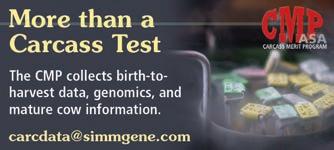



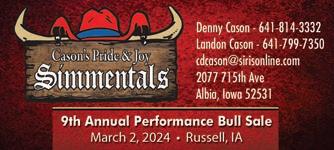
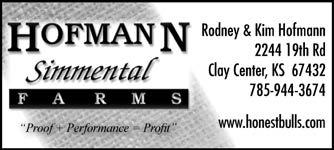


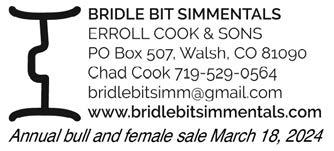

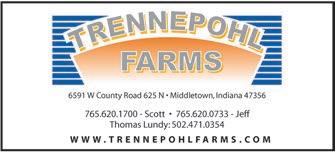



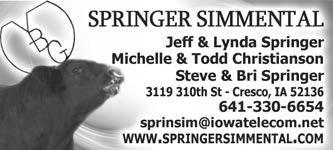
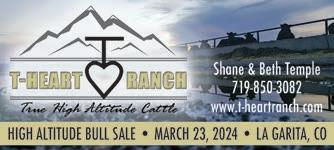
State Marketplace California Colorado Illinois Indiana Iowa Cattle Manager: Ben Lehman 563-920-0315 Owner: Jim Berry 6502 Rt. 84 South Hanover, IL 61041 815-297-5562 www.wildberryfarms.net Commercially Targeted Seedstock Red River Farms 13750 West 10th Avenue Blythe, CA 92225 Office: 760-922-2617 Bob Mullion: 760-861-8366 Michael Mullion: 760-464-3906 Simmental – SimAngus™ – Angus John & Barbara 812-546-5578 15633 E Jackson Rd. Hope, IN 47246 Dan, Jill, Luke & Chase 812-371-6881 Ben, Ashley, Gracie & Laynie 812-371-2926 Quality Red & Black Simmental Kansas DICKINSON SIMMENTAL AND ANGUS RANCH Kirk • 785-998-4401 (phone & fax) 2324 370th Ave. Gorham, Kansas 67640 www.dickinsonranch.com March 2024 52nd Annual Production Sale At the Ranch THE PERFORMANCE IS BRED IN – BEFORE THE BRAND GOES ON! 13703 Beaver Creek Rd • Atwood, KS 67730 785-626-3744 • drlyle@live.com www.dixsonfarms.com DX Dixson Farms, Inc. Carol Dixson, Kevin Dixson, & Lyle Dixson, D.V.M. Dixson Farms, Inc. JENSEN SIMMENTALS Steven A. Jensen • 913-636-2540 40532 John Brown Highway Osawatomie, KS 66064 jensensimmentals@gmail.com www.jensensimmentals.com H In our 6th decade breeding Simmental cattle. 46 Register / July/August 2023 Joe & Kim Mertz 785-458-9494 Abram & Dani Mertz 785-456-3986 7160 Zeandale Road Manhattan, KS 66502 www.rivercreekfarms.com 34th Annual “Built to Work” SimAngus Bull Sale, February 14, 2024
Camp Ranch Kent,
Spring
Spring Turn-Out
27, 2024
Cow
Bull Sale – Friday, January 20, 2024
Sale – Friday, April
Triangle
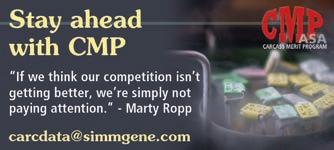




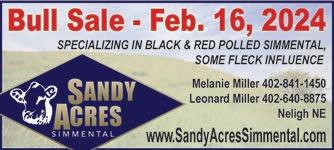

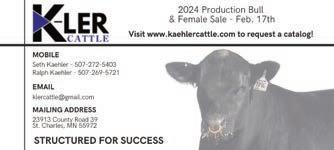
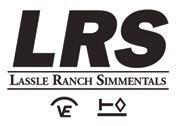

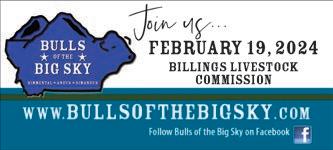
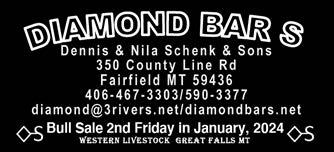

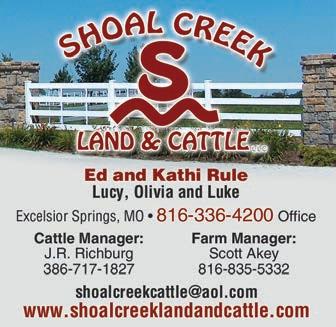

“Red and Black, Polled, Pigmented Simmentals” FORSTER FARMS Verlouis Forster Family 74096 Road 434 Smithfield, NE 68976-1039 Ph 308-472-5036 Verlouis 308-991-2208 Alan Cell Email: alan_forster@hotmail.com Just 20 minutes off I-80 Black Simmental Bulls & Females Purebred to Percentage J & C SIMMENTALS J C J C Jay & Kim Volk Clark & Leslie Volk Bob & Jeanette Volk 20604 US Hwy 30 • Arlington, NE 68002 volkjk@aol.com • www.jandcsimmentals.com
Annual Bull Sale –January 27, 2024 Jay 402-720-7596 • Clark 402-720-3323
LDr. Lynn Aggen Office: 507-886-6321 Mobile: 507-421-3813 Home: 507-886-4016 Matt Aggen Mobile: 701-866-3544 Home: 507-772-4522 Email: mattaggen@hotmail.com Harmony, MN 55939 www.oakmfarm.com Performance with Quality Prickly Pear Simmental Ranch Troy Wheeler, Cattle Manager: 406-949-1754 Gary Burnham: 406-439-2360 2515 Canyon Ferry Road • Helena, MT 59602 ASA No. 174 E-mail: ppsranch@gmail.com Birthplace of the first Polled Black Simmental Bull Made in Montana Sale • February 3, 2024 Clay & Marianne Lassle Sarah & Ryan Thorson 42 Road 245 Glendive, Montana Clay: 406.486.5584 Ryan: 406.694.3722 lrsbeef@midrivers.com lassleranchsimmentals.com
Nebraska
J&C
Minnesota Missouri
Cleo Fields 417-399-7124 Jeff Reed 417-399-1241 Forrest & Charlotte Lucas, Owners 26511 County Rd. 50 Cross Timbers, MO 65634 Office 417-998-6512 LUCAS CATTLE CO. www.lucascattlecompany.com Visitors Always Welcome Registered Simmentals, SimAngusTM & Angus Cattle July/August 2023 / Register 47 JD Anderson Arapahoe, NE 308-962-6146 powerlinegenetics.com powerlinegenetics@gmail.com Montana Bill Begger 482 Custer Trail Road Wibaux, MT 59353 Bill: 406-796-2326 John: 406-795-9914 darbegger@gmail.com Wednesday, February 7, 2024 • at the ranch, Wibaux, MT 180 Black Simmental, SimAngusTM and Angus Bulls to Sell 402-641-2936 Cell Nick and Andrea 303 Northern Heights Drive • Seward, NE 68434 sloupsimmentals@gmail.com • sloupsimmentals.com Join us at the Farm, October 21, 2023 for our 29th Annual Production Sale.
J
Darby & Annette Line 35355 Arrow Road • Miller, NE 68858 308-627-5085 Darby Cell www.trianglejranch.com Bull Sale last Sunday in January and Female Sale first Sunday in November.
Ranch

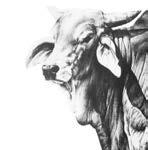
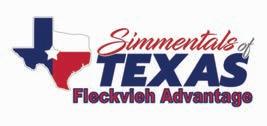
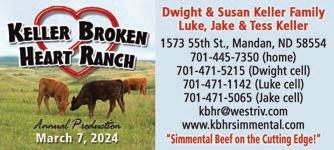
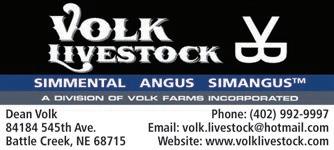


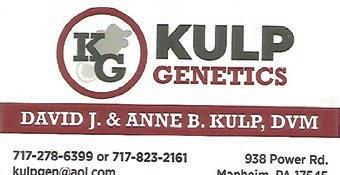


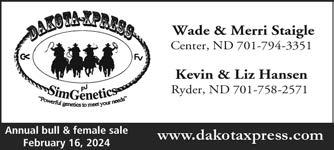



North American Fullblood Breeders BRINK FLECKVIEH 23098 Gunder Rd • Elkader, IA 52043 Jerry: 563-245-2048 • Preston: 563-880-2075 jbrink@alpinecom.net Visit our website: www.brinkgenetics.com North Carolina 8800 Row-Cab Line Rd. • Rockwell, NC 28138 704-279-3128 • 704-202-6171 Cell E-mail: myram@morrisonfarm.com www.morrisonfarm.com REGISTERED SIMMENTAL F-1 REPLACEMENTS REGISTERED BRAHMANS MYRA NEAL MORRISON North Dakota ( ) JF Western Cattle Source Jock & Brenda Beeson 100 Wohlers Drive Crawford, NE 69339 308-665-1111 (home) 308-430-2117 (mobile) 308-430-0668 (mobile) Email:wcsbeeson@bbc.net JENSEN SIMMENTALS Steven A. Jensen • 913-636-2540 40532 John Brown Highway Osawatomie, KS 66064 jensensimmentals@gmail.com www.jensensimmentals.com H In our 6th decade breeding Simmental cattle. Scott Riddle Fred Schuetze 817-894-0563 2649 Pear Orchard Road Granbury, Texas 76048 Website: simmentalsoftexas.com • Email: sotsimmentals@yahoo.com Fleckvieh & Fleckvieh-Based Simmentals • SimAngusTM • Simbrah 48 Register / July/August 2023 QBVJT Power by Design Quandt Brothers 701-710-0080 VJT Ranch 701-710-0843 Oakes, ND Sale February 20, 2024 5606 57th St. NE Leeds, ND 58346 Phone 701-466-2800 Erika 406-581-1188 erika.kenner@gmail.com Fax 701-466-2769 Roger, Jeanette, & Erika Kenner www.kennersimmental.com KENNER KENNER SIMMENTALS SIMMENTAL CATTLE 6322 Highway 35 Adams, North Dakota 58210 Joe: 701-331-0344 • Mark: 701-331-3055 Annual Production Sale • February 9, 2024 “BBS” THE MARK OF ...QUALITY... Nebraska cont. Claye and Michelle Kaelberer and Family 4215 County Road 85 • New Salem, ND 58563 701-220-3124 (cell) • 701-843-8342 (home) Edge of the West Bull and Female Production Sale each February Kaelberer Simmentals 5065 125th Ave. NE • Dahlen, ND 58224 tellings@polarcomm.com • www.ellingsonsimmentals.com Terry Ellingson & Family Annual Production Sale, January 26, 2024 Phone: 701-384-6225 Cell: 701-741-3045 Terry and Cathy Schlenker Family 7649 49th Street SE Montpelier, ND 58742 701-489-3583 (home) 701-320-2171 (cell) www.wilkinsonfarmssimmentals.com Wilkinson Farms Simmentals 39th Annual “Carrying On” The Genetic Explosion Bull Sale! Friday, February 9, 2024 • At The Ranch, Lehr, ND Shanon & Gabe Erbele Lehr, ND S 701-527-5885 • G 701-426-9445 gserbele@hotmail.com Kevin & Lynette Thompson Almont, ND H 701-843-8454 • K 701-391-1631 kevinandlynette@westriv.com www.tntsimmentals.com DVAuction.com TNT Simmental Ranch facebook.com/tntsimmentalranch Ohio
State Marketplace
Benda Simmentals



Jim and Jay Benda
26106 366th Ave. Kimball, SD 57355 605-778-6703
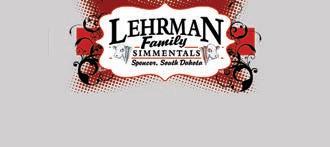
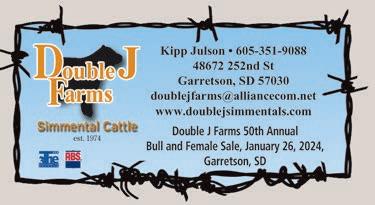
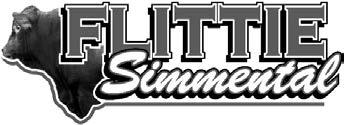
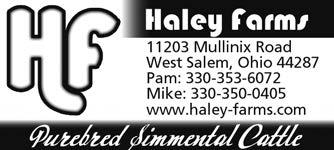
Jim: 605-730-6703 (Cell) Jay: 605-730-0215 (Cell) bendaranch@midstatesd.net


Black and Red Breeding Stock
Dawn – 605-680-4224
Kari – 605-680-4386


Home – 605-894-4464
Simmental Cattle – Club Calves
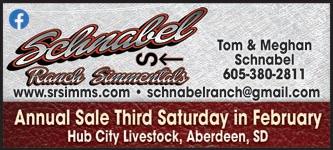



Christensen H Dunsmore
3C Christensen Ranch
John Christensen, Cam & Tyler Fagerhaug
37273 216th Street • Wessington, SD 57381
605-458-2218 home • 605-458-2231 fax

605-350-1278 cell




458-350-2018 Cam
Annual Production Sale
March 15, 2024 • Wessington, SD
NLC Simmental Ranch

Rick & Nalani L. Christensen
Dunsmore & NaLea, Chase & Swayzee 21830 372nd Ave • Wessington, SD 57381

605-458-2425 • 605-354-7523 cell
605-350-5216 cell
3 C
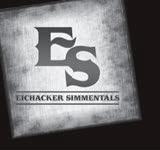


R&R Cattle
NLC

Oklahoma Willis Simmentals Willis Simmentals Bobby 580-276-2781 (ph. & fax) 10 miles east on Hwy. 32, 1/4 mile north on Enville Road. Jon 580-795-4601 5759 Enville Road Marietta OK 73448 willissimmentals@arbuckleonline.com Quality Simmental Breeding Cattle Gary and Cindy Updyke Checotah, OK • 918-473-6831 (H) • 918-843-3193 (C) garyupdyke38@gmail.com www.facebook.com/UpdykeSimmentals PO Box 127 Harrod, OH 45850 419-648-9196 (home) 419-648-9967 (office) 419-230-8675 (cell) Troy Jones & Randy Jones jonesshowcattle@hotmail.com • jonesshowcattle.com South
Clay Ekstrum 605-778-6185 (H) 605-730-1511 (C) John Ekstrum 605-778-6414 South Dakota’s Source for Outcross Performance Simmentals! – Specializing in Hard to Find Red Breeding Stock – 36220 257th St., Kimball, SD 57355 clayekstrum@midstatesd.net • ekstrumsimmentals.com Harley, Dawn and Kari Cable 2344 Rocky Road • Pukwana, SD hdcable@midstatesd.net Harley – 605-680-0845
Dakota
11913 342nd Ave • Hosmer, SD 57448 605-283-2662 • flittiesimm@valleytel.net Kerry, Justin, and Travis Hart 605-252-2065 (Kerry) 605-216-6469 (Justin) 605-252-0894 (Travis) 4hooves@nvc.net www.hartsimmentals.com 10904 387th Avenue Frederick, SD 57441 Steve & Cathy Eichacker 605-425-2391 or 605-421-1152 email: es@triotel.net 25446 445th Ave Salem, SD 57058 Annual Bull Sale • March 1, 2024 July/August 2023 / Register 49 Steve & Elaine Reimer & Family 25657 345th Avenue Chamberlain, SD 57325 Phone: 605-234-6111 Email: rrcattle@midstatesd.net
Company Dan Lehrman 605-530-5903 605-523-2551 (Res) • lehrmanvd@triotel.net 43058 245th Street • Spencer, SD 57374 TRAXINGER SIMMENTAL Mike and Terri Traxinger 11176 – 406th Avenue Houghton, SD 57449 Home: 605.885.6347 Mike’s cell: 605.294.7227 mtrax@nvc.net www.traxinger.com Reds, Blacks • Bulls and Females Private Treaty Sales Tennessee
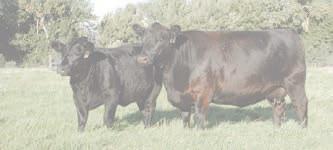


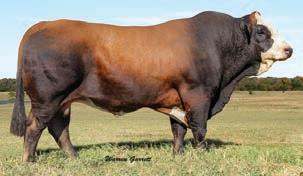

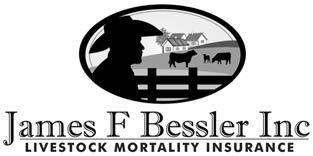
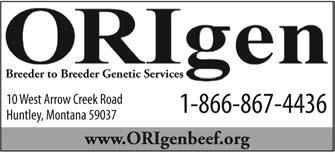

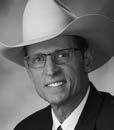



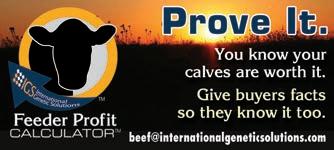
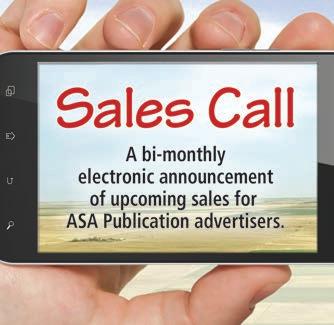
Washington Texas Mike & Paulette Forman 509-968-4800 Robb & Debbie Forman 509-201-0775 2451 Number 81 Rd. Ellensburg, WA 98926 www.trinityfarms.info • Email: trinity@fairpoint.net Angus SimAngusTM Simmental Trinity Farms Generations of Excellence Sale...first Saturday in March Jud and Margie Flowers 12111 N. Bryan Road • Mission, TX 78573-7432 956-207-2087 email: judf@lonestarcitrus.com “No Nonsense” Simbrah Cattle Joe & Beth Mercer 327 CR 459 Lott, TX 76656 Cell: 956-802-6995 Home, Office: 254-984-2225 bethmercer1974@gmail.com www.filegoniacattle.com Z Z FILEGONIA CATTLE COMPANY FILEGONIA CATTLE COMPANY Simbrah, SimAngusTM HT, SimAngusTM & Simmental Jane and Bill Travis billtravis@simbrah.com www.simbrah.com 9876 PLANO RD. DALLAS, TX 75238 Cell: 214-850-6308 Pine Ridge Ranch Pine Ridge Ranch Pine Ridge Ranch ATHENS, TX LLC 50 Register / July/August 2023 4812 McBreyer Pl Fort Worth, Texas 76244-6083 817-562-8980 Office • 817-562-8981 Fax 815-762-2641 Cell jim@jamesfbessler.com www.jamesfbessler.com Insurance Semen Available on Today’s Hottest AI Sires 573-641-5270 www.cattlevisions.com Genetics Livestock Services ROGER JACOBS Auctioneer P.O. Box 270 Shepherd, MT 59079 406-373-6124 Home 406-698-7686 Cell 406-373-7387 Fax auctions@jacobslivestock.com Auctioneers and Marketing MIKE WILLIAMS, Auctioneer 18130 Brush Creek Road Higginsville, MO 64037 PH: 660-584-5210 • Cell: 816-797-5450 Email: mwauctions@ctcis.net WILLIAMS WILLIAMS L L aanndd && C C aattttllee A A uuccttiioonn C C oo.. State Marketplace
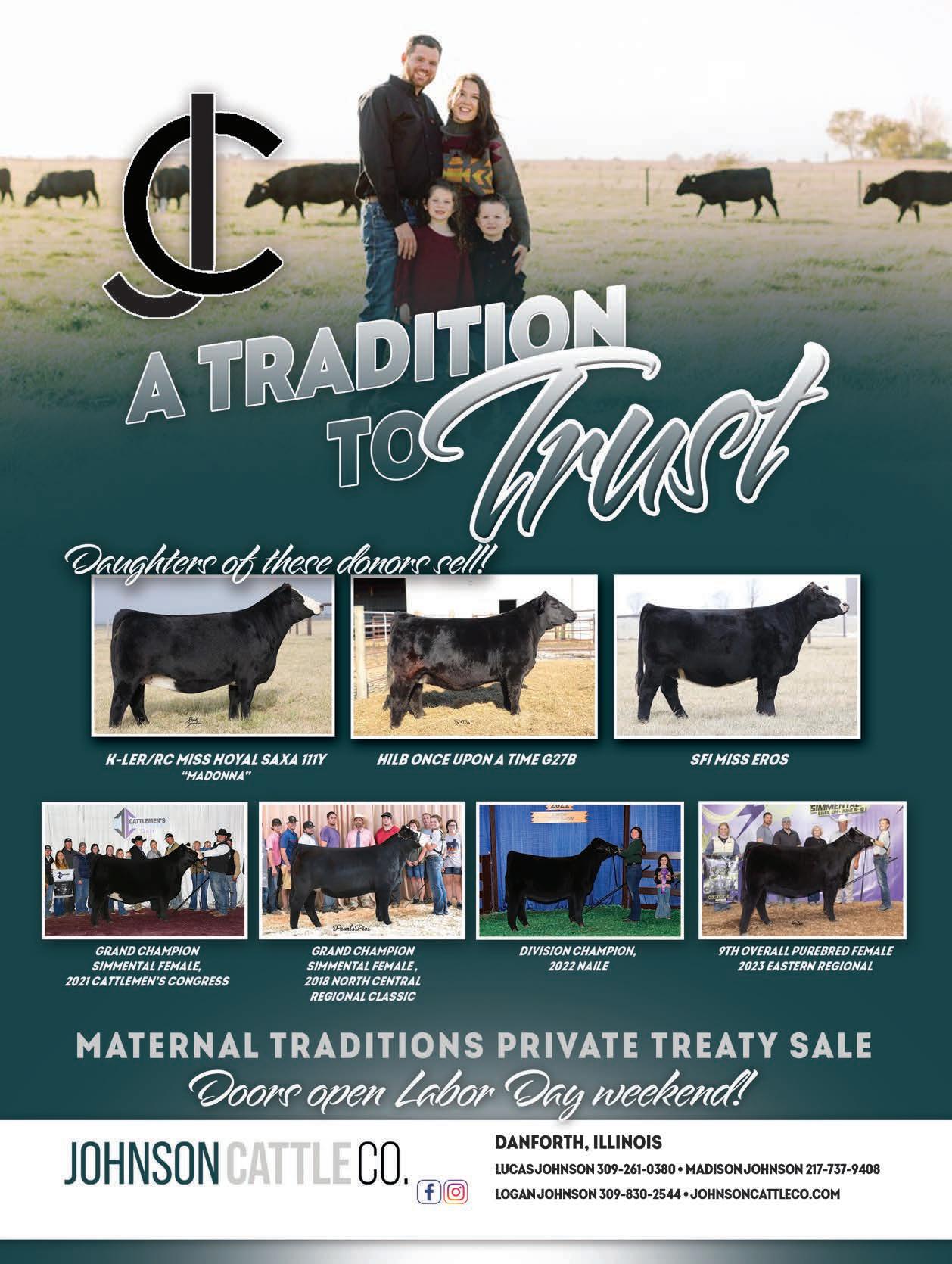
River Creek Farms’ 33rd Annual Bull Sale
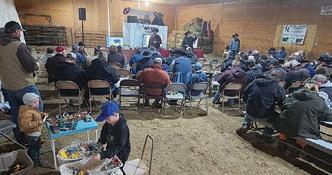
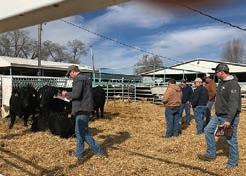
February 8, 2023 •
Auctioneer: Jered Shipman, TX
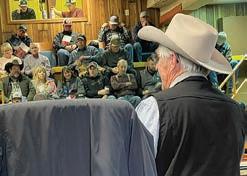
Sale Consultant: Jeremie Ruble, Ruble Cattle Services, IA
Representing ASA: Dr. Michael Dikeman
High-Selling SimInfluenced Lots:
$23,000 – 1/4 SimAngus, s. by SAV Rainfall, sold to Kenner Simmentals, Leeds, ND.
$19,500 – 1/2 SimAngus, s. by SAV Rainfall, sold to Billy Wolf, Whitesboro, TX.
$19,000 – 1/2 SimAngus, s. by RC XCeed, sold to Billy Wolf, Whitesboro, TX.
$18,000 – PB SM, s. by KBHR Revolution, sold to Shoal Creek Land and Cattle, Excelsior Springs, MO.
$18,000 – 1/2 SimAngus, s. by RC Xceed, sold to Billy Wolf, Whitesboro, TX.
$15,500 – 1/4 SimAngus, s. by SAV Rainfall, sold to Marty Neugebauer, Holly, CO.
$15,000 – 3/8 SimAngus, s. by Tehama Tahoe, sold to James Broussard, Beaumont, TX.
Volume Buyers: R&R Cattle and Equipment LLC, Lincoln; Billy Wolf, Whitesboro, TX; Adam Hahn, Randolph, WI; Rezac Land and Livestock, Onaga; Nicholas Blanchet, Harper; Alan Swaters, Clinton, MO; Andy Bloom, Wetmore; and Bryan and Enno Burhoop, Burdick.

Nelson
Livestock Company’s
Bulls for the Big Country Sale
February 13, 2023 • Wibaux, MT
No. Category Average
71 SM, SimAngus and Angus Yearling Bulls $4,454
Auctioneer: Ty Thompson, MT
Sale Manager: Allied Genetic Resources, Normal, IL
Marketing Representatives: John Goggins, Western Ag Reporter; Andy Rest, Cattle Business Weekly; and Brady Williams, Tri-State

Livestock News
Representing ASA: Andy Roberts
High-Selling SimInfluenced Lots:
$9,250 – Black 5/8 SM 3/8 AN, NLC 31K,” s. by TJ Stability 792H, sold to Gerald Goroski, Wibaux.
$7,500 – Black PB SM, “NLC 44K,” s. by LRS Falcon 442G, sold to Emmons Ranch, Olive.

$6,750 – Black 5/8 SM 3/8 AN, “NLC 20K,” s. by JC Mr Talon 403G, sold to Campbell Simmental, Ignacio, CO.
$6,750 – Black 3/8 SM 5/8 AN, “NLC 18K,” s. by NLC Cow Boss 160C, sold to Steve Hilliard, Glendive.
$6,500 – Black 1/2 SM 1/2 AN, “NLC 1K,” s. by CLRS Guardian 317G, sold to Justin Stedman, Beach, ND.
$6,500 – Black 1/2 SM 1/2 AN, “NLC 125K, s. by Open 8 Payweight 6107, sold to Rustad Brothers, Wibaux.
Sandy Acres Simmental’s Annual Bull Sale
February 17, 2023 • Creighton, NE
No. Category Average
40 Bulls
Auctioneer: Ty Thompson, CO
Representing ASA: Jack Whittier
$4,090
52 Register / July/August 2023
SALE RESULTS
KS No. Category Average 84 Age-Advantaged Fall Bulls $9,236 45 Yearling Bulls $7,850 129 Total Lots $8,752
Manhattan,
Michael Dikeman speaking to the crowd.
Kelly Kennedy, STgenetics® (left) and Payton Barrett, GENEX™.
Potential buyers looking at the sale offering.
Good-sized crowd on hand.
The auction block.
RS&T Simmentals Performance and Pounds Bull and Female Sale
April 15, 2023 • Maryville, MO
Auctioneer: Dustin Carter, SD
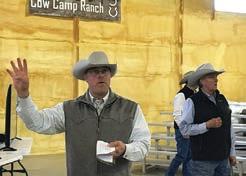

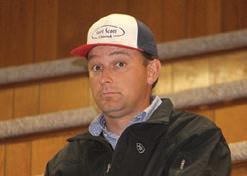

Sale Manager: Eberspacher Enterprises (EE) Inc., MN
Marketing Representatives: Val Eberspacher (EE); Austin Brandt, Midwest Marketer, IA; Buddy Robertson, OK; Austin Sorenson, Livestock Plus, IA; Cody Davis, KS; Jeremie Ruble, IA; and Amanda Hilbrands, LiveAuctions.TV, MN.

High-Selling Lots:
$5,750 – PB SM Bull, “RS&T Hot Sauce K200,” s. by KBHR Sriracha H127, sold to Sophie Doss, Baring.
$5,750 – 3/4 SM Bull, “LCDR Revolution 214H,” s. by EGL Firesteel 103F, sold to Hilltop Simmentals, Worthing, SD.
$5,500 – 3/4 SM Bull, “Beautiful Pinnacle J312,” s. by WS Mr Pinnacle G24, sold to Desi Meek, Decatur, AR.
$5,000 – 3/4 SM Cow/Calf Pair, “WTDS Ms Turnpike 01J,” s. by Rubys Turnkpike 956G, bred to TS&T Standout Gossip L01, Heifer Calf s. by Schooley Standout 27G, sold to Shoal Creek Land and Cattle LLC, Excelsior Springs.
$5,000 – 3/4 SM Female, “RS&T Epic Diva J001,” s. by OMF Epic E27 (AI Sire: CLRWTR Clear Advantage H4G) sold to McCracken Livestock, Kansas City, KS.
$5,000 – PB SM Bull, “RS&T Harts Advance K109,” s. by LCDR Progressive 106G, sold to Todd Stephens, Moran, KS.
$4,750 – -3/4 SM Bull, “RS&T WTDS PB&J Pike K20,” s. by Rubys Turnpike 956G, sold to Sophie Levett, Macon.
$4,750 – PB SM Bull, “RS&T Harts Forward K113,” s. by LCDR Progressive 106G, sold to Shaun Gebauer, Otis, CO.
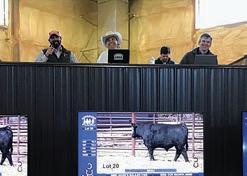
Cow Camp Ranch’s Spring Turn-Out Sale
April 21, 2023 • Lost Springs, KS
No. Category Average
71 Bulls $5,510
24 Females $3,595
95 Total Lots $5,026
Auctioneer: Charly Cummings, KS

Sale Manager: Allied Genetic Resources (AGR), IL
Sale Staff: Mary Ropp (AGR); Corey Wikins (AGR); Jared Murnin (AGR); Kade Hummel, Kansas Stockman; Bill Bowman, Missouri Beef Cattleman; and Chisholm Kinder, Special Assignment.
Representing ASA: Dr. Michael Dikeman
High-Sellling Lots:
$22,000 – “CCR Kansas 21K,” s. by LBRS Genesis G69, sold to Begger’s Diamond V Ranch, Wibaux, MT.
$11,750 – “CCR Hot Shot 9648J,” s. by GW Copperhead 919G, sold to Klahr Genetics, Topeka.
$10,500 – “CCR Kansas Gold 67K,” s. by TJ Gold 274G, sold to Parke Vehslage and Family Sons, Brownstown, IN.
$9,000 – “CCR 8079 Proclamation 6411J,” s. by WS Proclamation E202, sold to 7X Ranch, Lenepah, OK.
$8,500 – “CCR Night Shift 4069J,” s. by CCR Bonafide 5116F, sold to Schupback Farms LLC, Keytesville, MO.
$8,000 – “CCR 8636 Patriarch 3351J,” s. by Tehama Patriarch F028, sold to Whitestar Cattle Co., Overbrook.
$8,000 – “CCR Ms 7662 Firesteel 1234J,” s. by EGL Firesteel 103F, bred to IR/JLN Boomer J425, sold to Brad McConahay, Corydon, IA.
$7,100 – “CCR Ms Gold 1372J,” s. by TJ Gold 274G, bred to KBHR Honor H063, sold to Beech Mile Farm, Nashville, TN.
$6,000 – “CCR Ms Gold 1326J,” s. by TJ Gold 274G, bred to CCR Cochise 4142H, sold to Deryl Riley, Arapahoe, NE; and Shupback Farms LLC, Keytesville, MO.
Comments: Cattle sold into 13 states including AL, CO, IA, IN, KS, KY, MO, MT, ND, NE, OK, TN, and UT. (Continued on page
July/August 2023 / Register 53
No. Category Average 32 Bulls $4,000 18 SM and SimInfluenced Cow/Calf Pairs $3,272 8 Fall Bred Females $2,613 58 Total Lots $3,583
Bill Graebe, partner in RS&T Simmentals, welcomed the crowd.
Wendell Doss selected cattle to add to his operation for daughter Sophie.
Cody Davis was a consultant again this year for the sale.
Traveling down to MO from SD, Justin Hart, Hart Simmentals, attended the sale.
54)
Bradley Gibbs and his wife, Gibbs Farms, AL.
The auction block.
Ringmen working the sale.
(Continued from page 53)
Heartland Simmentals’ Performance with Class Sale
April 22, 2023 • Waverly, IA
Auctioneer: Phil Schooley, IA
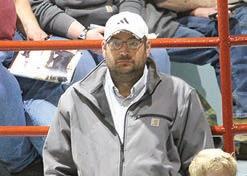
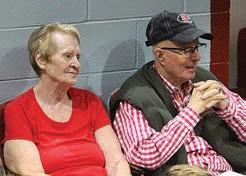
Sale Manager: Eberspacher Enterprises (EE) Inc., MN

Marketing Representatives: Val Eberspacher (EE); Austin Sorenson, Livestock Plus, IA; Austin Brandt, Lee AgriMedia, IA; Greg Miller, GEM Marketing, WI; Jeremie Ruble, Ruble Cattle Services, IA; Marshall Ruble, Ruble Cattle Services IA; Jared Ruter, Lee AgriMedia, IL; Chris Illg, MO; Duston Horton, Humeston Livestock Exchange, IA; Nick Echard, IA; and Mariah Miller, LiveAuctions.TV, IA.
Representing ASA: Dr. Bert Moore
High-Selling Lots:
$20,000 – PB SM Bull, “HL Guardian K65,” s. by CLRS Guardian 317G, sold to Echard Farms, Farmersburg; and John Schwartzhoff, Lansing.
$13,500 – PB SM Bull, “HL/EKRD Cool Dude 15K,” s. by W/C Executive Order 8543B, sold to Quandt Brothers, Oakes, ND.
$11,000 – PB SM Bull, “HL Integrate K22,” s. by HL Integrate OE188, sold to R&J Farms, Dorchester.
$9,000 – PB SM Bull, “HL Otis K62,” s. by OLF Otis Y43, sold to Susan Lewison, Adams, MN.
$8,500 – PB SM Bull, “CNS/HFS/BRAM Empire 392K,” s. by HPF Revival D081, sold to Mike Frieden, Joy, IL.
$8,000 – PB SM Bull, “HL Integrate J225Z,” s. by HL Integrate OE188, sold to Fogt Farms, Reinbeck.
$7,500 – PB SM Bull, “LLO Kung Fu,” s. by GIBBS 7382E Broad Range, sold to Tyler Frieden, New Boston, IL.
$7,500 – PB SM Bull, “HL Integrate J035,” s. by HL Integrate EO188, sold to Nelson Livestock, Wibaux, MT.
$7,500 – PB SM Bull, “LLO Kenny,” s. by HPF Optimizer A512, sold to Aaron Balderston, Central City.
$7,500 – PB SM Bull, “EKRD Mr Guardian K48,” s. by CLRS Guardian 317G, sold to Vopelak Farms Inc., Dysart.
$7,500 – 3/4 SM Bull, “HL Smooth Criminal K9,” s. by HL Smooth Criminal H90, sold to DeNio Cattle Company, Iowa Falls.
Comments: Guest consignors included DeNio Cattle, Echard Farms, Lazy H Simmentals, Lone Oak Beef, and Moss Farms.


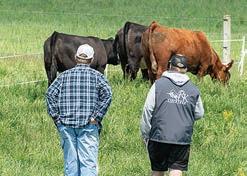
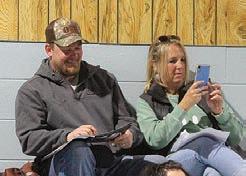
Stars and Stripes Sale
May 6, 2023 • Humelstown, PA
Auctioneer: Cody Lowerman, WV
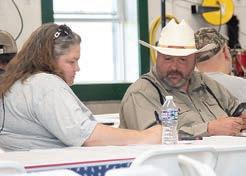
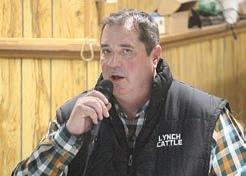
Sale Manager: Haefner Marketing Services, IL
Ringmen: Scott Willer and Charlie Strickler
High-Selling Lots:
$12,700 – Fall Bred Heifer, “SSC Shez Reddy,” cons. by Stewart’s Simmentals, sold to Wesley Metzker, PA.
$8,500 – Cow/Calf Pair, “HPF Knockout 378D,” cons. by Bramlet’s Simmentals, sold to K2J Cattle, VA.
$8,200 – Yearling Heifer, “EDEN`s Walk Beauty,” cons. by Stewart’s Simmentals, sold to McClure Land and Cattle, OK.
$6,500 – Cow/Calf Pair, “CLO How To Do It Rite,” cons. by CLO Simmentals, sold to Orchard Acres, WI.
$5,750 – Pregnancy out of “JPLF Miss Matlock,” cons. by ERV Cattle, sold to John McMillen, PA.
$5,700 – Pregnancy out of “HFSC Foxy Lady HF6,” cons. by Hillcrest Farm, sold to Trent Thewlis, OH.
$5,000 – Fall Open Heifer, “GRTF-PCSC Cayenne 28K,” cons. by Pine Creek Show Cattle, sold to Adam Goldzien, WV.
$5,000 – Yearling Heifer, “CVS Jewel K46,” cons. by Cassyle Valley Simmentlas, sold to Maple Creek Farm, VA.
$5,000 – Yearling Heifer, “C4S Power of Mary`s Gold,” cons. by Cedar Creek Cattle Co., sold to Mark Householder, OH.
Comments: Cattle sold into 15 states.
54 Register / July/August 2023
SALE RESULTS
No. Category Average 64 Bulls $5,660 69 Cow/Calf Pairs 3,916 7 Bred Females $3,235 140 Live Lots $4,670 1 Flush
$5,000
Lot
Kirk Lynch welcomes the overflowing crowd.
Founders of Heartland Simmental, Tom & Cora Lynch.
Randy and Michelle Thompson enjoyed the Heartland hospitality.
Wade Humphrey, Lazy H Simmentals, was a guest breeder.
No. Category Average 73 Total Lots
$3,189
Looking over the offering. Sale-day crowd.
Mr. and Mrs. Wesley Metker, Williamsburg. Sale day.
Trauernicht Simmentals’
Grass Time Turn Out Bull Sale
May 17, 2023 • Wymore, NE
No. Category Average
37 Bulls
Auctioneer: Tracy Harl, CO

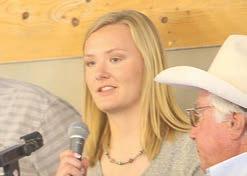
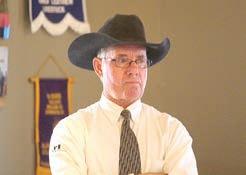

Sale Manager: Val Eberspacher (EE) Inc., MN
$3,301
Marketing Representatives: Val Eberspacher (EE); Randy Rasby, NE; Dennis Henrichs, NE; Chris Beutler, Livestock Digitial, NE; Sarah Kucera, DV Auction, NE.
High-Selling Lots:
$7,000 – PB SM Bull, “LHT Mr Remedy 53K,” s. by SO Remedy 7F, sold to Cleary Farms, Shullsburg, WI.
$6,250 – 1/2 SM Bull, “BUE Mr Iron Man,” s. by BUE Mr Loaded Profit, sold to Brian and Kandice Pehrson, Altonah, UT.
$6,100 – 1/2 SM Bull, “LHT Mr Complete 241K,” s. by KJL/CLZB Complete 7000E, sold to Brett Knutson, White, SD.
$5,100 – 1/2 SM Bull, “LHT Mr Chief 148K,” s. by TJ Chief 460G, sold to Prescott Ranch, Eckley, CO.
$4,750 – 1/4 SM Bull, “LHT Mr Red 247K,” s. by BC1 Mr H060, sold to Hahn Farms, Dewitt.
$4,750 – 3/8 SM Bull, “LHT Mr Atomic 143K,” s. by Bieber CL Atomic C218, sold to Kevin Coudeyras, Burchard.
$4,500 – 3/4 SM Bull, “LHT Mr Turnpike 74K,” s. by Rubys Turnpike 771E, sold to Keith Schumacher, Petersburg.
$4,000 – 3/4 SM Bull, “LHT Mr Essential 167K,” s. by GIBBS 9114G
Essential, sold to Ron Claussen, Bettendorf, IA.
Comments: Mark your calendars for the LHT Nebraska Platinum Standard Female Sale, Sunday, December 10, 2023.
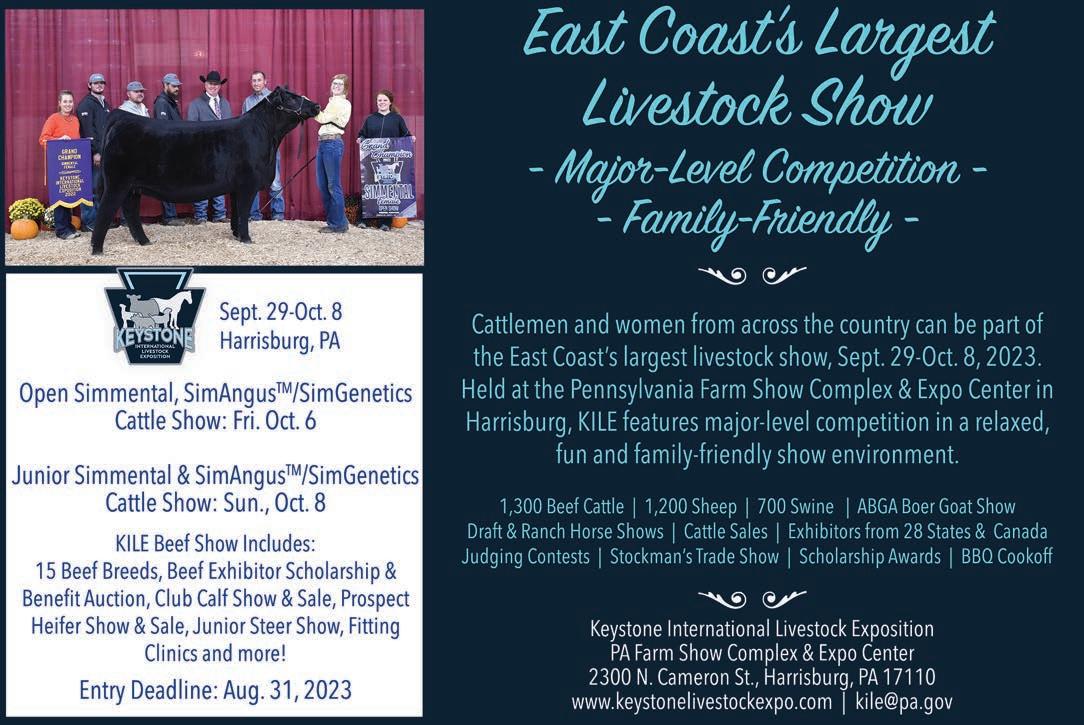
July/August 2023 / Register 55
Auctioneer Tracy Harl and sale manager Val Eberspacher visit prior to the sale.
Randy Rasby, longtime ringman for the LHT sales.
Lauren Hope Trauernicht welcomed the bull buying crowd.
Dennis Henrichs, Beatrice 77 Livestock Market, and Chris Beutler, Livestock Digital, assisted with ring duties. n
SHOW CIRCUIT
Colorado Breed Bash
Date: June 4, 2023
Location: Brush, CO
Judge: Garrett Barton, Cheyenne, WY
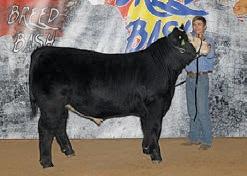
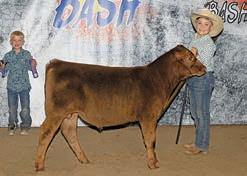
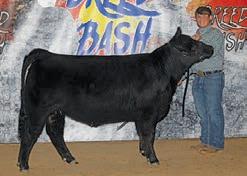
Simmental Supreme Female and Grand Champion
Simmental Heifer
“FABZ Kesha 101K,” s. by JSUL Something About Mary 8421, exh. by Blake Fabrizius, Carr.
Simmental Reserve Supreme Female
“KLER Ms 2059K,”
s. by W/C Bank On It 273H, exh. by Payton Voloshin, Craig.
Grand Champion
Simmental Cow/Calf Pair
“KLER/HLL Rain Marie J33,” Calf, “HLL/KLER Leroy 301L,” both s. by Profit, exh. by Easton Hill, Nunn.
NEW MEMBERS
ARKANSAS
Marley Anderson
50 Brushy Rd
Batesville, AR 72501
COLORADO
Bryan David Clark
6659 CR 301
Parachute, CO 81635
FLORIDA
Felipe Soto Jr
4275 NW 16th Ave
Okeechobee, FL 34972
GEORGIA
3C Simmentals
2220 Charles Rd
Axson, GA 31624
ILLINOIS
Naughton Brothers
1327 N 2053 Rd
Grand Ridge, IL 61325


David Steck
505 Bandy Ave
Galesburg, IL 61401
Vinnare Farms
227 E 1500 North Rd Cisco, IL 61830
INDIANA
Aaron Willison 5123 S 400 E Walton, IN 46994
Kallie Knott 0373 CR 60 LaOtto, IN 46763
IOWA
James Schooley 13942 Yam Blvd Selma, IA 52588
KANSAS
Austin Stone 23068 Garrett Rd
Tonganoxie, KS 66086
MARYLAND
Ethan Whiteside PO Box 303 Queenstown, MD 21658
Grand Champion Percentage Simmental Heifer
“JPV Miss Hallie 4K ET,” s. by W/C VIP 005G, exh. by Jason Dias, Fort Morgan.
Grand Champion Simmental Bull
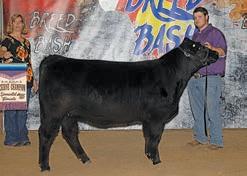
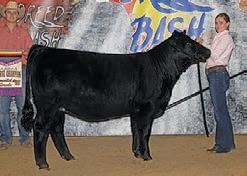
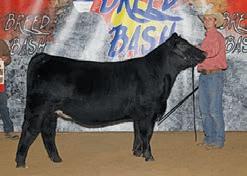
“HLL/KLER Leroy 301L,”
s. by THSF Lover Boy B33, exh. by Easton Hill, Nunn.
Reserve Grand Champion Percentage Simmental Heifer
“K3 Katelyn F51,” s. by LCDR Progressive 106G, exh. by Brandyn Hill, Sterling.
Grand Champion Percentage Simmental Steer
“Otis of Fully Penelope,” s. by DMCC/WOOD Fully Loaded 39D, exh. by Aden Young, Sterling. n
MINNESOTA
Syring Show Cattle 2476 500th St
Granite Falls, MN 56241
MISSOURI
Opie Farms 213 Highway FF Olean, MO 65064
MISSISSIPPI
Breathe Easy Farms 726 Hillsboro Ludlow Road Forest, MS 39074
NEBRASKA
Circle L Cattle 1219 Rd AA Blue Hill, NE 68930
OHIO
Christina E Winter 5839 Ashsville Fairfield Rd
Ashville, OH 43103
Kyle Schmerge 11700 SR 219 Wapakoneta, OH 45895
PENNSYLVANIA
Emilie Campbell 4607 West Whitehall Rd Pennsylvania Furnace, PA 16865
TEXAS
Hurst Cattle Company PO Box 241 Friona, TX 79035
Meier Farm PO Box 213 Hye, TX 78635
4S Simbrah 2103 Tigerpoint Road
Brenham, TX 77833
Don Sansom 2103 Tigerpoint Road
Brenham, TX 77833
Regan Merryfield 5998 CR 143
Leona, TX 75850
WISCONSIN
Ervin Dirks 1177 Hwy 8 Barron, WI 54812 n
56 Register / July/August 2023
DNA Services (Contact ASA For Testing Kits)

(Must run with GGP-100K)
Arthogryposis Multiplex (AM)
Neuropathic Hydrocephalus (NH)
Developmental Duplication (DD)
Tibial Hemimelia (TH)
Pulmonary Hypoplasia with Anasarca (PHA)
Osteopetrosis (OS)
Contractural Arachnodactyly (CA)
(Individual defect tests can be ordered for $25.)
**Research Fee charged at $1.00/min – Includes but is not limited to: DNA re-checks to more than 2 additional parents, multi-sire pastures, excess time spent to confirm parentage, mis-identified samples, and samples arriving at lab without proper ASA paperwork.
***Prices are subject to change
Spring 2023 THE Enrollment — (dams calve January 1–June 30) —
Early enrollment open October 15 through December 15, 2023.
Late enrollment available until February 15, 2024.
Fall 2023 THE Enrollment — (dams calve July 1–December 31) —
Early enrollment open April 15 through June 15, 2023
Late enrollment available until August 15, 2023.
A re-enrollment fee of $35.00 applies to any dam that is removed from inventory and re-enters the herd at a later date.
A member who has dropped out of THE and wishes to return, may do so for the next enrollment season. Re-enrollment fee is $35 per animal (maximum of $350) plus enrollment fees. Non-THE registration fees will apply to the calendar year when a member did not participate in THE.
July/August 2023 / Register 57 ASA FEE SCHEDULE First Time Membership Fee: Adult First Time Membership Fee*. . . . . . . . . . . . . . $160 (Includes: $50 set-up fee and $110 ASF) Junior First Time Membership Fee*. . . . . . . . . . . . . . $40 Prefix Registration. . . . . . . . . . . . . . . . . . . . . . . . . . . . $10 *After January 1: $105 for Adults and $40 for Juniors Annual Service Fee (ASF)*: Adult Membership. . . . . . . . . . . . . . . . . . . . . . . . . . . $110 Junior Membership. . . . . . . . . . . . . . . . . . . . . . . . . . . $40 Fiscal year runs from July 1 – June 30 Registration Fees: Registration Fees enrolled in THE Enrolled in Option A . . . . . . . . . . . . . . . . . . . . No Charge Enrolled in Opt B or C <10 months. . . . . . . . . . . . . . $30 Enrolled in Opt B or C 10 months <15 months. . . $40 Enrolled in Opt B or C 15 months. . . . . . . . . . . . . . $50 THE Enrollment American Simmental Association Fees Transfer Fees: First Transfer . . . . . . . . . . . . . . . . . . . . . . . . . . No Charge Subsequent Transfers Within 60 calendar days of sale. . . . . . . . . . . . . . . . $10 Over 60 calendar days after sale. . . . . . . . . . . . . . . $30 Additional Transactions: Priority Processing (not including shipping or mailing) . . . . . . . . . . . . . . . . . . . $50 Corrections. . . . . . . . . . . . . . . . . . . . . . . . . . . . . . . . . . . $5 Registration Foreign/Foundation Fees: Register Foundation Cow . . . . . . . . . . . . . . . . . . . . . . . $5 Register Foundation Bull . . . . . . . . . . . . . . . . . . . . . . $25 Registration Fees not enrolled in THE: Non-THE <10 months . . . . . . . . . . . . . . . . . . . . . . . . $42 Non-THE 10 months <15 months . . . . . . . . . . . . . . $52 Non-THE 15 months . . . . . . . . . . . . . . . . . . . . . . . . . $62 Option A (TR) Option B (SR) Option C Option D (CM) Early Enrollment $15.00 FREE $7.50 $500/herd *Late Enrollment $16.00 $1.00 $8.50 $500/herd *Late enrollment fees DNA Collector Fees: Allflex TSU - $20.00 (box of 10) • Allflex Applicator - $40.00 • Blood Cards - $1.00 ea. (processing fee) Hair Cards - $5.00 ea. (processing fee) • Sample Pull Fee – $2.00 ea.
Genomic Tests: *GGP-100K . . . . . . . . . . . . . . . . . . . . . . . . . . . . . . . . . . . $50 GGP-uLD . . . . . . . . . . . . . . . . . . . . . . . . . . . . . . . . . . . . . $33 *Add-on tests available Stand Alone Add-on SNP Parental Verification . . . . . . . . . . . . . . . $18 Free STR Parental Verification. . . . . . . . . . . . . . . . $33 $15 Coat Color. . . . . . . . . . . . . . . . . . . . . . . . . . . $22 $9 Red Charlie. . . . . . . . . . . . . . . . . . . . . . . . . . . $26 $16 Horned/Polled. . . . . . . . . . . . . . . . . . . . . . . . $33 $22 PMel (Diluter). . . . . . . . . . . . . . . . . . . . . . . . $22 $2 Oculocutaneous Hypopigmentation (OH). . $25 $16 BVD PI. . . . . . . . . . . . . . . . . . . . . . . . . . . . . . . . $5 Semen Sample Processing Fee. . . . . . . . . $7.20 Genetic Conditions Panel. . . . . . . . . . . . . . . . $25
SEPTEMBER


1–4
OCTOBER
NOVEMBER
58 Register / July/August 2023
Johnson Cattle Company’s “Maternal Traditions” Private Treaty Sale — Danforth, IL (pg. 51)
Four Starr Genetics and Friends 5th Annual Fleckvieh Production Sale — Eugene, MO (pg. 5)
North Carolina Fall Harvest Sale — Union Grove, NC 9 Kentucky Simmental Fall Sale — Lexington, KY 23 Logland Farms’ “Fleckvieh Heritage Sale” — Roland, OK (pg. 63) 17 Illini Elite Sale — Shelbyville, IL 23–24 Simbrah Synergy XVI — Giddings, TX 26–27 Fall Fiesta Online Simmental Sale — www.dponlinesales.com 28 Circle Ranch Beef Solutions Bull Sale — Ione, CA 30 Seedstock Connection Sale — Lyles, TN
2
2
Mississippi State Elite Heifer and Bull Sale — Jackson, MS
Factory Direct Sale — West Lafayette, IN 8 Our Vision, Your Future Sale — Chalmers, IN 9 Burlap and Barbed Wire Female Sale, Vol. VII — Clay Center, KS 14 C&C Farms Clear Visions Sale — Winder, GA 14 Fred Smith Company’s Extra Effort Sale — Clayton, NC 14 Trinity Farms’ Fall Female Sale — Ellensburg, WA 15 Houck Rock Creek Ranch’s Private Treaty Sale — Allen, KS 21 The Black Label — Grandview, TX 21 Ferguson Show Cattle’s Annual Rare Vintage Production Sale — Jefferson, OH 21 Little Creek Cattle’s Magnolia Classic — Starkville, MS (pg. 3) 21 New Direction Sale — Seward, NE (pg. 47) 27 29th Annual Hokie Harvest Sale — Blacksburg, VA 27 Yon Family Farms’ Fall Female Sale — Ridge Spring, SC 28 7P Ranch’s 48th Annual Production Sale — Winona, TX 28 Clear Choice Female Sale — Milan, IN (pg. 46) 28 Pennsylvania Simmental’s Fall Classic Sale — Waynesburg, PA 28 Red Hill Farms’ Bulls and Females of Fall Sale IX — Lafayette, TN 28 Yon Family Farms’ Fall Bull Sale — Ridge Spring, SC
6
7
4 27th Annual Southern Showcase — Rome, GA 4 Cason’s Pride & Joy Simmentals’ Maternally Inspired Female Sale — Russell, IA 4 Irvine Ranch’s 19th Annual Production Sale — Manhattan, KS 4 Missouri Simmental Fall Harvest Sale — Springfield, MO 5 Triangle J Ranch’s Female Sale — Miller, NE (pg. 47) 11 Gibbs Farms’ 18th Annual Bull and Replacement Female Sale — Ranburne, AL 18 Callaway Cattle Company’s AffordaBULL Sale — Hogansville, GA 18 Stanley Martins Farms’ Fleckvieh Female Sale — Decorah, IA (pg. 6) 18 Yardley Cattle Company’s Focus on the Female Sale — Beaver, UT 20 Bichler Simmentals’ Production Sale — Linton, ND 25 Stavick Simmental’s Queen of the Prairie Female Sale — Veblen, SD 25 Trennepohl Farms’ Right By Design Sale — Middletown, IN
Jewels of the Northland — Clara City, MN 2 T-Heart Ranch and L-Cross Ranch High Altitude Female Sale — La Garita, CO 2 Western Choice Simmental Sale — Billings, MT 9 NDSA Classic Sale — Mandan, ND 9 North Alabama Bull Evaluation Sale — Cullman, AL 10 Trauernicht Simmentals’ LHT Female Sale — Wymore, NE 15 Buck Creek Ranch’s Grand Event — Yale, OK 16 South Dakota Source Sale — Mitchell, SD 22 Bata Brothers Complete Herd Dispersal (Online) — Adams, ND 28 St. Nick’s Eggstravaganza Online Sale — www.dponlinesales.com
DECEMBER 2
DATE BOOK
JANUARY 2024
12 Diamond Bar S Bull Sale — Great Falls, MT (pg. 47)
20 Cow Camp Ranch’s Annual Spring Sale — Lost Springs, KS (pg. 46)
26 Double J Farms’ 50th Annual Bull and Female Sale — Garretson, SD (pg. 49)
26 Ellingson Simmentals’ Annual Production Sale — Dahlen, ND (pg. 48)
27 J&C Simmentals’ Annual Bull Sale — Arlington, NE (pg. 47)
28 Triangle J Ranch’s Bull Sale — Miller, NE (pg. 47)
FEBRUARY 2024
1 Stavick Simmental’s Annual Sale — Veblen, ND (pg. 49)
2 Kunkel Simmentals’ Annual Production Sale — New Salem, ND
3 Klain Simmental Ranch’s 42nd Annual Production Sale — Ruso, ND
3 Springer Simmentals Sale of Value-Based Genetics — Decorah, IA
3 Prickly Pear Simmental Ranch’s Bull Sale — Helena, MT (pg. 47)
5 44th Annual Gateway “Breeding Value” Bull Sale — Glendive, MT
7 Begger’s Diamond V Big Sky Genetic Source Bull Sale — Wibaux, MT (pg. 47)
8 Houck Rock Creek Ranch’s Private Treaty Spring Bull Sale — Allen, KS
8 Lassle Ranch Simmentals 31st Annual Production Sale — Glendive, MT
9 Bata Brothers/Bell Family Annual Joint Simmental Bull and Female Sale — Rugby, ND (pg. 48)
9 Bred For Balance Sale — Starbuck, MN
9 TNT Simmental’s 39th Annual “Carrying On” the Explosive Difference Sale — Lehr, ND (pg. 48)
10 CK and Wager Cattle’s 7th Annual Production Sale — Highmore, SD
10 Dixie National Simmental Sale — Jackson, MS
10 Kenner Simmentals’ 28th Annual Production Sale — Leeds, ND
10 Rydeen Farms’ 26th Annual “Vision” Sale — Clearbrook, MN
12 Dakota Power Bull and Female Sale — Hannaford, ND

12 Nelson Livestock Company Production Sale — Wibaux, MT
13 Edge of the West Bull and Female Sale — Mandan, ND (pg. 48)
14 Jackpot Cattle Company’s Private Treaty Bull and Heifer Sale — Miller, SD
14 River Creek Farms’ 34th Annual Production Sale — Manhattan, KS (pg. 46)
14 Traxinger Simmental’s Annual Bull Sale — Houghton, SD
16 Dakota Xpress’ Annual Bull and Female Sale — Mandan, ND (pg. 48)
16 R&R Cattle Company’s Annual Production Sale — Chamberlain, SD
16 Sandy Acres Simmental’s Bull Sale — Creighton, NE (pg. 47)
17 7P Ranch’s 30th Annual Spring Bull and Female Sale — Winona, TX
17 Flittie Simmental/Schnabel Ranch Simmentals/ Lazy J Bar Ranch’s Joint Production Sale — Aberdeen, SD (pg. 49)
17 K-LER Cattle’s Annual Production Sale — St. Charles, MN (pg. 47)
17 Rhodes Angus Open House and Bid Off Bull and Female Sale — Carlinville, IL
17 Yon Family Farms’ Spring Bull and Female Sale — Ridge Spring, SC
18 Trauernicht Simmentals’ LHT Bull Sale — Wymore, NE n
July/August 2023 / Register 59
RATES & POLICIES
Serving as American Simmental Association’s (ASA) official publication, the Register is mailed nine times annually, has a circulation of 5,500+, and is focused primarily on ASA’s paid membership.
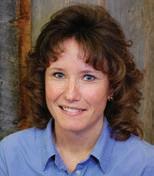

the Register is an 81/8 x 107/8 inch glossy, full-color publication that provides a direct and consistent line of communication to the ASA membership.
Ad Sales Staff
For All Your Advertising Needs
Space and four-color rates for the Register:
•
Subscriptions
•
•
the Register Deadlines for Publication:
A non-refundable fee of $50.00 will be assessed if a client does not meet deadlines or if the client commits to advertising and cancels after the deadline or if the ad must be dropped to ensure on time publication.
Advertising materials (including photos) must be in the Register office by the dates listed above. the Register, which mails by periodicals rate, assumes no responsibility for actual receipt date.
Design Charges
Advertising rates are for camera-ready ads only. Additional design charges will apply to any ad that is designed by ASA Publication, Inc.
Layouts & Proofs
Every effort will be made to provide proofs on all ads — if all ad material arrive in the Register office prior to the deadline and a correct email address or fax number is provided.
Advertising Content
the Register and its staff assume no responsibility or obligation to verify the accuracy and truthfulness of advertising copy submitted to the Register. However, the Register reserves the right to reject any advertising copy or photo which the Register deems unsuitable for publication for any reason, including copy

or photographs which are false or misleading. the Register assumes no responsibility for the accuracy and truthfulness of submitted print ready ads. Advertisers shall indemnify and hold harmless the Register for any claims concerning advertising content as submitted. Advertising containing pedigrees or statements regarding performance must conform to records kept by the American Simmental Association. Copy deviating from official records may be changed as necessary without advertiser consent.
Editorial Policy
Opinions expressed are the writers’ and not necessarily those of the Register. Photographs are welcome, but no responsibility is assumed for material while in transit or while in the office.
Terms
All accounts are due and payable when invoiced. Interest charges of 1.5 percent per month (18 percent APR) will be added to accounts 30 days past due. If an account becomes 60 days delinquent, all ASA Publication, Inc. work may be suspended until full payment is made. After review by the ASA Executive Committee, ASA privileges may be denied to those with accounts over 90 days delinquent.
60 Register / July/August 2023
Nancy Chesterfield 406-587-2778 nchesterfield@simmgene.com Send all ad materials to: register@simmgene.com or Fax: 406-587-8853 Rebecca Price 406-587-2778 rprice@simmgene.com Space Rates Non-Contract 5X Contract 9X Contract Four Color 1 page $770 $730 $700 $300 2/3 page $660 $630 $600 $200 1/2 page $440 $420 $400 $150 1/3 page $330 $315 $300 $100 1/4 page $220 $210 $200 $75 1/8 page $150 $50 3-inch mini $100 $30 2-inch mini $85 $15 2-inch card $700/year, 9 insertion $135 1-inch card $390/year, 9 insertions $90 Classified Ads $.60/word, $12.00 minimum, must be prepaid
One Genetics Way Bozeman, Montana 59718 USA 406-587-2778 • Fax 406-587-8853 register@simmgene.com
Domestic
$50/year
First Class $100/year
All International
(US) ASA Publication, Inc
$150/year
Issue Sales Close Ad Materials Camera Ready Mail Date September ’23 August 1 August 8 August 18 Sept 5 October ’23 Sept 1 Sept 8 Sept 18 Oct 3 November ’23 Oct 3 Oct 6 Oct 19 Nov 2 Dec ’23/Jan ’24 Nov 15 Nov 17 Dec 5 Dec 19 February ’24 Dec 29 Jan 4 Jan 17 Feb 1 March ’24 Feb 1 Feb 7 Feb 16 March 5 April ’24 Feb 29 March 5 March 19 April 2 May/June ’24 April 4 April 9 April 19 May 7
There Are No Magic Beans

Keeping your family on the ranch takes more effort than ever.
Whether you are a serious seedstock producer (regardless of breed type) or a progressive, data-conscious commercial outfit - now is your time to receive the most credible genetic tools in the business, at the best prices, and no drama. Your kids and grandkids need the best tools available. It is time to make the tough decisions.
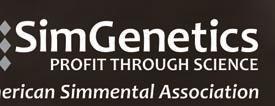

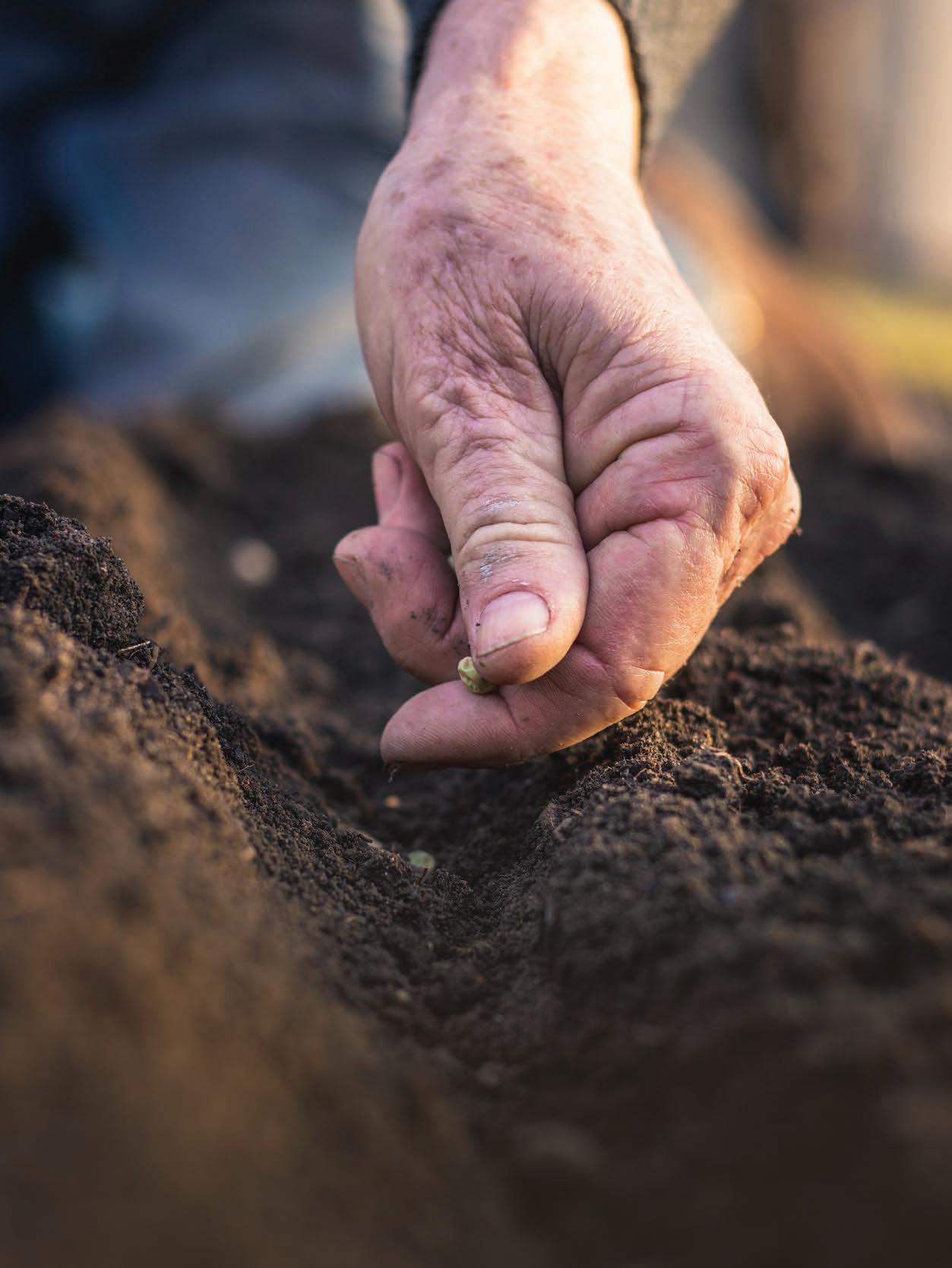
the@simmgene.com



62 Register / July/August 2023 3C Christensen Ranch. . . . . . . . . . . . . 49 701x® . . . . . . . . . . . . . . . . . . . . . . . . . . . 1 701x® Autonomous Rancher. . . . . . . . 1 ABS Global, Inc.. . . . . . . . . . . . . . . . . . 49 Ag Risk Advisors. . . . . . . . . . . . . . . Insert All Purpose Index ($API). . . . . . . . . . . . 7 Altenburg Super Baldy Ranch. . . . Insert America’s Cow More Means More. . . . 7 American Junior Simmental Association (AJSA). . . . . . . . . . . . . 14 American Live Stock Inc.. . . . . . . . . . . 50 American Simmental Association. . . . . . IFC, 4, 7, 9, 13, 14, 21, 22, 23, 29, 33, 61, Insert American Simmental-Simbrah Foundation. . . . . . . . . . . 29, 37, Insert ASA Performance Advocate. . . . . . . . 47 ASA Publication, Inc.. . . . . . . . . . . . . . 39 Bata Bros.. . . . . . . . . . . . . . . . . . . . . . . 48 Baty Livestock. . . . . . . . . . . . . . . . . Insert Begger’s Diamond V. . . . . . . . . . . . . . 47 Benda Simmentals, Jim. . . . . . . . . . . . 49 Bessler Inc, James F. . . . . . . . . . . . . . . 50 Bridle Bit Simmentals. . . . . . . . 46, Insert Brink Fleckvieh. . . . . . . . . . . . . . . . . . . 48 Brush Country Bulls. . . . . . . . . . . . . . . 50 Bulls of the Big Sky. . . . . . . . . . . . . . . 47 C Diamond Simmentals. . . . . . . . . . . 48 Cable Ranch. . . . . . . . . . . . . . . . . . . . . 49 Calf Crop Genomics (CCG). . . . . . 13, 31 California Breeders. . . . . . . . . . . . . . . 46 Carcass Expansion Project (CXP). . . . 31 Carcass Merit Program (CMP). . . . . . . . . . . . . . . 9, 46, 47, 49 Cash Cow Fundraiser. . . . . . . . . . . . . 37 Cason’s Pride & Joy Simmentals. . . . . 46 Cattle Max Software. . . . . . . . . . . . . . IFC Cattle Visions. . . . . . . . . . . . . 50, 64, IBC CattleScales.com. . . . . . . . . . . . . . . . . . 2 CCRS Fleckvieh. . . . . . . . . . . . . . . . . . . . 5 Check Us Out Online. . . . . . . . . . . . . . . 4 Clarity is Cash. . . . . . . . . . . . . . . . 22, 23 ClearWater Simmentals. . . . . . . . . . . 46 Colorado Cattlemen’s Association. . . . . . . . . . . . . . . . . Insert Colorado Simmental Association. . . . . . . . . . . . . . . . . Insert Colorado Simmental Breeders. . . . . . 46 Corley, Bob and Nikki. . . . . . . . . . . . . 63 Cow Camp Ranch. . . . . . . . . . . . . . . . 46 Cow Herd DNA Roundup (CHR). . . . . 31 Dakota Xpress. . . . . . . . . . . . . . . . . . . 48 Diamond Bar S. . . . . . . . . . . . . . . . . . . 47 Diamond H Ranch. . . . . . . . . . . . . . . . 46 ADVERTISER INDEX Dickinson Simmental and Angus Ranch. . . . . . . . . . . . . . 46 Dixson Farms, Inc.. . . . . . . . . . . . . . . . 46 Double Bar D. . . . . . . . . . . . . . . . . . . . 63 Double J Farms. . . . . . . . . . . . . . . . . . 49 DVAuction. . . . . . . . . . . . . . . . . . . . . . . 3 DVAuction.com. . . . . . . . . . . . . . . . . . . 5 Eichacker Simmentals. . . . . . . . . . . . . 49 Ekstrum Simmentals. . . . . . . . . . . . . . 49 Elanco. . . . . . . . . . . . . . . . . . . . . . . Insert Ellingson Simmentals. . . . . . . . . . . . . 48 Ewing Family Catte. . . . . . . . . . . . . . . . 5 Fall Focus. . . . . . . . . . . . . . 29, 37, Insert Faulkner Fleckvieh. . . . . . . . . . . . . . . . 63 Feeder Profit Calculator™ (FPC). . . 48, 50 Ferguson Show Cattle. . . . . . . . . . . . . 48 Filegonia Cattle Company. . . . . . . . . . 50 Fleckvieh Heritage Sale. . . . . . . . . . . . 63 Flittie Simmental. . . . . . . . . . . . . . . . . 49 Forster Farms. . . . . . . . . . . . . . . . . . . . 47 Four Starr Genetics. . . . . . . . . . . . . . . . 5 Gateway Simmental. . . . . . . . . . . . Insert Gibbs Farms. . . . . . . . . . . . . . . . . . Insert Haley Farms. . . . . . . . . . . . . . . . . . . . . 49 Harker Simmentals. . . . . . . . . . . . . . . 46 Harl, Tracy Auction Company. . . . . . . 50 Hart Simmentals. . . . . . . . . . . . . . . . . 49 Heishman Cattle Company. . . . . . Insert Hofmann Simmental Farms. . . . . . . . 46 IGS Multi-breed Genetic Evaluation. . . 30 Illinois Simmental Breeders. . . . . . . . 46 Indiana Simmental Breeders. . . . . . . 46 Innovation AgMarketing, LLC. . . . . . . BC Iowa Simmental Breeders. . . . . . . . . . 46 J & C Simmentals. . . . . . . . . . . . . . . . . 47 Jacobs, Roger, Auctioneer. . . . . . . . . . 50 James Creek Simmentals. . . . . . . . . . 63 Jensen Simmentals. . . . . . . . . . . . 46, 48 Johnson Cattle Co.. . . . . . . . . . . . . . . . 51 Jones Show Cattle. . . . . . . . . . . . . . . . 49 K-LER Cattle. . . . . . . . . . . . . . . . . . . . . 47 Kaelberer Simmentals. . . . . . . . . . . . . 48 Kansas Simmental Breeders. . . . . . . . 46 Keller Broken Heart Ranch. . . . . . . . . 48 Kenner Simmentals. . . . . . . . . . . . . . . 48 Keystone International Livestock Exposition. . . . . . . . . . . . 55 Kulp Genetics. . . . . . . . . . . . . . . . . . . . 48 Lassle Ranch Simmentals. . . . . . . . . . 47 Lehrman Family Simmentals. . . . . . . 49 Little Bitterroot River Ranch. . . . . . Insert Little Bitterroot River Simmentals. . . . 47 Little Creek Cattle. . . . . . . . . . . . . . 3, 48 Livestock Services. . . . . . . . . . . . . . . . 50 Logland Farms. . . . . . . . . . . . . . . . . . . 63 Loomis Simmental. . . . . . . . . . . . . . . . 46 Lucas Cattle Company. . . . . . . . . . 47, 58 Magnolia Classic. . . . . . . . . . . . . . . . . . 3 Mark Barnell Land and Cattle Company. . . . . . . . . Insert Martin Farms. . . . . . . . . . . . . . . . . . . . 49 McDonald Farms. . . . . . . . . . . . . . Insert Merck. . . . . . . . . . . . . . . . . . . . . . . Insert Miller Simmentals. . . . . . . . . . . . . . . . 47 Minnesota Simmental Breeders. . . . . 47 Missing Rail Simmentals. . . . . . . . . . . 49 Missouri Simmental Breeders. . . . . . . 47 Montana Simmental Breeders. . . . . . 47 Monte Christo Ranch & Investments. . . . . . . . . . . 50 Morrison, Myra Neal. . . . . . . . . . . . . . 48 Multimin. . . . . . . . . . . . . . . . . . . . . Insert National Corn Growers Association. . . . . . . . . . . . . . . . . Insert NCBA. . . . . . . . . . . . . . . . . . . . . . . . Insert Nebraska Simmental Breeders. . . 47, 48 NLC Simmental Ranch. . . . . . . . . . . . 49 North American Fullblood Breeders. . . . . . . . . . . . . 48 North Carolina Simmental Breeders. . . . . . . . . . . . 48 North Dakota Simmental Breeders. . . . . . . . . 48,49 Oak Meadow Farms. . . . . . . . . . . . . . 47 Ohio Simmental Breeders. . . . . . . 48, 49 Oklahoma Simmental Breeders. . . . . 49 One Penny Ranch. . . . . . . . . . . . . . Insert ORIgen. . . . . . . . . . . . . . . . . . . . . . . . . 50 Pine Ridge Ranch, LLC. . . . . . . . . . . . . 50 Powerline Genetics. . . . . . . . . . . . . . . 47 Powerline Genetics. . . . . . . . . . . . . . . 59 Prickly Pear Simmental Ranch. . . . . . 47 Promise Land Ranch. . . . . . . . . . . Insert Quandt Brothers (QBVJT). . . . . . . . . . 48 R&R Cattle Company. . . . . . . . . . . . . . 49 Red River Farms. . . . . . . . . . . . . . . . . . 46 Reflected R Ranch. . . . . . . . . . . . . . Insert Reserve Your Space. . . . . . . . . . . . . . . 39 Rincker Simmental. . . . . . . . . . . . . . . . 46 River Creek Farms. . . . . . . . . . . . . . . . 46 Rocky Mountain Sire Services. . . . Insert Rugged R Cattle Co.. . . . . . . . . . . . . . . 63 Rust Mountain View Ranch. . . . . . . . . 48 Sales Call. . . . . . . . . . . . . . . . . . . . . . . 50 Sandy Acres Simmental. . . . . . . . . . . . 47 Schnabel Ranch Simmentals. . . . . . . . 49 Secondino, Krieger, Jame. . . . . . . . . . 50 Select Sires® . . . . . . . . . . . . . . . . . . Insert Shipman, Jered, Auctioneer. . . . . . . . 50 Shoal Creek Land & Cattle, LLC. . . . . 47 Simbrah-SimGenetics Feedout. . . . . . 21 SimGenetics Profit Through Science. . . . . . . 9, 14, 21, 33, 61, Insert Simmentals of Texas. . . . . . . . . . . . . . 48 Sloup Simmentals. . . . . . . . . . . . . . . . 47 South Dakota Simmental Breeders. . . 49 Springer Simmental. . . . . . . . . . . . . . . 46 St. Vrain Simmentals. . . . . . . . . . . Insert Stanley Martins Farms. . . . . . . . . . . . . . 6 Stavick Simmental. . . . . . . . . . . . . . . . 49 Steaks Alive. . . . . . . . . . . . . . . . . . . . . 47 Steer Profitability Competition. . . 14, 15 T-Heart Ranch. . . . . . . . . . . . . . . . . . . 46 Tennessee Simmental Breeders. . . . . 49 Terminal Index ($TI). . . . . . . . . . . . . . . 7 Texas Simmental & Simbrah Breeders. . . . . . . . . . . . . . . . . . . . . 50 There Are No Magic Beans. . . . . . . . . 61 TNT Simmental Ranch. . . . . . . 48, Insert Total Herd Enrollment (THE). . . . . . . . . 31, 46, 47, 48, 49, 50 Trans Ova Genetics. . . . . . . . . . . . Insert Traxinger Simmental. . . . . . . . . . . . . . 49 Trennepohl Family Farm. . . . . . . . . . . 46 Triangle J Ranch. . . . . . . . . . . . . . . . . . 47 Trinity Farms. . . . . . . . . . . . . . . . . . . . 50 Tru-Test. . . . . . . . . . . . . . . . . . . . . . . . . 2 Updyke Simmentals. . . . . . . . . . . . . . 49 Vitalix Inc.. . . . . . . . . . . . . . . . . . . . Insert VJT Ranch. . . . . . . . . . . . . . . . . . . . . . . 48 Volk Livestock. . . . . . . . . . . . . . . . . . . 48 Washington Simmental Breeders. . . . 50 Werning Cattle Company. . . . . . . . . . 49 Western Cattle Source. . . . . . . . . . . . . 48 Wildberry Farms. . . . . . . . . . . . . . . . . 46 Wilkinson Farms Simmental. . . . . . . . 48 Williams Land & Cattle Auction Co. . . . 50 Willis Simmentals. . . . . . . . . . . . . . . . 49 xBase. . . . . . . . . . . . . . . . . . . . . . . . . . . 1 xTlite. . . . . . . . . . . . . . . . . . . . . . . . . . . . 1 xTpro™. . . . . . . . . . . . . . . . . . . . . . . . . . 1 xWatSen. . . . . . . . . . . . . . . . . . . . . . . . . 1 Your Data. Their Future.. . . . . . . . . . . 33 n
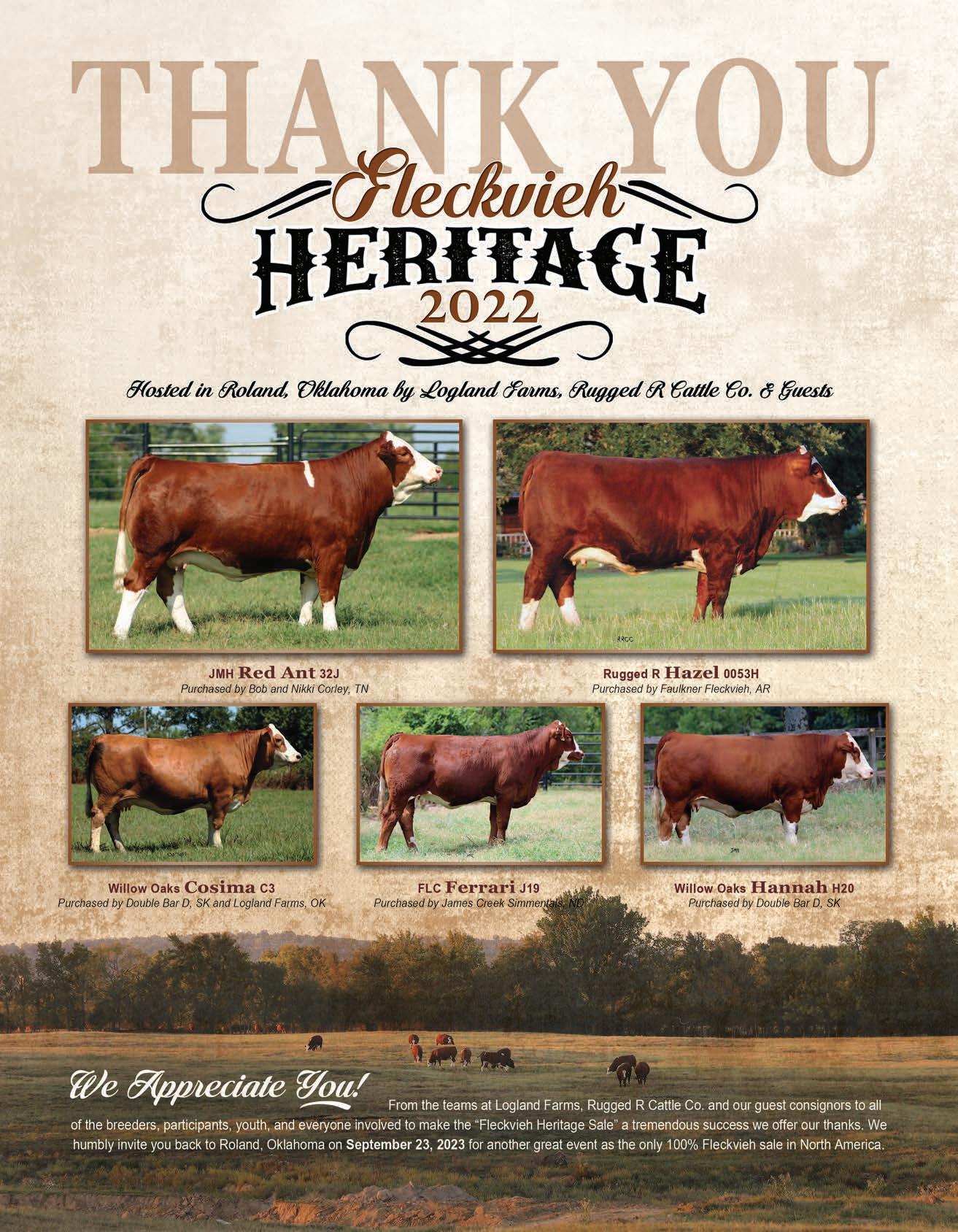

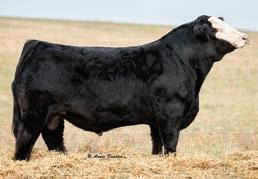

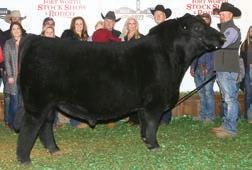


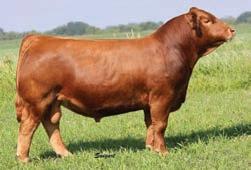



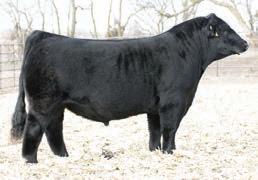



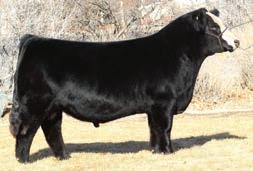

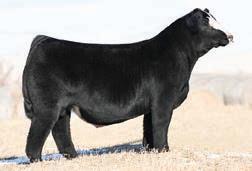
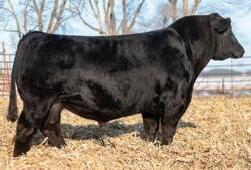
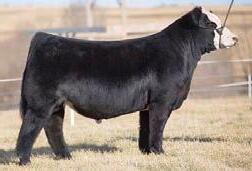

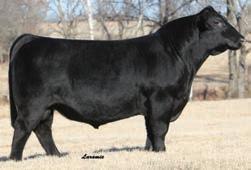

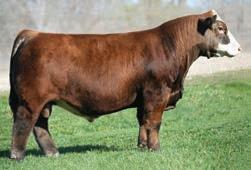
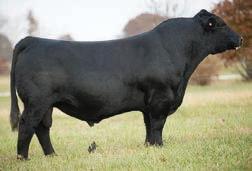
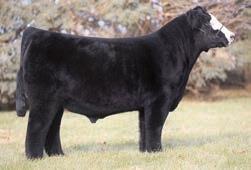

































SSC Shell Shocked 44B By Remington Secret Weapon 185 EPD: CE: 17 $API: 137 $TI: 74 W/C Fort Knox 609F By W/C Bankroll 811D EPD: CE: 1 $API: 141 $TI: 88 Rocking P Private Stock H010 By WLE Copacetic E02 EPD: CE: 13 $API: 139 $TI: 78 JC King of the Road 468H By KBHR High Road E283 EPD: CE: 14 $API: 178 $TI: 98 Ruby NFF Up The Ante 9171G By Ruby`s Currency 7134E EPD: CE: 10 $API: 115 $TI: 68 W/C Night Watch 84E By CCR Anchor 9071B EPD: CE: 17 $API: 146 $TI: 86 THSF Lover Boy B33 By HTP/SVF Duracell T52 EPD: CE: 13 $API: 147 $TI: 90 W/C Pinnacle E80 By W/C Loaded Up 1119Y EPD: CE: 14 $API: 121 $TI: 72 ACLL Fortune 393D By MR TR Hammer 308A ET EPD: CE: 9 $API: 91 $TI: 68 Mr SR 71 Right Now E1538 By Hook`s Bozeman 8B EPD: CE: 16 $API: 155 $TI: 94 HOF New Era 1882J By CLRS Guardian EPD: CE: 14 $API: 190 $TI: 107 Reckoning 711F By W/C Relentless 32C EPD: CE: 8 $API: 111 $TI: 66 TJSC King of Diamonds 165E By LLSF Pays To Believe ZU194 EPD: CE: 12 $API: 111 $TI: 69 PBF Red Paint F88 By W/C Executive Order 8543B EPD: CE: 13 $API: 127 $TI: 76 SC Pay the Price C11 By CNS Pays to Dream T759 EPD: CE: 7 $API: 117 $TI: 80 Next Level 4014J By Dakota Outlaw G974 EPD: CE: 7 $API: 117 $TI: 81 W/C Double Down 5014E By W/C Executive Order 8543B EPD: CE: 15 $API: 116 $TI: 74 JASS On The Mark 69D By W/C Loaded Up 1119Y EPD: CE: 10 $API: 99 $TI: 68 W/C Relentless 32C By Yardley Utah Y361 EPD: CE: 9 $API: 115 $TI: 75 WLE Copacetic E02 By HPF Quantum Leap Z952 EPD: CE: 14 $API: 114 $TI: 79 Holtkamp Clac Change Is Coming 7H By WLE Copacetic E02 EPD: CE: 13 $API: 107 $TI: 74 W/C Cyclone 385H By W/C Bankroll 811D EPD: CE: 13 $API: 142 $TI: 83 LLSF Vantage Point F398 By CCR Anchor 9071B EPD: CE: 14 $API: 128 $TI: 86 PAL/CLAC Meant To Be 823E By Mr HOC Broker EPD: CE: 11 $API: 106 $TI: 67 3/4 SimAngus EPD as of 11.13.22 Full brother to W/C Bankroll NEW NEW NEW NEW NEW 3/4 NAILE and NWSS Champ 3/4 SimAngus NEW NEW NEW NEW NEW NEW NEW NEW NEW NEW 3/4 SimAngus NEW NEW

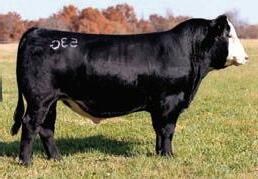
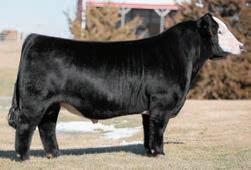
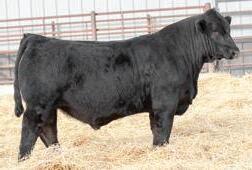

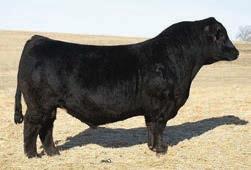

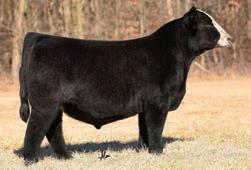
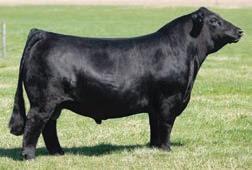
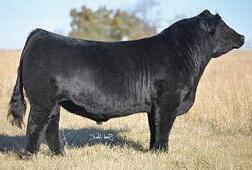
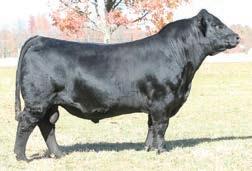
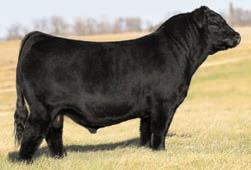
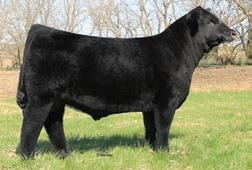
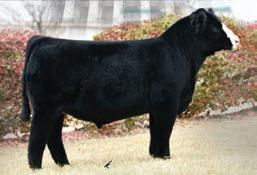
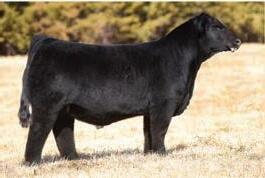
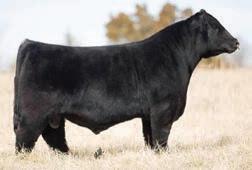

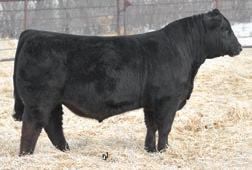
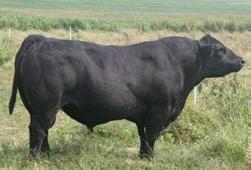
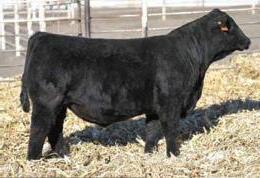
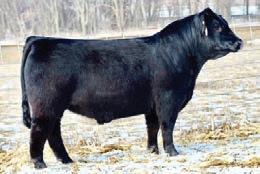
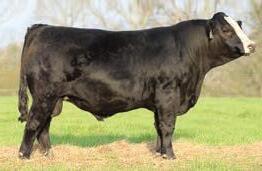



































KSU Bald Eagle 53G By Hook`s Eagle 6E EPD: CE: 16 $API: 183 $TI: 99 WS Revival B26 By LLSF Uprising Z925 EPD: CE: 10 $API: 103 $TI: 67 CLRS Guardian 317G By Hook`s Beacon 56B EPD: CE: 16 $API: 209 $TI: 117 FELT Perseverance 302F By W/C Executive Order 8543B EPD: CE: 16 $API: 120 $TI: 72 W/C Express Lane 29G By Rubys Turnpike 771E EPD: CE: 14 $API: 141 $TI: 85 LLSF DAUNTLESS K07 By HPF/HILL Uprising C104 EPD: CE: 13 $API: 108 $TI: 67 WLE Black Mamba G203 By WLE Copacetic E02 EPD: CE: 13 $API: 136 $TI: 82 LLSF Pays To Believe ZU194 By CNS Pays To Dream T759 EPD: CE: 9 $API: 118 $TI: 78 CLRWTR Clear Advantage H4G By LLSF Vantage Point F398 EPD: CE: 17 $API: 170 $TI: 106 LLW Card Merit 03H By TL Ledger EPD: CE: 10 $API: 111 $TI: 69 TL Ledger 106D By Profit EPD: CE: 9 $API: 112 $TI: 69 OBCC Kavanaugh F236 By OBCC Unfinished Business EPD: CE: 13 $API: 140 $TI: 80 GCC New California 131J By GEFF County O EPD: CE: 3 $API: 95 $TI: 65 LLSF Favored One H98 By LCDR Favor EPD: CE: 8 $API: 133 $TI: 98 Wheatland 3-D 1142J By CKCC LD Dimension 8965 EPD: CE: 9 $API: 120 $TI: 75 Semen available on the best Angus and Clubbie sires too. WHF/JS/CCS Double Up G365 By W/C Double Down EPD: CE: 12 $API: 112 $TI: 71 LCDR Favor 149F By LCDR Witness 541C EPD: CE: 9 $API: 151 $TI: 100 Erixon Bitten 203A By NCB Cobra 47Y EPD: CE: 13 $API: 151 $TI: 90 TJ 50K 485H By TJ Teardrop EPD: CE: 7 $API: 153 $TI: 86 W/C Style 69E By Style 9303 EPD: CE: 17 $API: 132 $TI: 68 www.cattlevisions.com Call for your free book Entire lineup online at: 573-641-5270 Mr Ishee Triple Trailblazer 018H By KOCH Big Timber 685D EPD: CE: 16 $API: 152 $TI: 82 HRCC Hondo 035 By W/C Bankroll EPD: CE: 12 $API: 112 $TI: 76 CDI Innovator 325D By TJ Main Event 503B EPD: CE: 12 $API: 130 $TI: 93 EPD as of 11.13.22 NEW NEW NEW NEW NEW NEW NEW NEW NEW NEW NEW NEW NEW NEW NEW NEW NEW NEW NEW
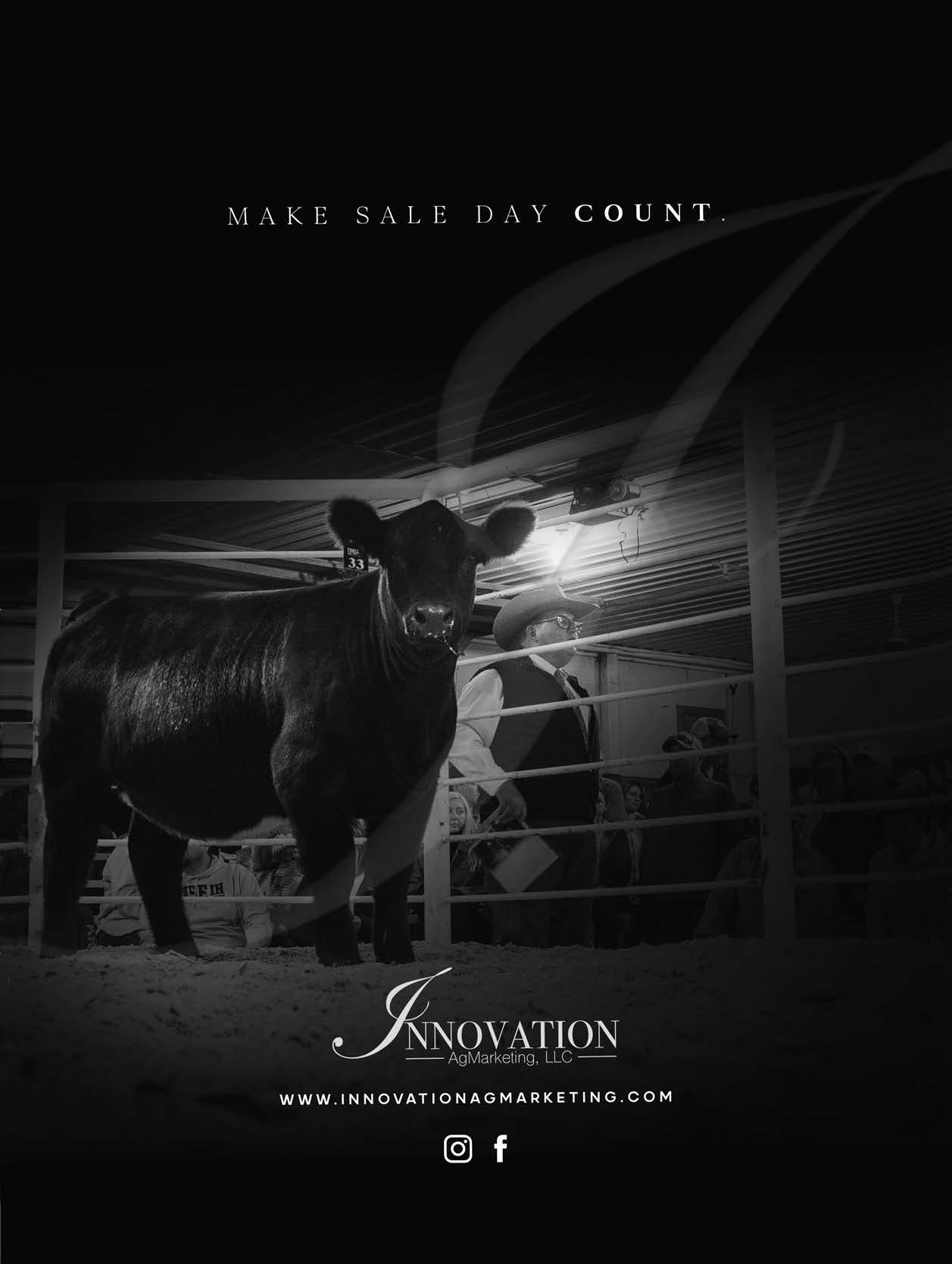









 by Lilly Platts
by Lilly Platts































 – Audrey Redalen, participant
– Audrey Redalen, participant

 by Lilly Platts
by Lilly Platts










































































































































 by Lilly Platts and Dan Rieder
by Lilly Platts and Dan Rieder






























 by Lilly Platts
by Lilly Platts



 by Lilly Platts
by Lilly Platts





































































































































































































































